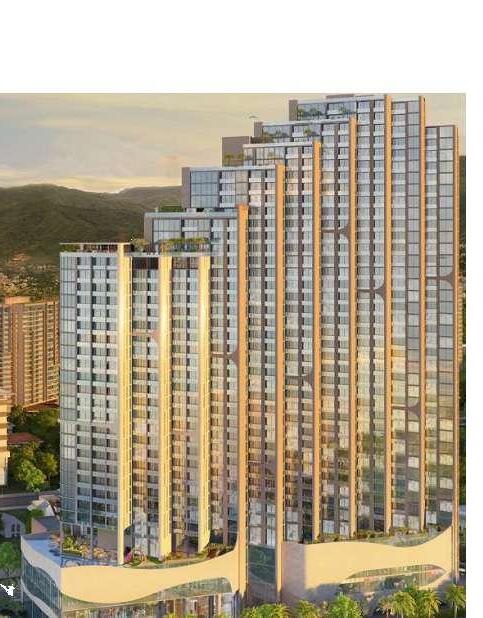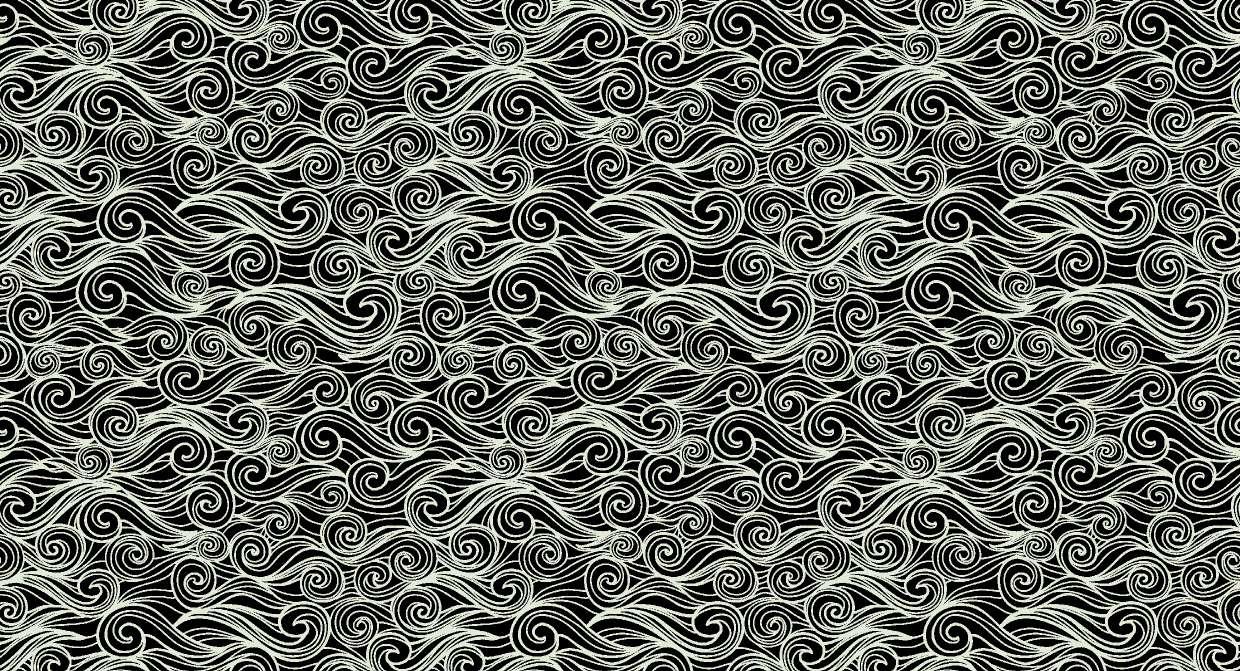
(+84) 942 791 855



Homogeneous Tiles / Ceramic Tiles

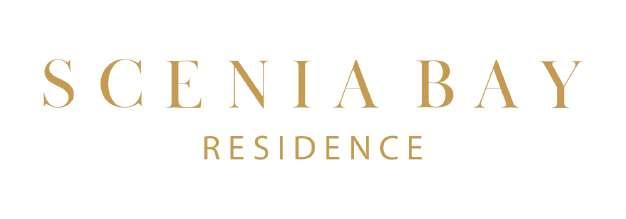



(+84) 942 791 855



Homogeneous Tiles / Ceramic Tiles



On behalf of PMC, we extend our warmest greetings to all Residents and wish you and your family a peaceful, happy, and prosperous life at Scenia Bay Residence.
With the goal of providing you with the most comfortable, safe, and convenient living experience, we have prepared this Resident Handbook to deliver essential information regarding the building’s rules and regulations, residents’ rights and responsibilities, the role of the Management Office and service providers, as well as helpful guidance to support you throughout your stay at Scenia Bay. We believe this Handbook will serve as a useful reference to help you fully enjoy life at Scenia Bay, in a civilized, modern, and secure environment. The information contained herein will be updated from time to time to reflect current practices and will be communicated accordingly to Residents.
We kindly encourage all Residents, their families, and tenants to take the time to carefully read this Handbook to better understand the regulations, thereby contributing to building a friendly, harmonious, and sustainable community.
Sincerely,
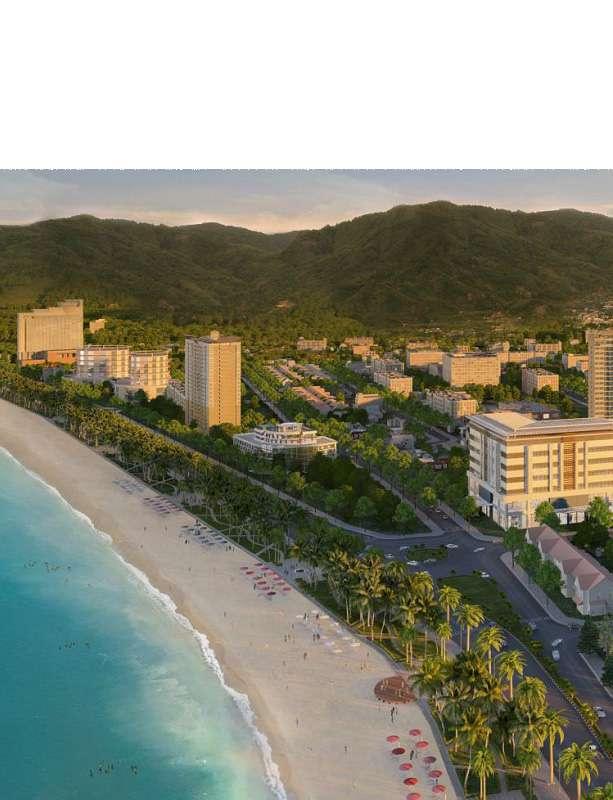



Certain terms used in this Resident Handbook are defined below to ensure consistency and clarity in application.
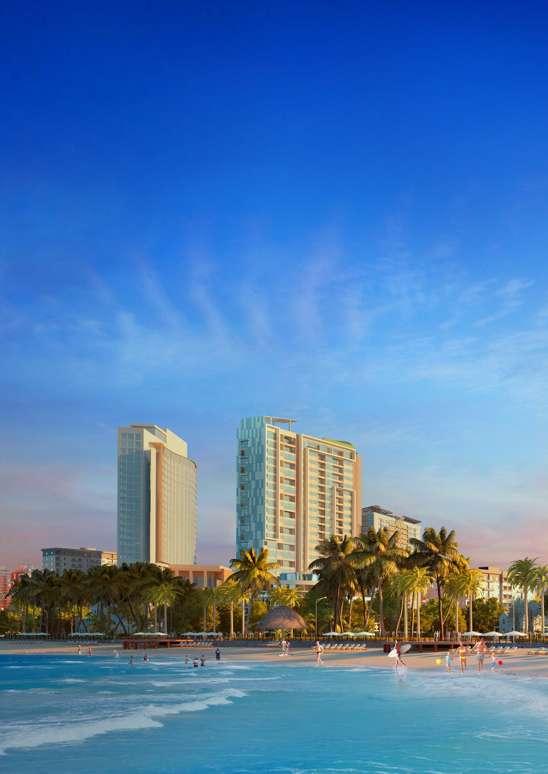

“Common Property”: Refers to “Common Areas and Shared Facilities” that are collectively owned by all Owners within the premises of the Residence. It is distinct from “Private Property” individually owned by each Owner or the Developer. Common Property is managed and utilized in accordance with housing and condominium regulations under applicable laws.
“Private Property of an Apartment”: Refers to the entire floor area of an apartment legally owned by the Owner, including equipment and technical systems located within the boundaries of the unit, as stipulated in the apartment sales contract and relevant legal documents.
“Residence”: Refers to Scenia Bay Residence, encompassing all apartments, common property, public areas, shared facilities, and technical infrastructure within the condominium complex.
“Condominium”: Synonymous with “Residence”, indicating the entire Scenia Bay condominium complex.
“Apartment”: An individual residential unit within the Residence, designed for independent use and meeting minimum legal area requirements as prescribed by law.




“Owner”: An individual or organization that legally owns one or more apartments at Scenia Bay, as evidenced by a Certificate of Ownership, an Apartment Sales Contract, a Long-Term Lease Agreement, or equivalent legal documentation.
“Visitor”: Any individual entering the Condominium upon invitation or with the consent of a resident, including friends, relatives, business partners, or short-term rental guests.
“Resident”: Includes Owners, their family members, apartment tenants, tenants’ family members, domestic helpers, or any individual legally authorized to reside within the Condominium.
“Management”: Refers to the team or company appointed by the Management Office or the Developer to carry out the management, operation, and maintenance of the Condominium, in compliance with applicable laws and building regulations.with applicable laws and building regulations.
“Moving”: Refers to the activities of moving in or out of the Condominium, involving the transport of furniture, decorations, equipment, and personal belongings of residents or tenants.
“Renovation Work”: Encompasses repair, maintenance, upgrades, extensions, or any structural modifications made within an apartment that may impact the building’s structural integrity or shared technical systems. All renovation work must follow the Renovation and Construction Guidelines set forth by the Management Office and comply with current legal regulations.
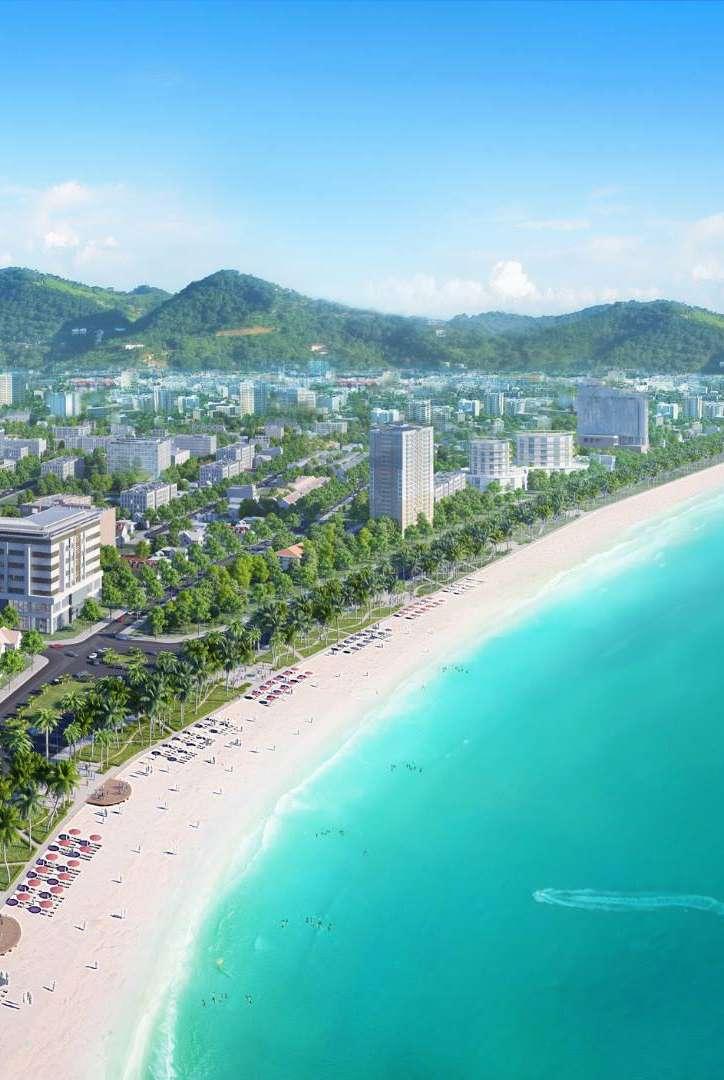







1. Residents planning to move in or move out must complete and submit a Move-In/Move-Out Registration Form to the Management Office at least one (01) working day in advance for review and approval.
2. To ensure resident benefits and effective security control, all assets, furnishings, and items to be moved out of the Residence must be registered in advance with the Management Office. The apartment Owner (or legally authorized representative) is responsible for confirming these items prior to removal.
3. Upon approval, residents must ensure that the moving process is conducted in full compliance and only within the following permitted timeframe:
Monday to Friday 8:00 AM - 5:00 PM Saturday 8:00 AM - 12:00 PM
For Sundays, Public Holidays, or special cases, please contact the Management Office for guidance and assistance.






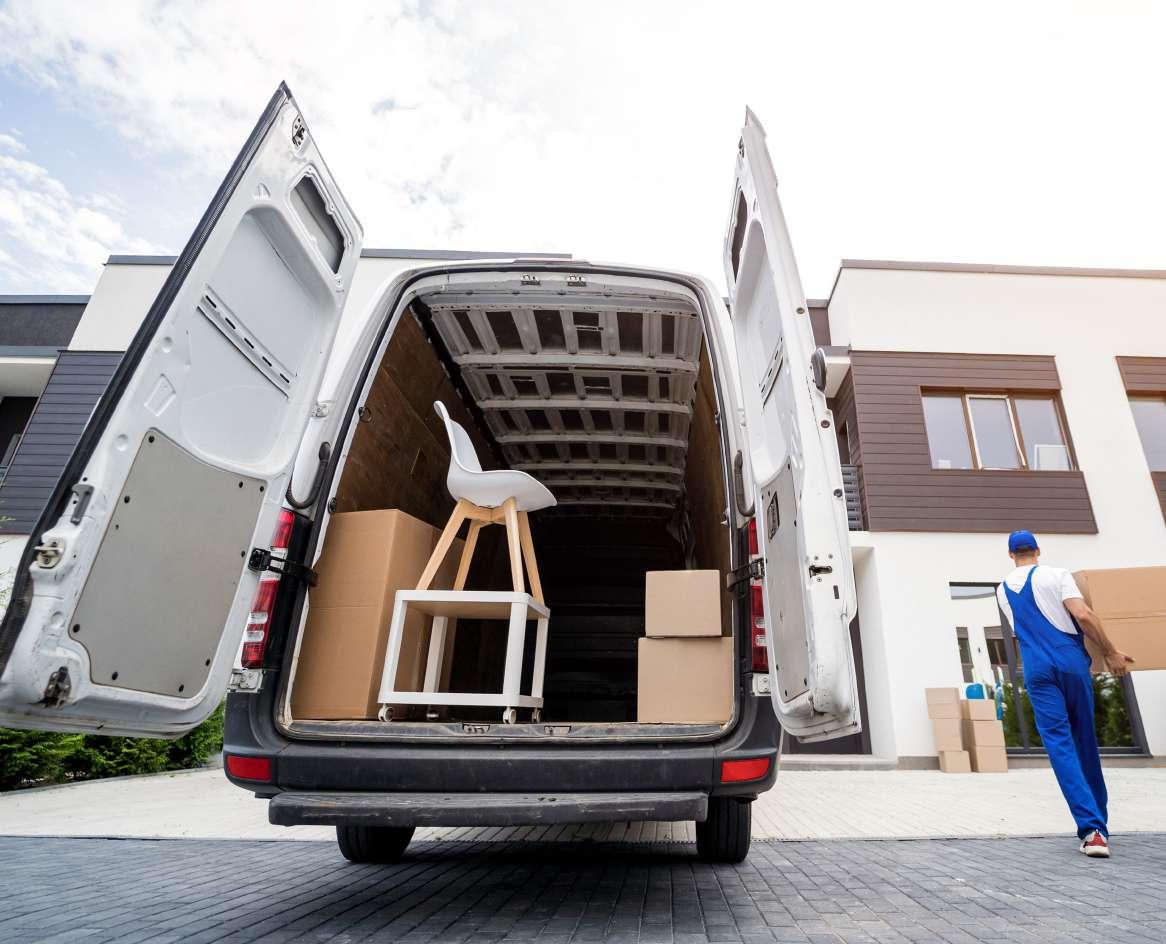
4. All moving personnel must register at the Basement B1 Security Desk before starting their work and are required to wear a Contractor Badge at all times while inside the Condominium. In case of loss or damage, the resident will bear a replacement cost of VND 100,000 per badge.
5. Residents are responsible for protecting elevators and public areas along the moving route to ensure safety and prevent damage to common property.

6. All goods, materials, and airconditioning gas cylinders must be preregistered with the Management Office and transported only via the designated service elevator.
7. When using the service elevator, all moving personnel must strictly comply with the maximum load limit to ensure safe operation.
8. Moving activities must be carried out in an orderly and tidy manner, avoiding noise or disruptions to other residents.


9. Residents are responsible for the conduct and behavior of all moving personnel they hire while they are working within the Condominium.
10. Moving personnel are only permitted to move within the apartment being serviced and along the approved transportation route designated by the Management Office. They are not allowed to roam freely in other areas of the Condominium.
11. Moving personnel must maintain a polite and professional attitude at all times. Any inappropriate behavior or violation of Condominium rules will result in immediate removal from the premises.
12. Transporting goods to apartments via the Reception Lobby is strictly prohibited. All items must be moved from Basement B1 using the designated service elevator, except for handheld items that meet the building’s specific regulations.

13. Only cargo trucks with a height of less than 1.9 meters are permitted to enter the basement. For vehicles exceeding this height, goods must be transferred using intermediary equipment such as hand trolleys or motorized carts. If a vehicle exceeds the maximum height allowed in the parking area or internal roads, loading and unloading must take place outside the building. During the entire loading/unloading process, the driver must remain with the vehicle to ensure that traffic and other vehicles are not obstructed. Additionally, vehicles transporting gas (liquefied petroleum gas - LPG) are strictly prohibited from entering the Condominium parking area.
14. Moving personnel must maintain cleanliness in all public areas and refrain from littering or creating messes.
15. All waste and packing materials must be removed from the Condominium premises immediately after the moving task is completed, and at the end of each day. Waste must be transported via the service elevator or in accordance with instructions provided by the Management Office.



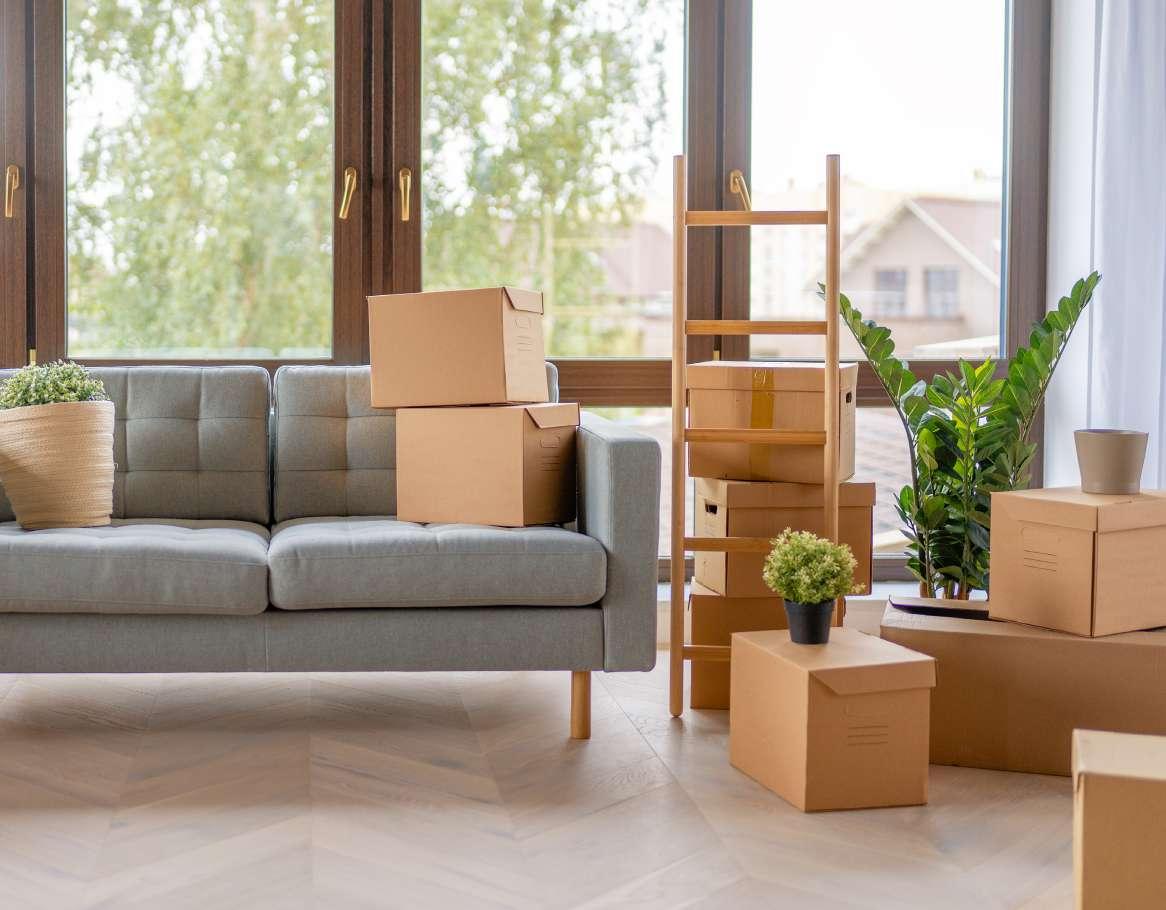

16. Upon completion of the moving process, residents are responsible for notifying the Management Office to conduct an overall inspection of public areas and the registered transportation route.
17. In the event of any damage to public areas or if leftover items or waste are found in common spaces as a result of moving activities, the Management Office reserves the right to hold the Apartment Owner and/or Tenant accountable for repairing such damage and/or removing the waste or leftover items.

Residents are kindly requested to strictly adhere to all interior decoration regulations to ensure safety, minimize risks, and avoid future disruptions to the living environment within the building.
Prior to the commencement of any interior decoration work, all relevant regulations will be clearly communicated to residents and contractors to ensure that construction activities are carried out in full compliance. In particular, residents are kindly reminded to pay close attention to the following matters.
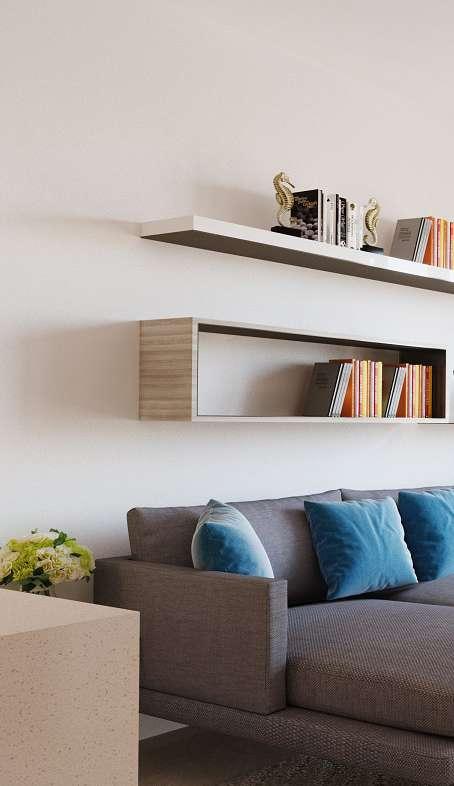
» Residents intending to carry out interior decoration or apartment renovation must register with the Management Office prior to commencement.
» The registration documents must include the design drawings and a completed application form, in accordance with the building’s interior decoration guidelines.
» Residents are responsible for purchasing third-party liability insurance to ensure safety during the construction process.
» Construction is only permitted after receiving official written approval from the Management Office.


Residents are required to pay a construction security deposit in accordance with the building’s interior decoration regulations. This deposit is refundable without interest, upon confirmation by the Management Office that the construction work has been completed and no damage has been caused by the contractor to any public areas or common equipment. In the event of any damage or loss, the Management Office will carry out the necessary repairs and deduct the corresponding costs from the security deposit. If the cost of restoration exceeds the deposit amount, the resident is responsible for paying the difference as notified by the Management Office.


The Management Office reserves the right to adjust construction hours to suit actual conditions and to ensure that construction activities do not disrupt residents’ daily lives within the building.
» Permitted construction hours: Monday - Friday:
y Morning: 08:00 - 11:30
y Afternoon: 14:00 - 17:30


Depending on actual conditions, the Management Office may consider granting permission for work beyond the standard hours. In such cases, the contractor must submit an Overtime Work Request Form to the Management Office at least four (04) hours prior to the proposed start time for approval.
» Saturday: construction is only allowed in the morning from 08:00 to 11:30, and no noisy work is permitted during this time.
» Sundays and Public Holidays: Construction is strictly prohibited

Residents are responsible for ensuring that contractors comply with the following regulations:
» Register with the Management Office for the temporary storage of construction materials and debris in accordance with the regulations.
» Remove construction debris daily to maintain hygiene and ensure safety.
» Storing or disposing of debris in garbage rooms, toilets, sinks, or any public area within the building is strictly prohibited.
» Contractors must bear the daily cost of transporting debris to ensure that shared areas remain clean and orderly.

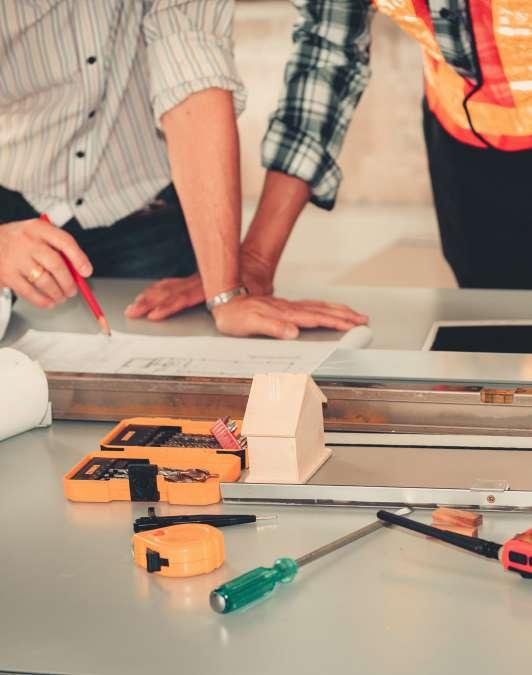
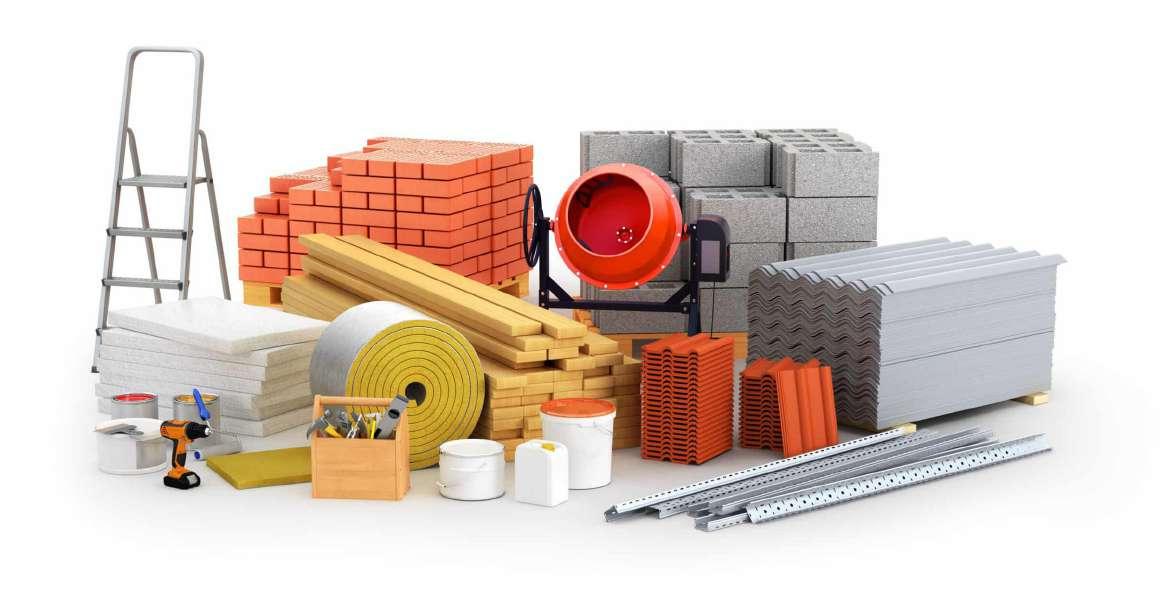

» Residents are strongly advised to minimize construction activities in wet areas such as bathrooms, balconies, toilets, terraces, and outdoor condenser unit areas, as such work may damage or compromise the effectiveness of existing waterproofing layers.
» If residents wish to modify or upgrade any of these areas, prior consultation with the Management Office is required before starting any work.
» Residents are encouraged to request a waterproofing warranty from their contractor to ensure construction quality and warranty coverage in case of future issues.




Residents who intend to use induction cooktops, infrared stoves, or electric grills must consult with the Management Office before purchasing or installing such appliances. This is to ensure electrical safety and to confirm that the power consumption is compatible with the apartment’s electrical design and the building’s overall electrical system.
Residents are kindly requested to thoroughly review the Interior Decoration Construction Guidelines before commencing any work to ensure full compliance with the building’s regulations.
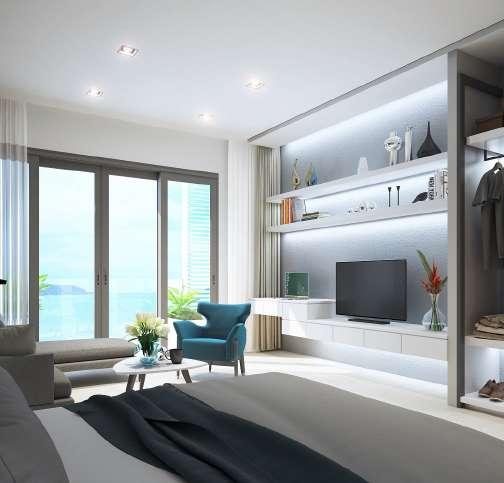





» The Operation Management Fund is used to cover operating, administrative, minor repair, maintenance, and day-to-day upkeep costs for the public areas of the Building.
» The Management Fee will be periodically notified by the Management Office on the 5th, 15th, and 25th of each month via the email address provided by the Owner. Residents are kindly requested to check their email regularly to stay informed about payment notices and ensure timely fulfillment of financial obligations. In the event of a change in email address or if a notice is not received, please contact the Management Office for assistance.
» For convenience, we encourage payment via bank transfer. Account details were provided at the time of apartment handover and will be updated accordingly should there be any changes. However, should you prefer to make a cash payment, please contact the accounting staff at the Management Office or Reception for assistance.




Residents have the right to choose their preferred service providers for their apartment from the following available options:
» For internet and telephone services: VNPT, Viettel, FPT, etc.
» For cable TV services: VNPT, Viettel, FPT, etc.
» For mobile network coverage: Viettel, Mobiphone, Vinaphone, etc.
Apartments are not allowed to install any external TV antennas, radio transmitters/receivers, or any other signal-receiving equipment outside of the unit. Residents are solely responsible for arranging and maintaining their own telephone, cable TV, and internet connections, including all associated installation and monthly service fees.



» The standard electricity supply to each apartment is 220V/50Hz, which allows for the safe use of all compatible electrical appliances.
» To ensure safety, residents must avoid electrical overloads and promptly replace damaged wires or power sockets. All electrical installation or repair work must be carried out by qualified technical personnel.
» Vinh Hai Power Company will record electricity meter readings monthly and issue electricity bills to the apartment Owner on a regular basis.

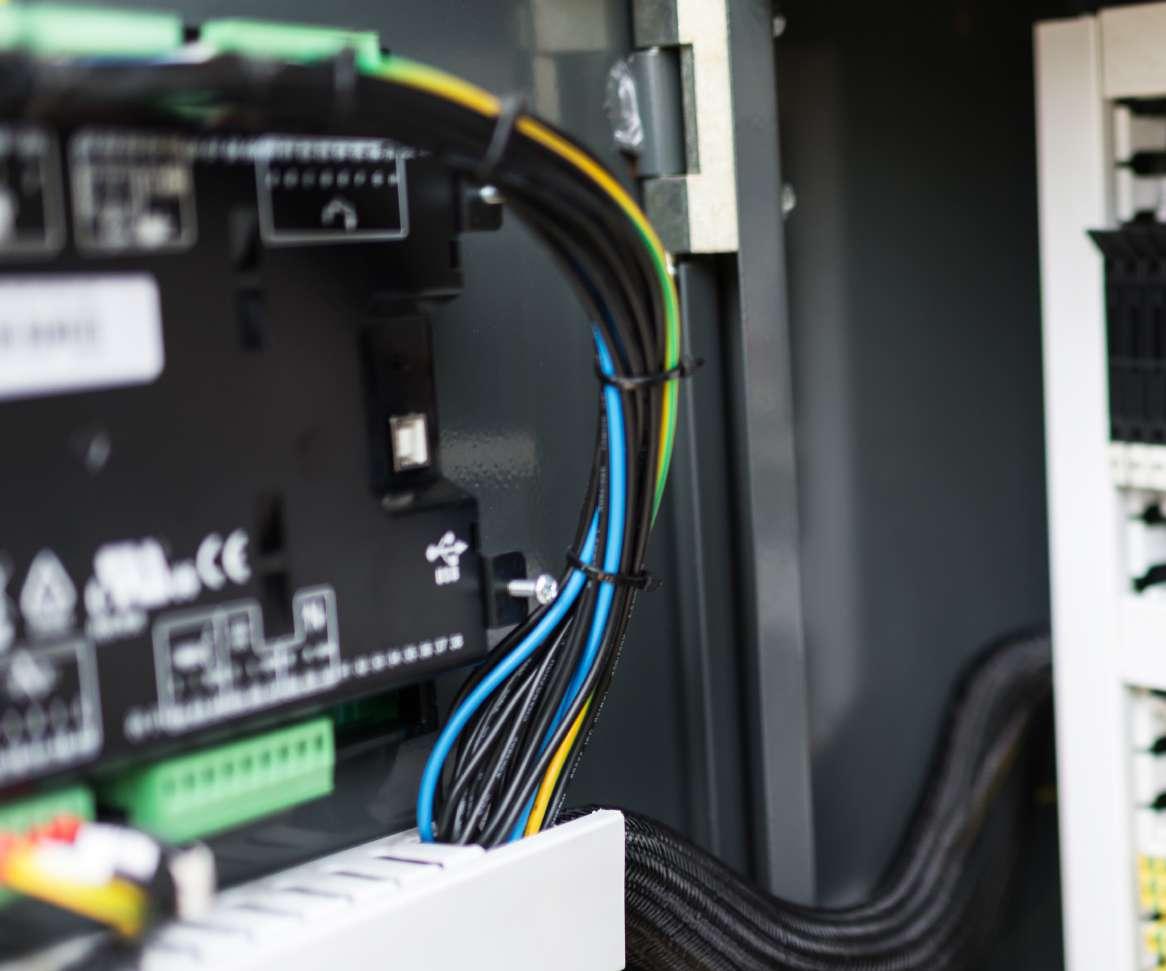

» The Power Company has the right to suspend electricity supply if residents fail to fulfill their payment obligations. The Management Office has no authority to intervene in this matter. Residents are fully responsible for arranging electrical service connections and settling all related usage and service fees.
» To ensure timely electricity supply, the Developer has registered the initial electricity service contract with the Power Company on behalf of residents. Residents are kindly requested to contact the Management Office for assistance in transferring the contract into their own name.


» Each apartment is equipped with a separate water meter. The building’s technical staff will record meter readings between the 20th and 25th of each month. Monthly water bills will be issued together with the management fee notice for the following month. Residents are kindly requested to settle the water bill within the first five (05) days of the following month.
» If any resident fails to make full payment of the previous month’s water bill by the 12th of the following month, a late payment interest rate of 0.05% per day will be applied by the Developer on the outstanding amount, starting from the 6th day of the month until full payment is made. The collected interest will be contributed to the fund designated for the Condominium’s management and operations.



» The connection of water supply hoses for washing machines, as well as any plumbing repair work, must be carried out by designated personnel only. Please note that the water pressure in each apartment is high, and even minor leaks may lead to flooding incidents. Therefore, residents must always ensure that all water taps are securely turned off before leaving the apartment. Residents shall be held responsible for any damage caused to public areas or neighboring apartments resulting from water leakage originating from their own unit.
» In case you will be away on business or absent from the apartment for an extended period, please notify the Management Office to have the unit’s water meter shut off to prevent potential leakage incidents.
» Domestic water is supplied by Khanh Hoa Water Supply Joint Stock Company.



» Each apartment is equipped with a water heater installed above the bathroom ceiling. Residents are kindly advised to carefully read the user manual before operation to ensure safe and efficient usage.
» The kitchen area in Scenia Bay apartments is equipped with an induction cooktop and a range hood. For safety reasons, residents are kindly requested to carefully read the user manual before operating these appliances.
» The user manuals for these appliances are included in the Handover Document Set provided to residents upon receiving their apartment. Residents are also encouraged to guide domestic helpers or any individuals staying in the apartment who may be unfamiliar with these appliances, to ensure proper and safe usage - especially regarding the safety of young children.
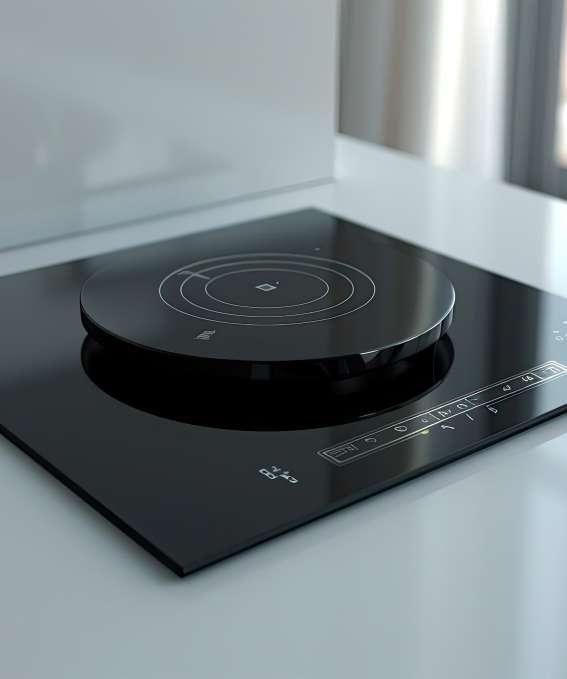
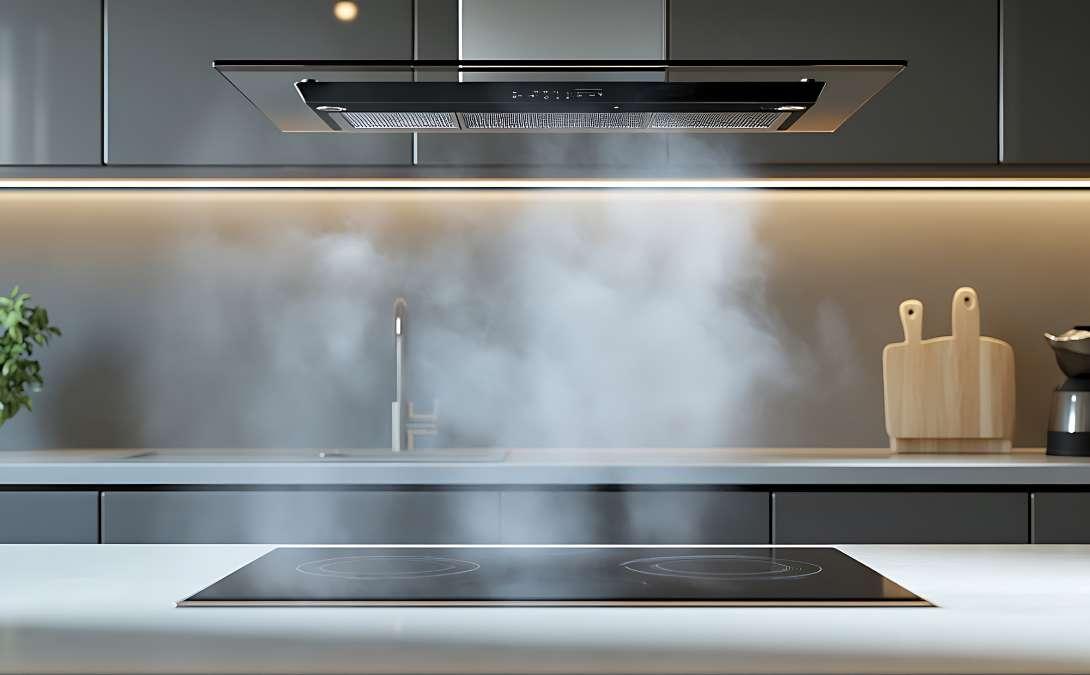

6.1. Inside the Apartment:
a. Heat/Smoke Detectors:
» Installed inside each apartment to detect smoke or abnormal increases in temperature.
» The heat detector will activate when the temperature reaches 60oC. Once triggered, the central fire alarm control panel will receive the warning signal and activate the fire protection systems, including alarm sirens, pressurization fans, and elevator control systems.
Note: Residents are kindly requested to avoid activities that may unintentionally trigger the smoke or heat detectors, resulting in unnecessary alarms and disturbances to others:
» Do not use stoves such as gas stoves, alcohol burners, or charcoal grills inside the apartment;
» Avoid cooking foods that may generate excessive smoke such as: toasted bread, beefsteak, grilled meats, etc.
» Do not burn votive papers or smoke cigarettes inside the apartment.
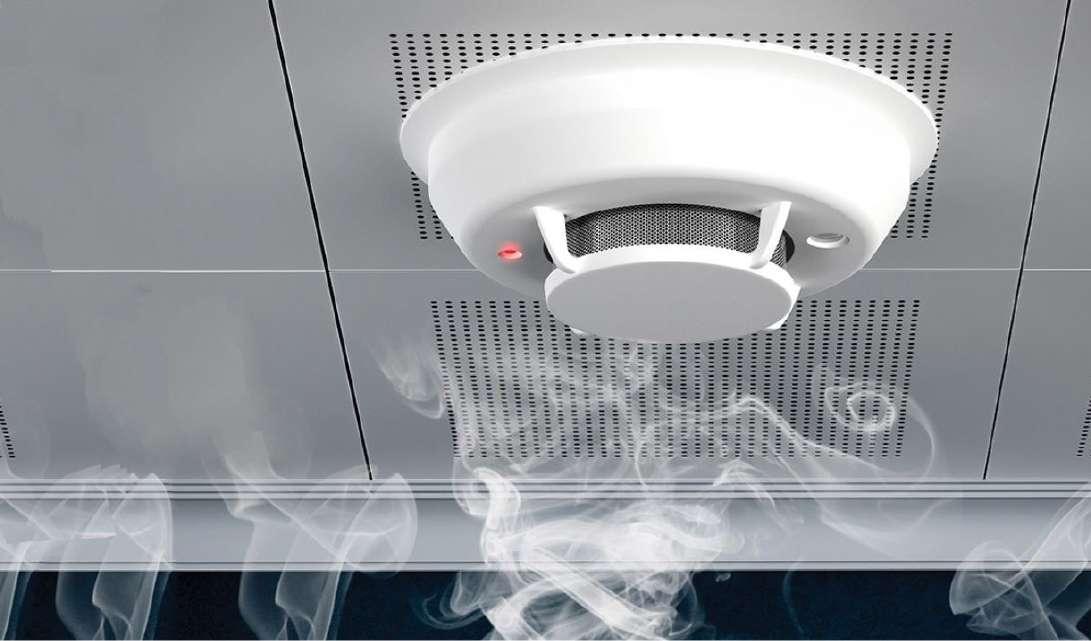

» The automatic sprinkler fire suppression system is installed in both the apartment and public areas to ensure fire safety.
» Sprinkler heads automatically activate when the room temperature reaches 68oC or 93oC at the balcony.
» The water discharge density is 0.08 liters/m2 per second, allowing for rapid fire control and suppression.
Note: Avoid any impact or contact that may break the sprinkler head, which could result in uncontrolled water discharge.
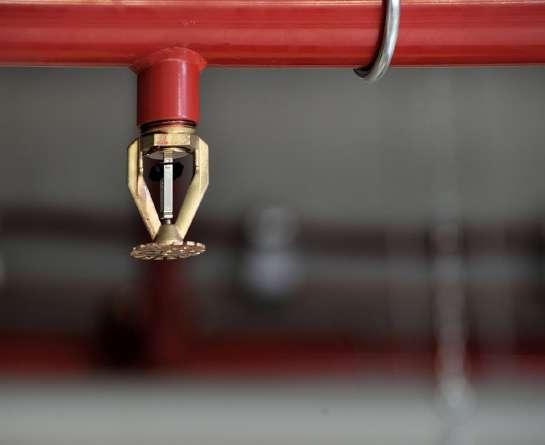
» The fire alarm and fire protection systems in the Condominium have been inspected and officially approved by the relevant authorities.
» Residents are strictly prohibited from altering, adjusting, or relocating any part of the fire safety system to ensure its stability and operational safety.
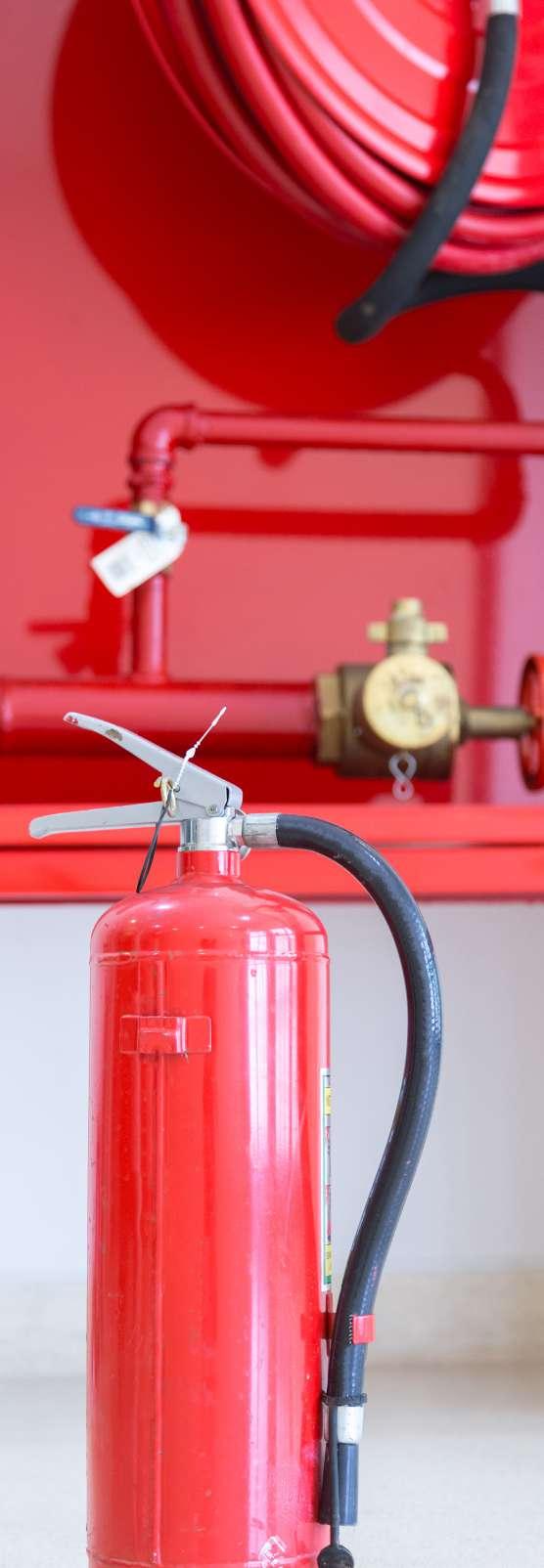

a. Emergency Fire Alarm System:
» Installed in the corridor areas on each floor, allowing residents to activate the system in case of an emergency.
» If a fire or explosion is detected, residents should break the glass panel on the “Break Glass” box or pull the emergency lever to activate the alarm and alert the entire building.
Note: The fire alarm system is to be activated only in the event of an actual fire emergency. Residents must not interfere with the system - whether intentionally or accidentally - when no emergency exists.
In cases where the fire alarm system is activated without just cause, the resident may be held responsible for any resulting damages or consequences.
b. Smoke & Heat Detectors:
» Installed in corridor areas, garbage rooms, and electrical technical rooms to detect smoke or abnormal heat levels and provide timely alerts.
c. Automatic Fire Sprinkler System:
» Installed in floor corridors and garbage rooms, the sprinkler system helps automatically control and extinguish fires when temperatures exceed the safety threshold.


d. Firefighting Equipment in Corridor Areas:
» Firefighting Cabinet: Includes a fire hydrant valve and a fire hose reel.
» CO2 Fire Extinguisher: Used to extinguish fires involving electrical equipment or flammable liquids.
» Dry Powder Fire Extinguisher: Used to put out small fires caused by solid materials, flammable liquids, or combustible gases.
Note: Residents should familiarize themselves with the locations of firefighting equipment in the corridor areas in advance, to ensure proper use in case of an emergency.


Emergency staircases are located around the elevator area, with one emergency stairwell provided for each tower. These escape routes are intended for emergency use only; residents are advised to refrain from using them unless absolutely necessary.
¾ The doors of emergency exit stairwells are designed to prevent fire and toxic smoke from entering the stairwell area; therefore, they must remain closed at all times to ensure safety.
¾ Residents must not obstruct emergency exit doors in any manner, nor place any objects that could block the evacuation path, to ensure a clear and accessible route during emergencies.

» All residents are responsible for registering all occupants residing in their apartment. To complete registration, please fill in the appropriate form (guidance is available at the Reception Desk) and provide full personal information such as full name, phone number, workplace address, etc. Once completed, the form should be submitted to the Management Office or Reception for recordkeeping and issuance of a Security Access Card.
» In the event of a change in Residents or Tenants, please submit a written notification (using the designated form) to the Management Office at least one (01) week in advance to ensure timely coordination and support.
» Apartment Owners are responsible for coordinating with the Management Office to settle any outstanding or unpaid fees before or at the time of a change in tenancy.
» Residents are kindly requested to complete permanent or temporary residence registration in accordance with current legal regulations.








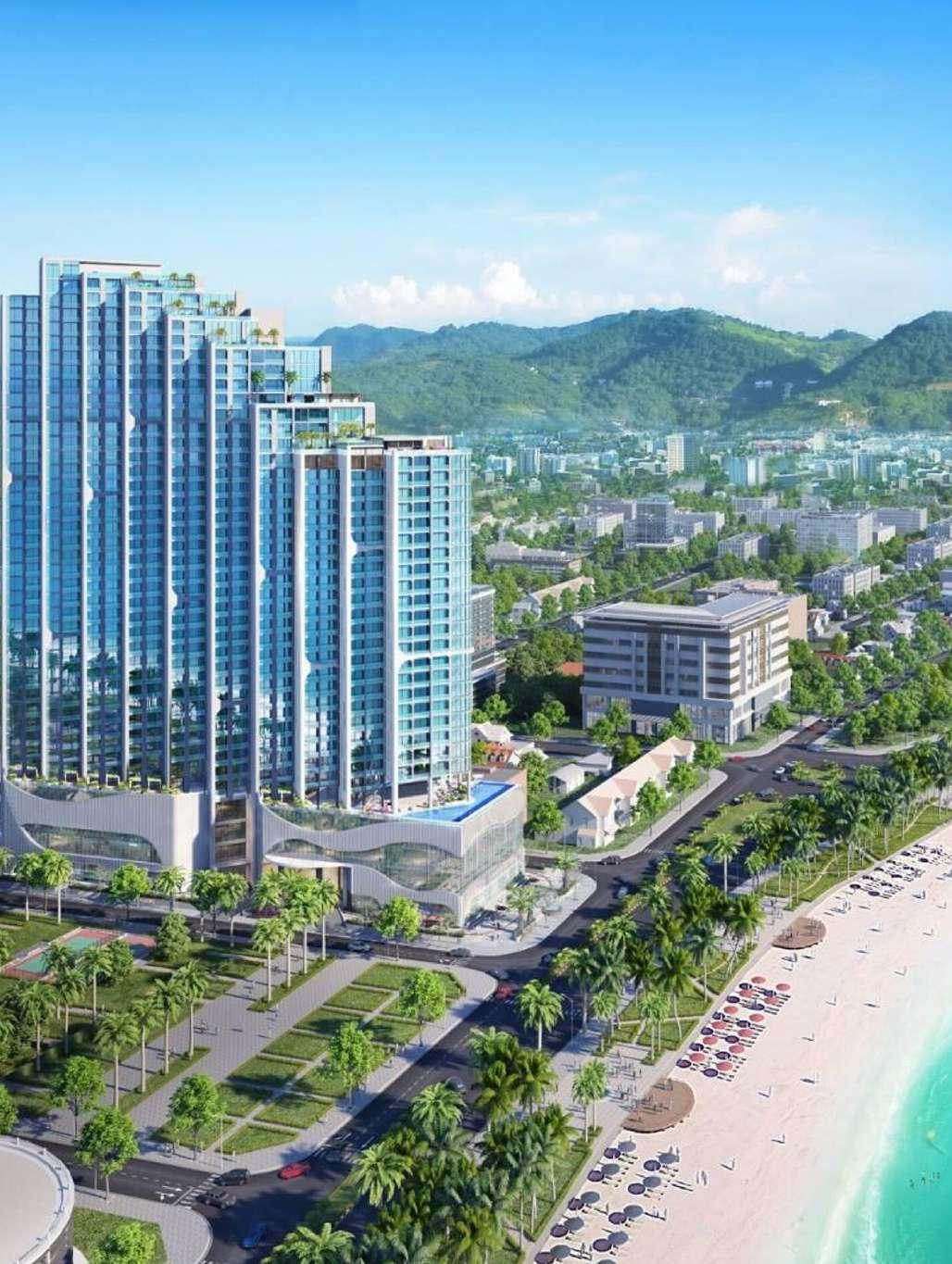








PMC has been officially selected by the Residents and the Management Office as the service provider for the operation and management of Scenia Bay Residence, effective June 1st, 2023.
¾ Building Management Office:
Address: Ground Floor, Scenia Bay Residence, 25-26 Pham
Van Dong Street, Vinh Hai Ward, Nha Trang City, Khanh Hoa Province.
Phone: (0258) 389 2222 - Hotline: 0942 791 855
¾ Operating Hours of Each Department:
y ADMINISTRATIVE DEPARTMENT:
Monday to Friday: 08:00 AM - 05:30 PM
Saturday: 08:00 AM - 12:00 PM
Sundays & Public Holidays: Closed
y RECEPTION DESK:
Monday to Sunday: 06:30 AM - 09:30 PM
Public Holidays & Tet: 08:00 AM - 05:30 PM
y TECHNICAL DEPARTMENT:
On duty 24/7, every day of the year.
¾ Note: Outside the above operating hours, residents may contact the Building Management Office hotline for support and assistance.


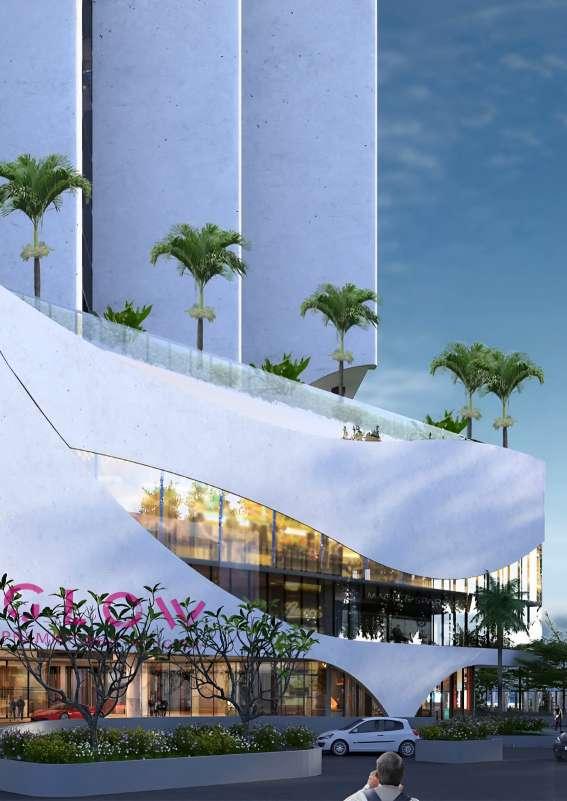

The staff working at Scenia Bay Residence includes members of the Management Office and operations personnel, who are responsible for the full-time (24/7) management and operation of the building to ensure a safe and comfortable living environment for all residents.
To support the Management staff in fulfilling their responsibilities and to maintain professionalism in building operations, residents are kindly requested not to ask staff members to perform personal tasks beyond their assigned duties.

Important Notice:
» Management staff are strictly prohibited from requesting or suggesting gratuities or tips from residents under any circumstances.
» If residents have any concerns or complaints related to this matter, please report them immediately to the Management Office for prompt resolution.



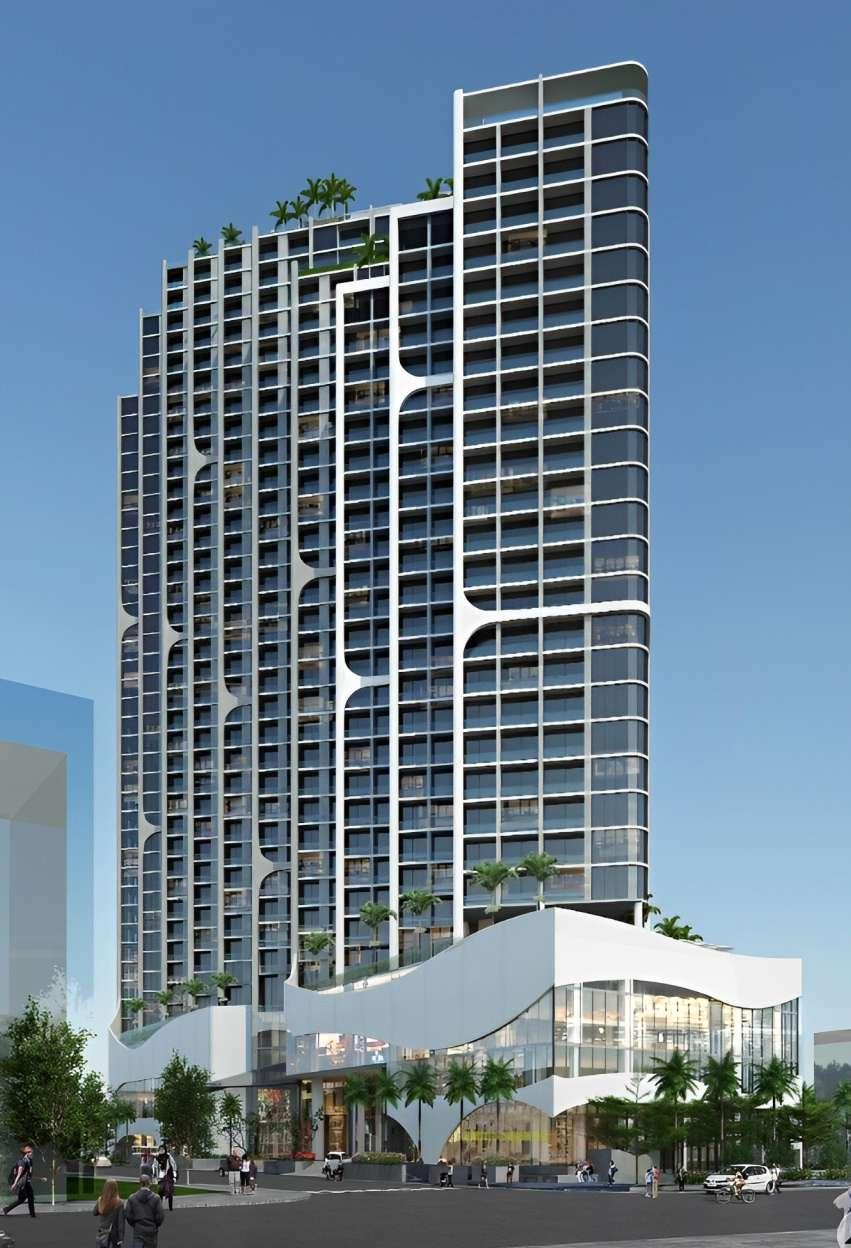

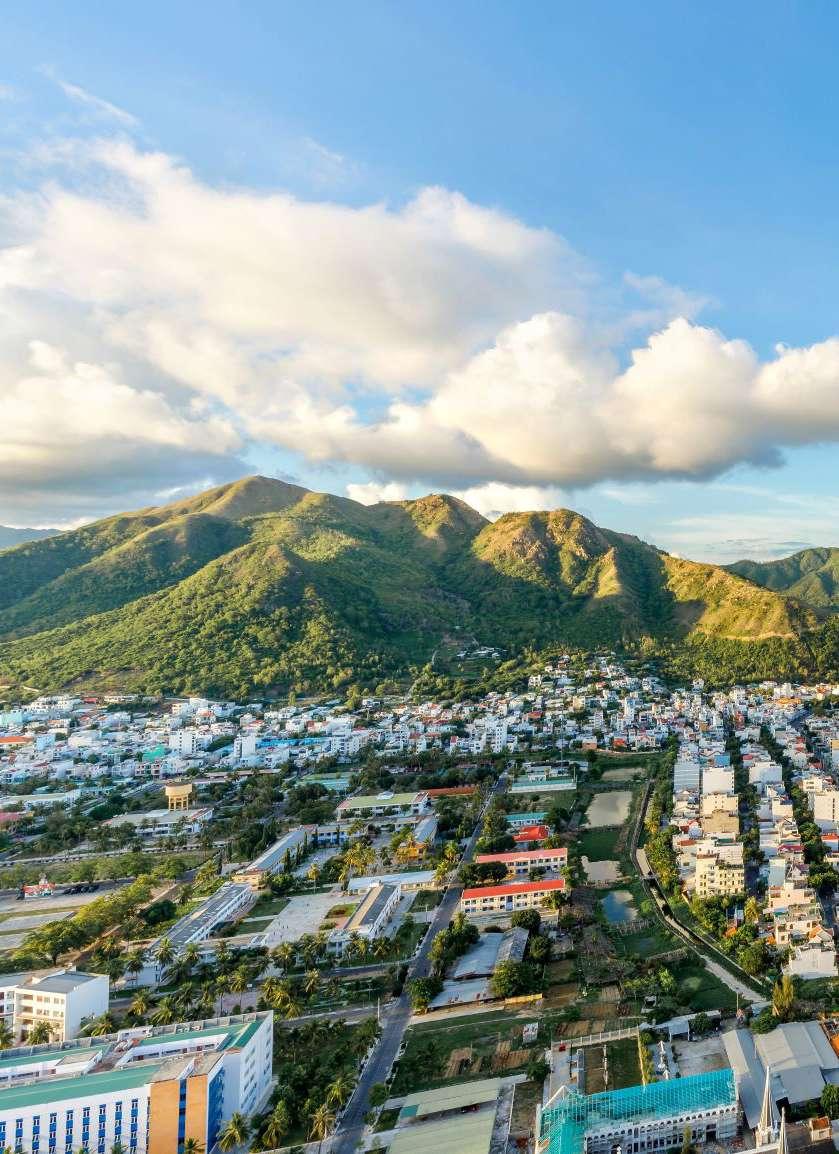







The parking area is located on Basement Level B2 of the building. All vehicle owners are responsible for complying with the Parking Regulations, which are posted in the basement area, to ensure safety and order during use.
¾ The Developer/Management Office engages a professional security service provider to oversee, maintain, and manage the operations of the parking area.
¾ For overall safety, security personnel are authorized by the Management Office to relocate any improperly parked vehicles from the parking area or building premises without prior notice.
¾ The Management Office reserves the right to suspend parking services for any vehicle owner who violates the Parking Regulations or fails to cooperate with security staff or the Management Office in resolving such violations.
¾ Residents who wish to register for monthly parking are kindly requested to obtain the registration form from the Management Office or Reception, complete all required information, and return the form for processing.


Monthly parking fees are applied in accordance with current regulations and will be communicated to residents as follows:
Per Entry
9
Applicable to Scenia Bay residents only
Overnight parking is not allowed for visitors. If it occurs, a full fee is charged. 75% discount for residents.
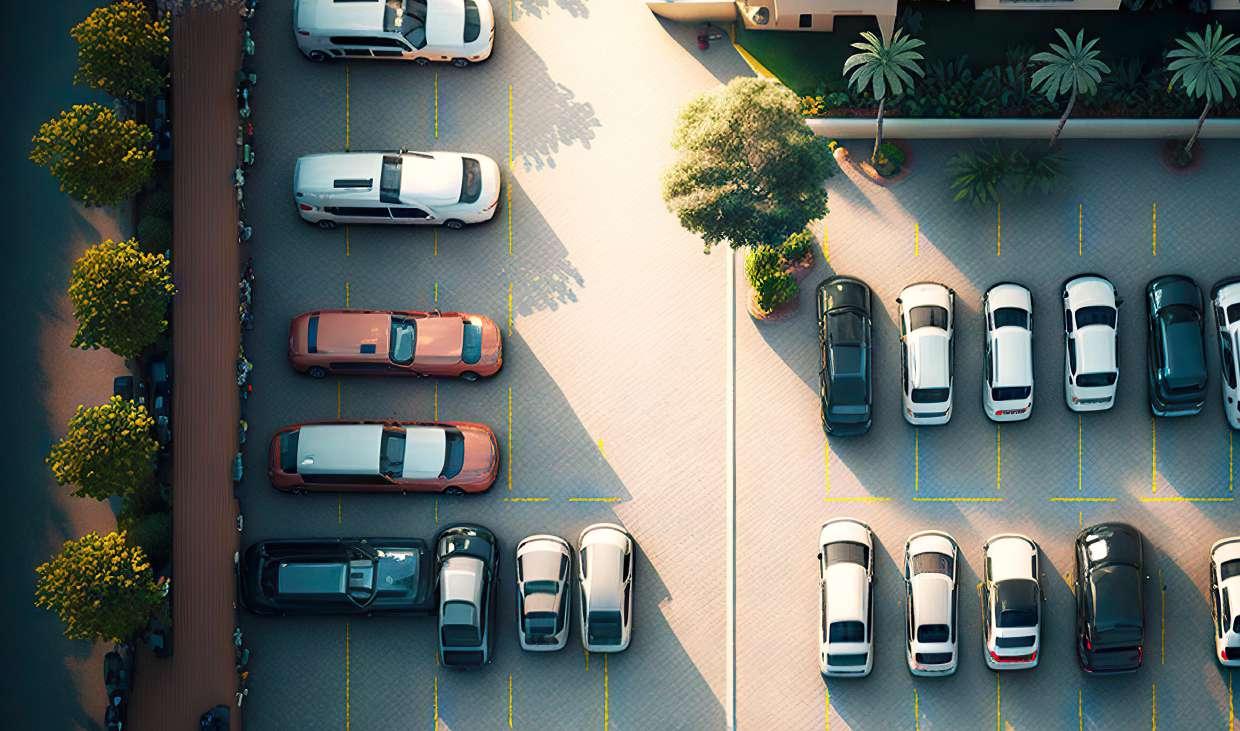

¾ Parking fees will be announced by the Management Office periodically, in accordance with actual operational conditions.
¾ The maximum allowable vehicle height in the parking area is 1.9 meters. Any vehicle exceeding this height is not permitted to enter or circulate within the premises.
¾ There are no reserved parking spots for any individual. Parking arrangements must follow general building regulations.


¾ Residents are responsible for informing their guests to provide personal details and the apartment they are visiting at the security checkpoint. Guest vehicles may only park in the designated guest area if space is available. Overnight guest parking is not permitted unless prior written approval is obtained from the Management Office.
¾ Commercial vehicles owned or operated by residents may only park on the premises with prior written approval from the Management Office.

¾ Heavy transport vehicles such as forklifts, fuel trucks, container trucks, trailers, etc., are not allowed to enter the premises unless prior written approval has been obtained from the Management Office.
¾ Improper parking is strictly prohibited, including:
y Along traffic lanes within the building.
y In restricted areas (e.g., in front of electrical rooms, elevator lobbies, emergency exits, etc.).
y Outside designated spaces or blocking other vehicles by parking across marked spaces.
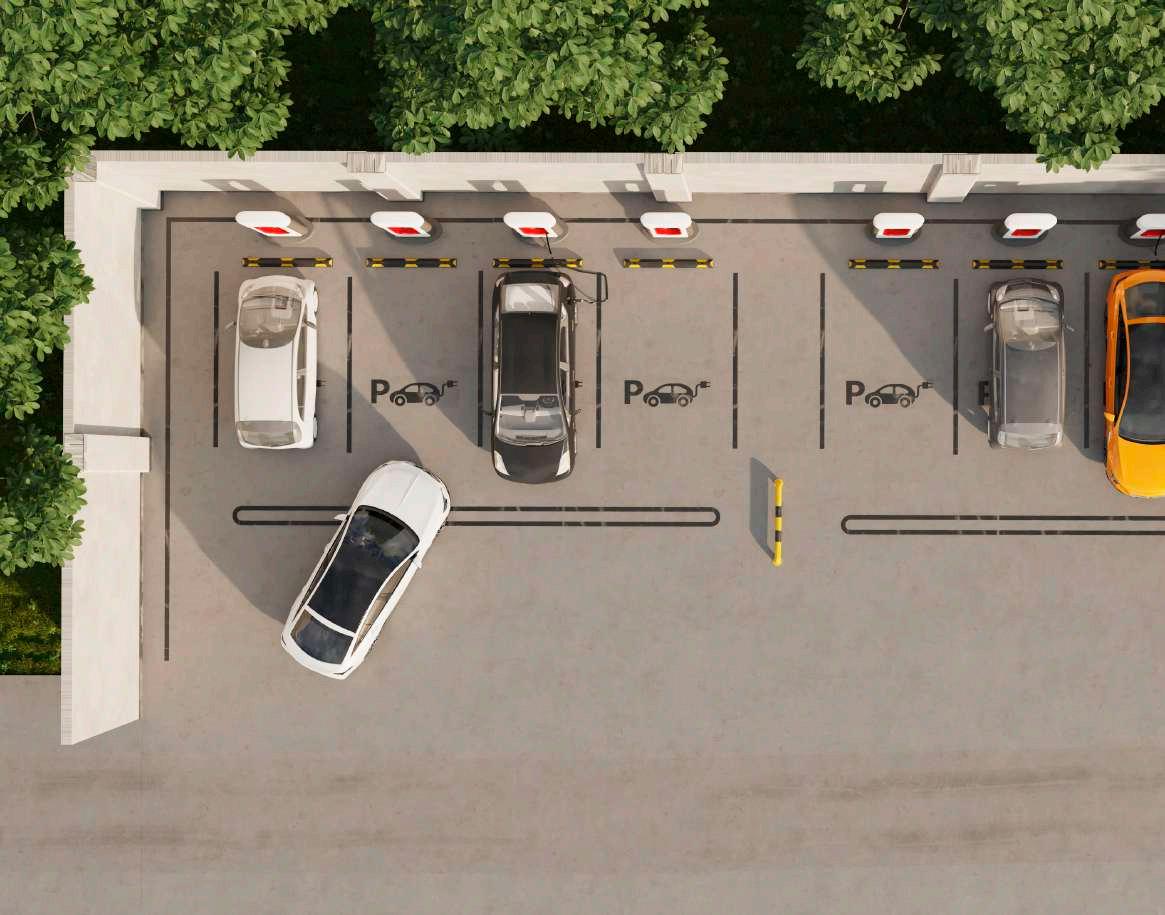


¾ Strict compliance with traffic signs, correct driving lanes, and speed limits within the premises is required.
¾ Fire safety regulations must be strictly followed at all times in the parking area.
¾ Vehicle repair, maintenance, or washing is not allowed in the parking area or any common area of the building.
¾ Smoking, gambling, sleeping, or gathering in a disruptive manner is strictly prohibited within the parking premises.
¾ Vehicle owners/operators are fully liable for any damage caused due to negligence or violations of these regulations.
¾ Do not lock the vehicle’s steering when parked in the parking area to ensure proper management and emergency handling when necessary.
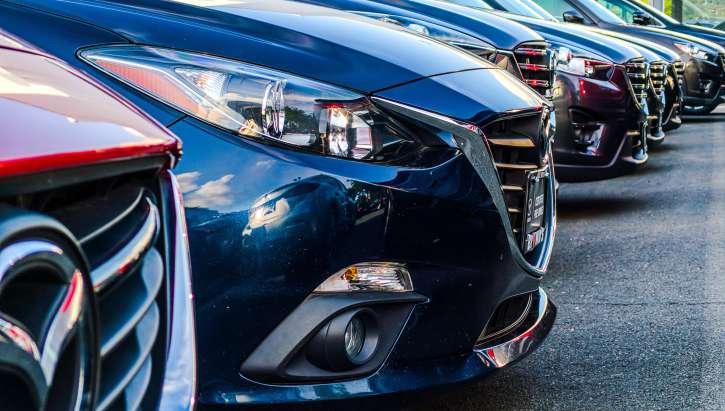

¾ The parking area must not be used to store personal belongings. Any items left behind or found in the parking lot will be handled at the sole discretion of the Management Office.
¾ In case of a lost parking ticket/card, the vehicle owner must immediately notify the checkpoint so that the vehicle can be isolated and necessary procedures carried out. The Management Office reserves the right to withhold the vehicle until valid proof of ownership is provided or the original ticket/card is recovered.
¾ Residents may park their bicycles in the designated motorbike parking area free of charge but are solely responsible for the security of their own property. Security staff and the Management Office are not liable for any damage or loss not caused by their negligence.
¾ The Management Office reserves the right to adjust or amend parking regulations without prior notice whenever deemed necessary to ensure effective and practical parking operations.
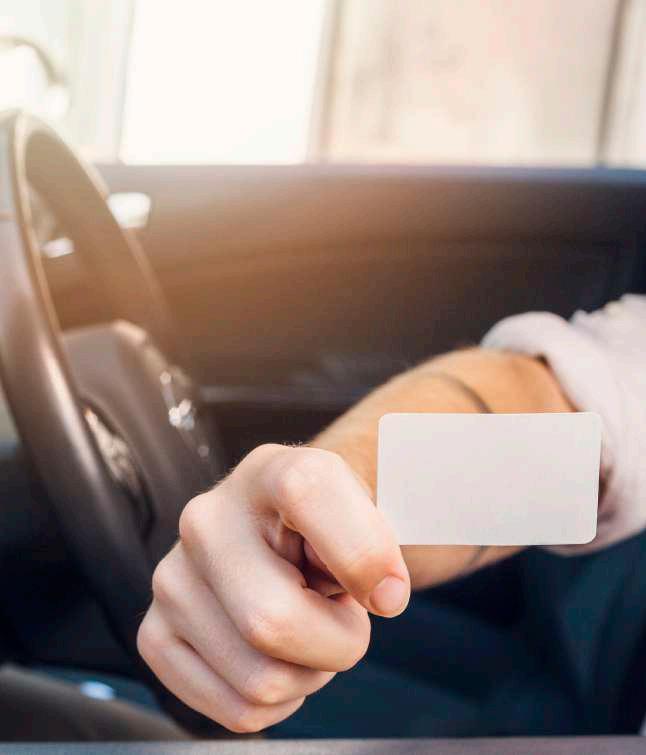




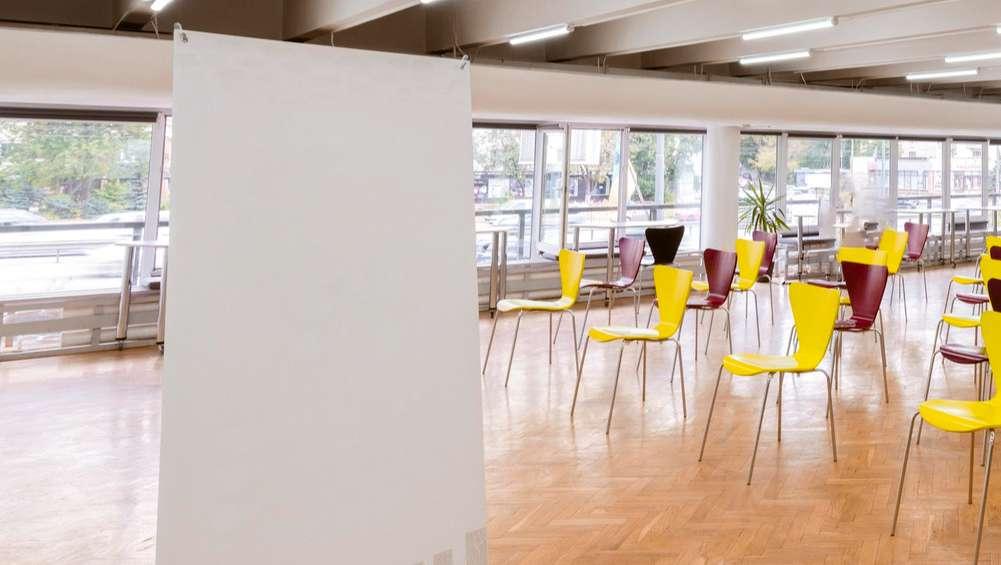
The community room is located on the 3rd floor, between Tower A and Tower B, providing a space for residents to receive guests or hold meetings and gatherings at Scenia Bay Residence. To preserve and protect common property, residents are kindly requested to adhere to the following regulations when using the community room:
¾ Operating hours: 07:00 AM - 09:00 PM
¾ Residents must register to use the room at least 24 hours in advance, and up to one month in advance.
¾ Each apartment is allowed to use the room a maximum of once per month. Usage rights are non-cumulative.
¾ Residents may register directly with the Management Office at least 24 hours before the desired time. Reservations are processed on a first-come, first-served basis.


¾ Cancellations must be notified to the Management Office at least 24 hours before the reserved time.
¾ A refundable deposit of VND 1,000,000 is required for each use. This amount will be returned without interest after the Management Office has inspected the room and confirmed it has been cleaned and no public equipment has been damaged.
¾ To avoid false bookings, residents who do not use the community room after registration without cancellation notice will be prohibited from booking again for the next two (2) months.
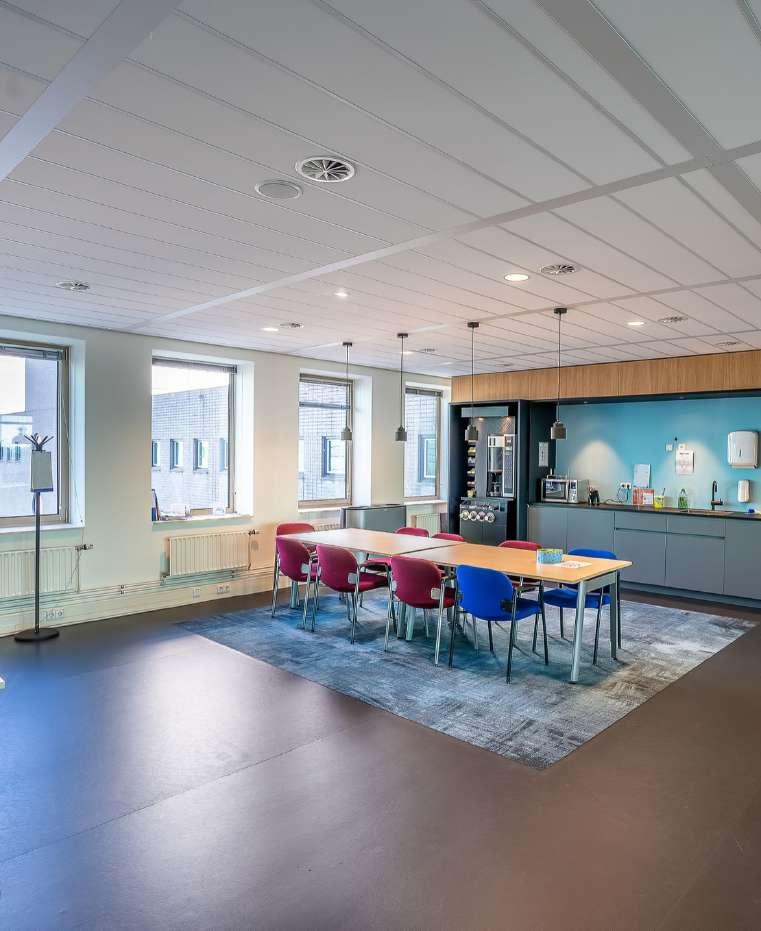

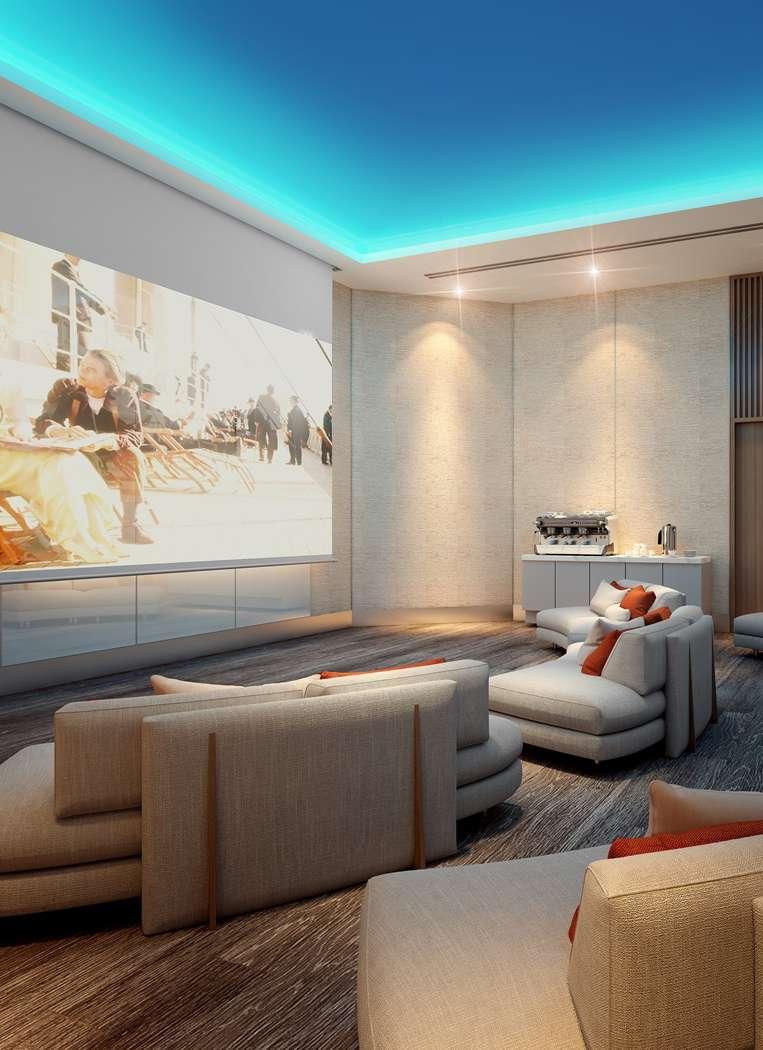


¾ Residents who reserve the room are responsible for cleaning it after use. All waste and discarded items must be properly disposed of in the designated public trash bins.
¾ For large gatherings, a maximum of thirty (30) participants is allowed. The resident is responsible for ensuring all attendees are aware of the Building Regulations.
¾ The community room is strictly for recreational purposes (such as birthday parties, casual gatherings, or social events). Religious, political, gambling, or other activities prohibited by law are not allowed. Commercial activities may be considered on a case-by-case basis and only with prior written approval from the Management Office.
¾ Residents may perform simple decorations such as hanging balloons, but must not damage walls or existing furnishings. All decorations must be removed immediately after use.
¾ All furniture and equipment (if brought in and approved) must be removed from the community room immediately after use, or within 24 hours if there is no upcoming booking. The Management Office reserves the right to dismantle and remove any remaining items after this period and charge all associated costs to the resident who hosted the event.
¾ Cooking is strictly prohibited in the community room area.
¾ The Management Office reserves the right to deduct part or all of the deposit if the res-ident violates any of the above regulations.

The adult and children’s swimming pools are located on the 31st floor of the Building. Residents are kindly requested to follow the swimming pool regulations during use, as outlined below:
¾ Open daily: 06:00 AM - 09:00 PM (subject to change depending on actual conditions)
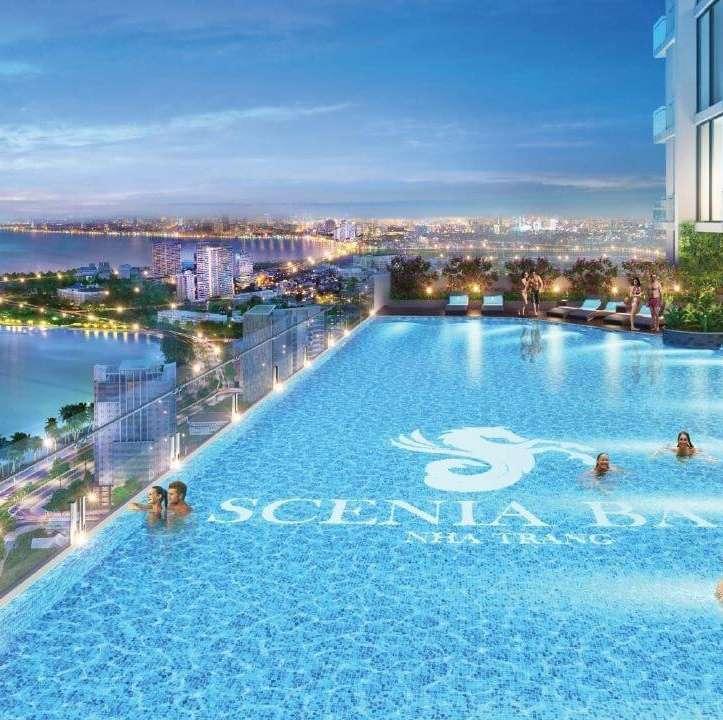

¾ For safety reasons, swimming is not permitted between 09:00 PM and 06:00 AM and/or during heavy rain or thunderstorms.
¾ Each household (apartment) may invite up to two (02) guests to use the swimming pool. All guests must be accompanied by a resident at all times. Residents are responsible for ensuring their guests comply with the swimming pool’s rules and regulations. Depending on pool occupancy, the Management Office reserves the right to deny access to guests.
¾ All residents and guests use the swimming pool at their own risk. Pool rules are displayed near the pool, and users are responsible for reading and adhering to all safety warnings while using the facility.
¾ Users must shower and rinse their feet before entering the pool. Individuals with unbandaged wounds, open sores, eye infections, or contagious diseases are not permitted to use the pool.
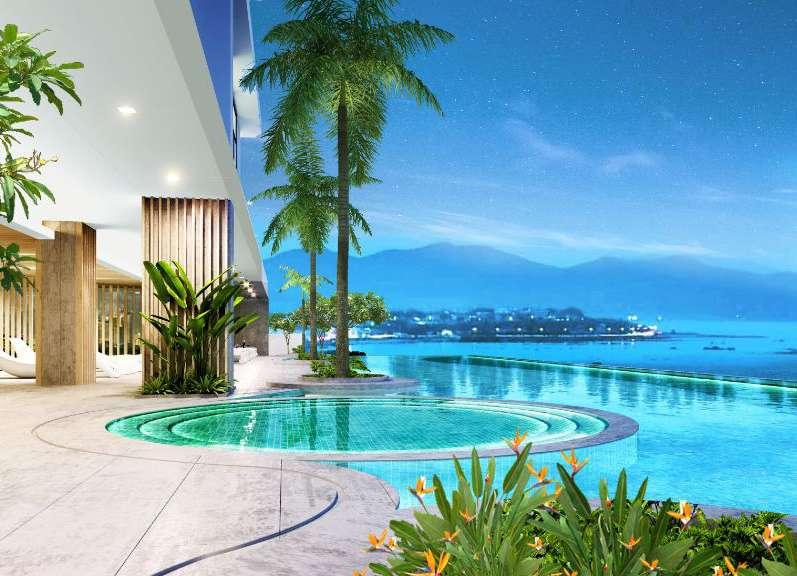


¾ Swimmers must bring a towel to dry themselves before entering the lobby or using the elevators.
¾ The following actions are strictly prohibited in and around the swimming pool area:
y Smoking, spitting, blowing the nose, or engaging in any unhygienic and/ or inappropriate behavior is strictly prohibited;
y Pets are not allowed in the swimming pool area;
y Skateboards, surfboards, snorkels, diving equipment (such as masks, snorkels, diving suits), goggles, protective masks, bulky toys, inflatable boats, and other potentially dangerous items such as hairpins, hair rollers, safety pins, and glassware are not allowed in the pool area.
y Ball games, frisbee, surfing, cycling, skateboarding, and similar activities are prohibited.
y Glass items and/or other fragile or sharp objects are not allowed in or around the pool area.
y Jumping from elevated surfaces, loud or aggressive behavior, and dangerous games are prohibited.
y Eating and drinking are not allowed within two (02) meters of the pool edge.
¾ Do not use the swimming pool after a heavy meal, alcohol consumption, or excessive physical exertion.
y Inappropriate swimwear that may cause discomfort or offense to others is not allowed.
y T-shirts and/or non-swimwear clothing, as well as wearing slippers in the pool, are not permitted.



¾ Children under 12 years of age or shorter than 1.4 meters must be accompanied by a parent or guardian, who is fully responsible for their safety and proper behavior while using the pool.
¾ Private swimming instructors are not allowed to conduct swimming lessons without prior written approval from the Building Management Office.
¾ Rescue equipment placed around the swimming pool is intended strictly for emergency use and must not be used for any other purpose.
¾ Poolside equipment must not be removed from the area. Pool chairs may not be reserved. Personal belongings must be taken when leaving the pool area.
¾ The Management Office reserves the right to close the swimming pool for cleaning, maintenance, repairs, or any other necessary reason.
¾ Portable audio devices may be used in the pool area as long as they do not disturb or annoy other users.
¾ The Building Management Office / The Management Office shall not be held liable for any risks, injuries, or losses (if any) incurred or arising from the use of this swimming pool by residents and guests.
¾ Depending on actual conditions, the Management Office may revise the swimming pool usage regulations without prior notice.
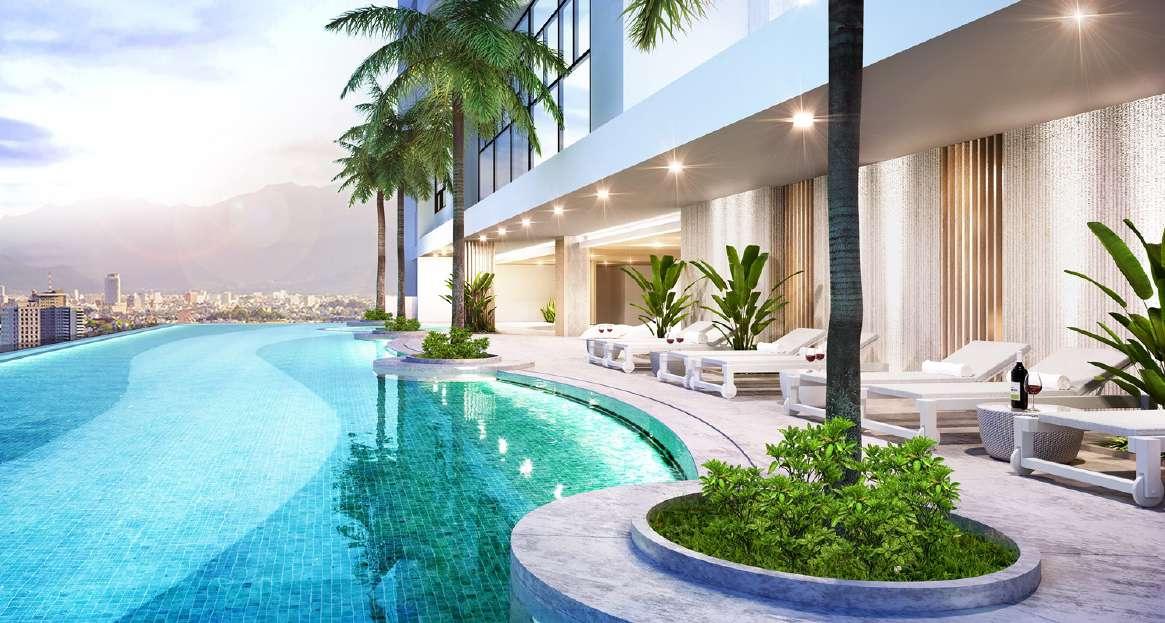


The Children’s Playroom is located on the 27th floor of Tower B.
To help preserve and maintain common property, residents are kindly requested to comply with the following rules while using the playroom:
¾ The playroom is open daily from 06:00 to 21:00, except during maintenance. The Management Office reserves the right to adjust operating hours or temporarily close the playroom for maintenance without prior notice.
¾ Each apartment may invite up to two (02) guest children to use the playroom. This policy is subject to change depending on actual circumstances.


¾ Guests may only use the children’s playroom if pre-registered and accompanied by a resident, who is responsible for ensuring that the guest follows the building’s rules and regulations.
¾ Guests are not allowed to enter or use the playroom unaccompanied by a resident.
¾ Pets are not allowed in the playroom to ensure hygiene and safety for children.
¾ Users of the playroom must refrain from noisy or disruptive behavior and avoid damaging any equipment in the area.
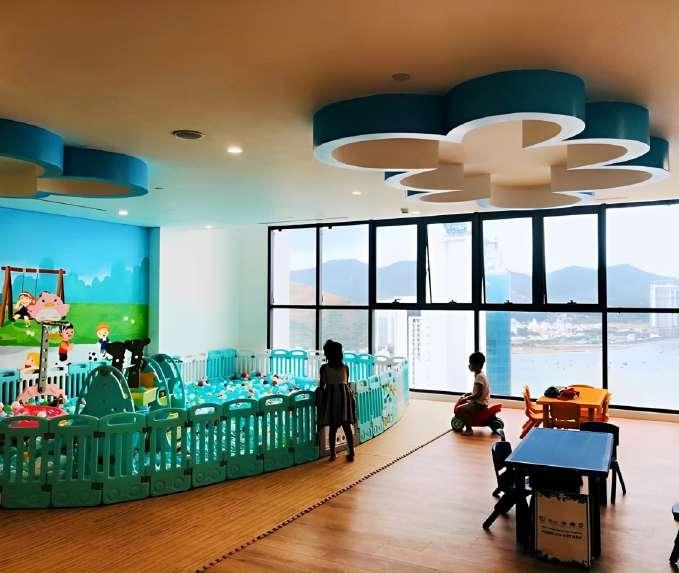

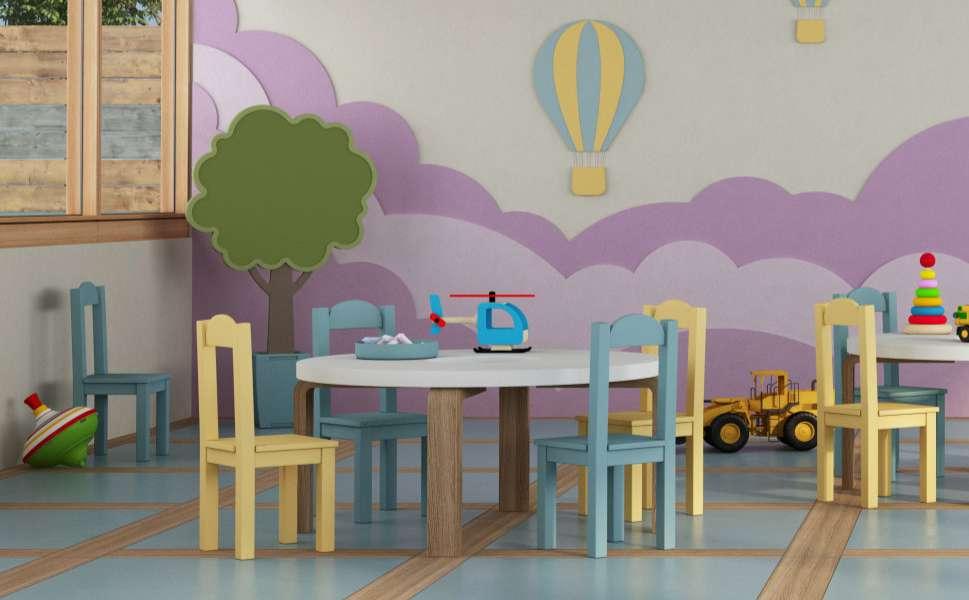
¾ Users are responsible for preserving the playroom equipment. The Management Office has the right to charge for repair or replacement if any damage or loss is caused by misuse from residents or their guests.
¾ All equipment in the playroom is arranged to ensure safety and convenience for residents. Residents are not allowed to damage, move, or replace equipment without permission from the Management Office.
¾ Sharp objects or any items deemed dangerous by the Management Office are strictly prohibited in the playroom.
¾ High heels or hard-soled sports shoes must be removed before entering the playroom, as they can damage the play surface.


¾ Users are responsible for maintaining appropriate noise levels and ensuring proper behavior of their accompanying guests.
¾ he playroom is designed for children only. Children under seven (07) years of age must be supervised by an adult-preferably a parent or guardian-who is fully responsible for their safety and behavior.
¾ Eating and drinking are not allowed in the playroom to maintain cleanliness and safety for all users.
¾ Ball games, frisbee throwing, rollerblading, biking, tricycling, skateboarding, shouting, or any other disruptive behaviors are strictly prohibited in the playroom area.
¾ The Management Office shall not be held liable for any damage, accidents, injuries, or unfortunate incidents occurring during the use of the playroom and surrounding areas.
¾ The rules and regulations may be amended by the Management Office when necessary. Any changes will take effect seven (07) days after written notice is sent to residents.
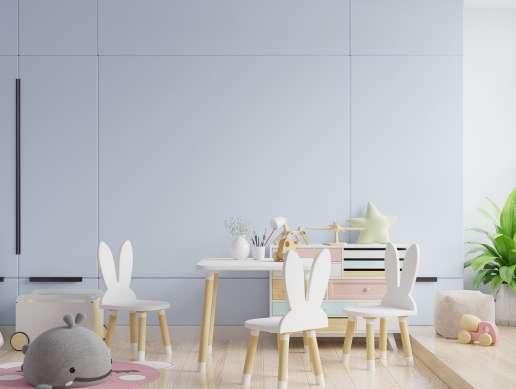

The reading room and library are located on the 3rd floor and are available for Scenia Bay residents during the following hours:
y Morning: 08:00 AM - 12:00 PM
y Afternoon: 01:00 PM - 05:00 PM
¾ Please take note when using the reading room
y Please keep noise to a minimum to maintain a quiet reading environment.
y Eating or bringing odorous food into the room is not allowed.
y Pets are not allowed in the reading room.
y Follow the borrowing and returning policies (if applicable).
y Take care of public property, including books, tables, chairs, and other facilities in the room.
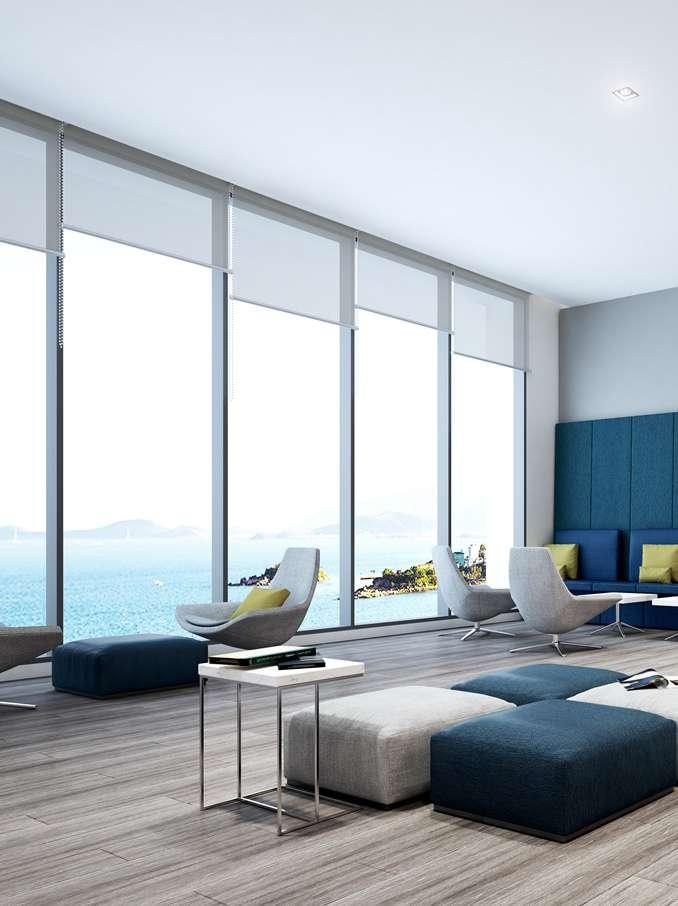

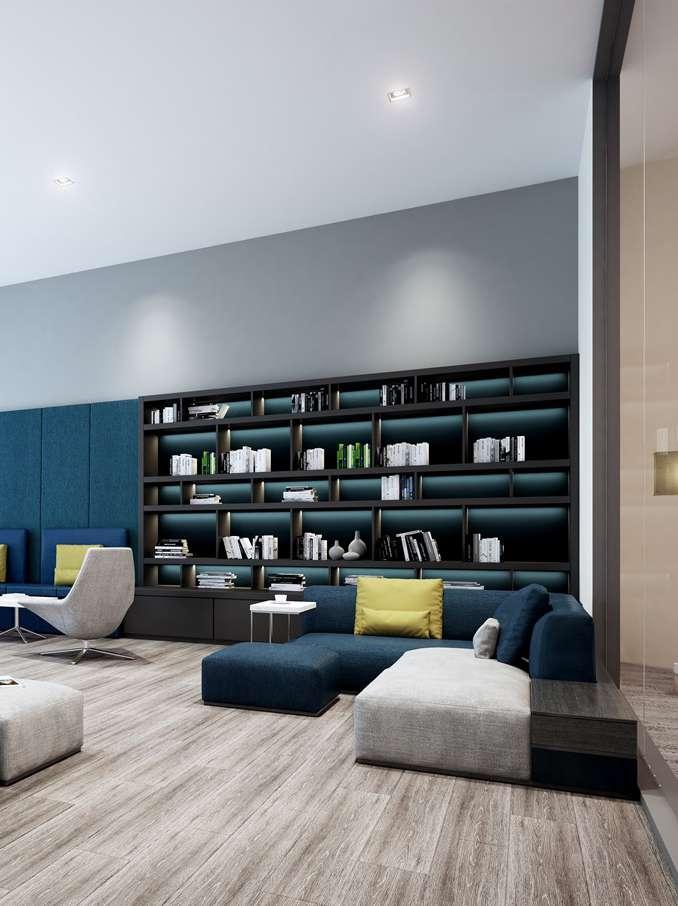

Garden areas are located on the 5th, 28th, and 37th floors of the building and serve as communal spaces for residents. Please observe the following rules when using the garden areas:
¾ Only residents and their guests are allowed to use these amenities.
¾ Children must be accompanied by a parent or guardian, who is fully responsible for their safety and behavior.
¾ Ball games, running, or noisy activities are not permitted in these shared spaces.
¾ Smoking is strictly prohibited in the garden areas.

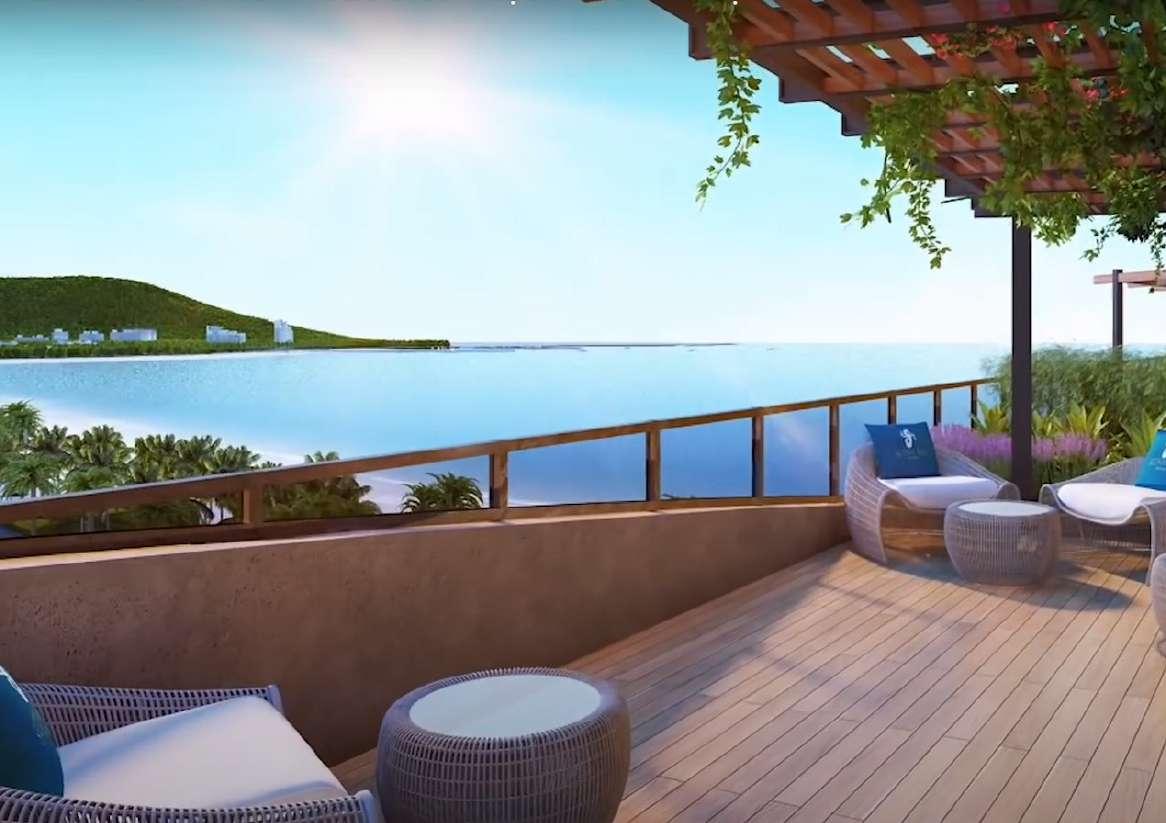



¾ Residents using the garden early in the morning or late at night should minimize noise to avoid disturbing others.
¾ Residents using the garden early in the morning or late at night should minimize noise to avoid disturbing others.
Note: Residents are kindly requested to respect shared spaces and follow the rules to maintain a civilized and comfortable living environment for everyone.

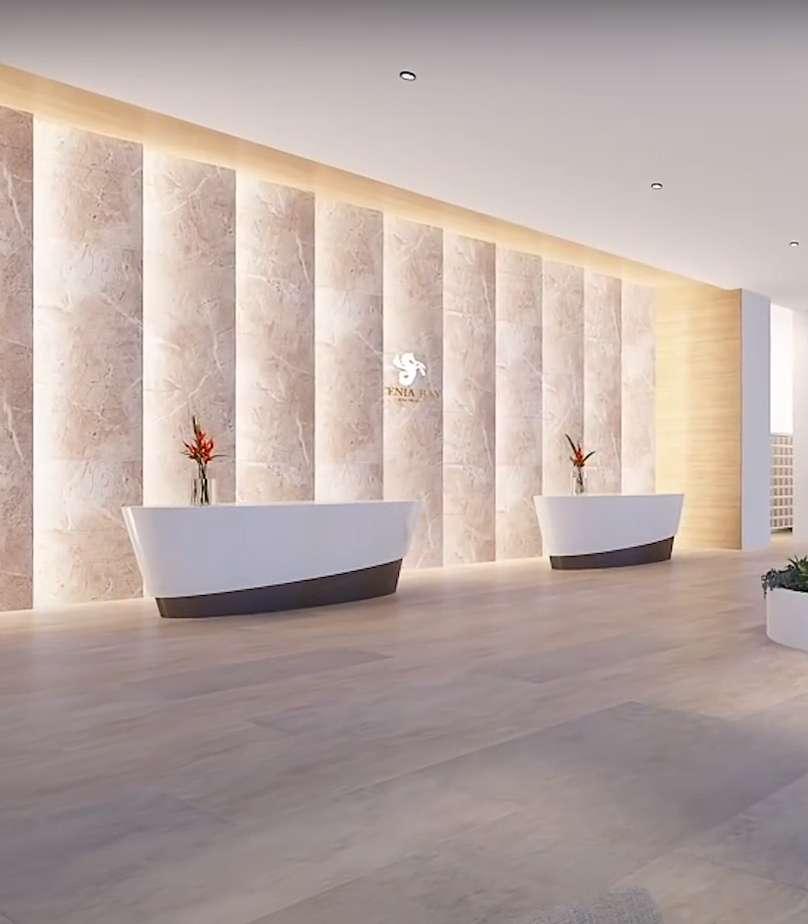


To meet the daily needs of residents, a reception desk is located at the Ground Floor lobby of the apartment building. A team of professional Receptionists and Security staff is always ready to assist, answer questions, and provide necessary information to residents.
¾ Reception Operating Hours:
y Monday - Sunday: 06:30 AM - 09:30 PM
y Public Holidays and Tet Holidays: 08:00 AM - 05:30 PM
Outside of these hours, Security staff will receive and handle resident requests. Residents can also contact the hotline for timely assistance.
Note:
¾ Residents are kindly requested to take care of their personal belongings and goods.
¾ The Reception does not provide storage services for residents’ belongings or goods.

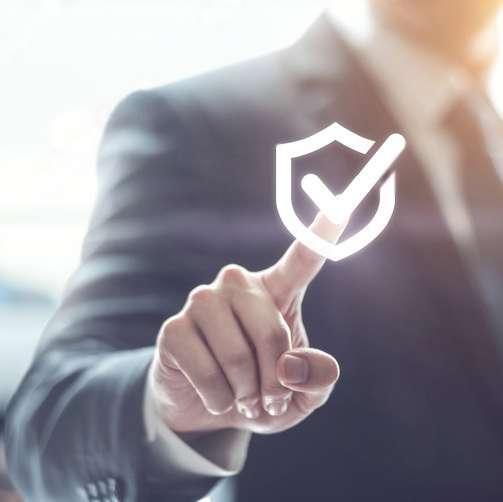
a. Security Personnel and Security Equipment
¾ Security is deployed 24/7 with a team of professional personnel to ensure the safety of all residents and their property.
¾ The security system includes surveillance monitors, security access cards, guard rooms, and public area camera monitoring rooms.
To ensure maximum security, the Management Office expects all Residents to strictly comply with all security and safety procedures. Such cooperation will help enhance surveillance efficiency, service evaluation, and timely adjustments when necessary.
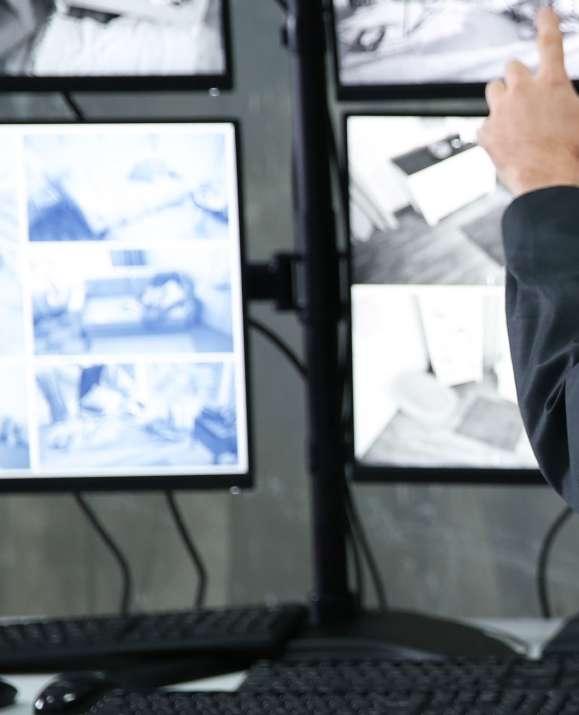

y The Management Office makes every effort to maintain safety and security; however, the security services at Scenia Bay cannot guarantee absolute protection for residents, their property, family members, or guests.
y Residents are encouraged to proactively protect their personal belongings and be aware of potential risks.
¾ The Building Owners’ Committee / Management Office is not liable for any damage, loss, incident, or conflict occurring within the Building unless caused by their fault.
¾ Residents are advised to remain vigilant, promptly report any suspicious or unusual activity to the Management Office to help prevent unwanted incidents.


¾ For security reasons, the Management Office does not keep any apartment keys. Therefore, if you are away for an extended period (e.g., for work or travel), please notify the Management Office of the contact details of the keyholder so they can be reached in case of emergencies, especially those involving fire or major incidents.
¾ Security staff at Scenia Residence are only authorized to use the quickest possible means to access an apartment in emergency situations or when danger is suspected based on reports or direct observation.
¾ Any damage resulting from such emergency interventions shall be the responsibility of the Apartment Owner or Tenant.
¾ The Developer/Management Office shall not be held legally liable for any loss or damage arising from such incidents.
¾ The Management Office will enforce strict measures against any unauthorized intrusion to ensure the security and rights of all residents.
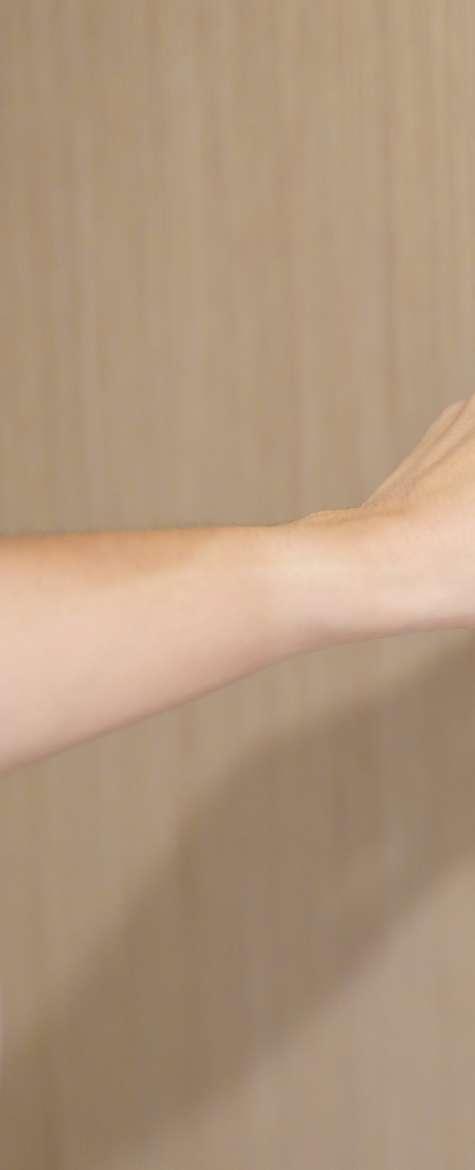

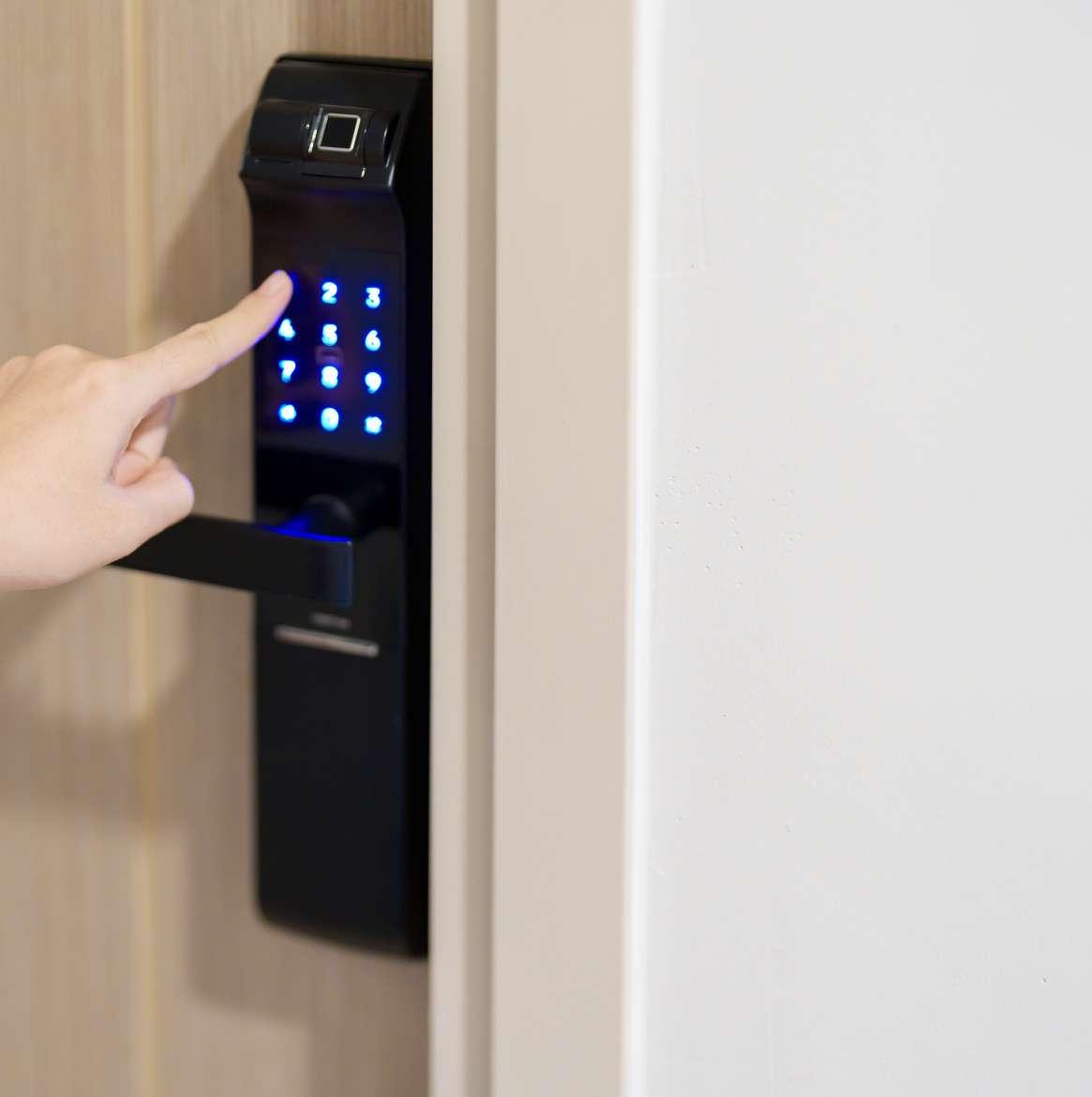

¾ To ensure security, the Management Office staff are responsible for checking, registering, and verifying information of all guests entering and exiting the Building. Residents are kindly requested to inform their guests about this procedure in advance to avoid any inconvenience. We sincerely apologize for any disruption this may cause; however, this access control measure is implemented to ensure the utmost safety for all Residents and their apartments.
¾ For security reasons, the Management Office reserves the right to deny guest entry to the Building if deemed necessary. If Residents expect 10 or more guests to visit or dine at the apartment, please inform the Management Office in advance for smooth and proper security coordination.




The security access card, also known as the entry/exit card, is used for operating elevators and accessing certain facilities in the condominium. Residents must fill out a registration form available at the Management Office to begin the issuance process.
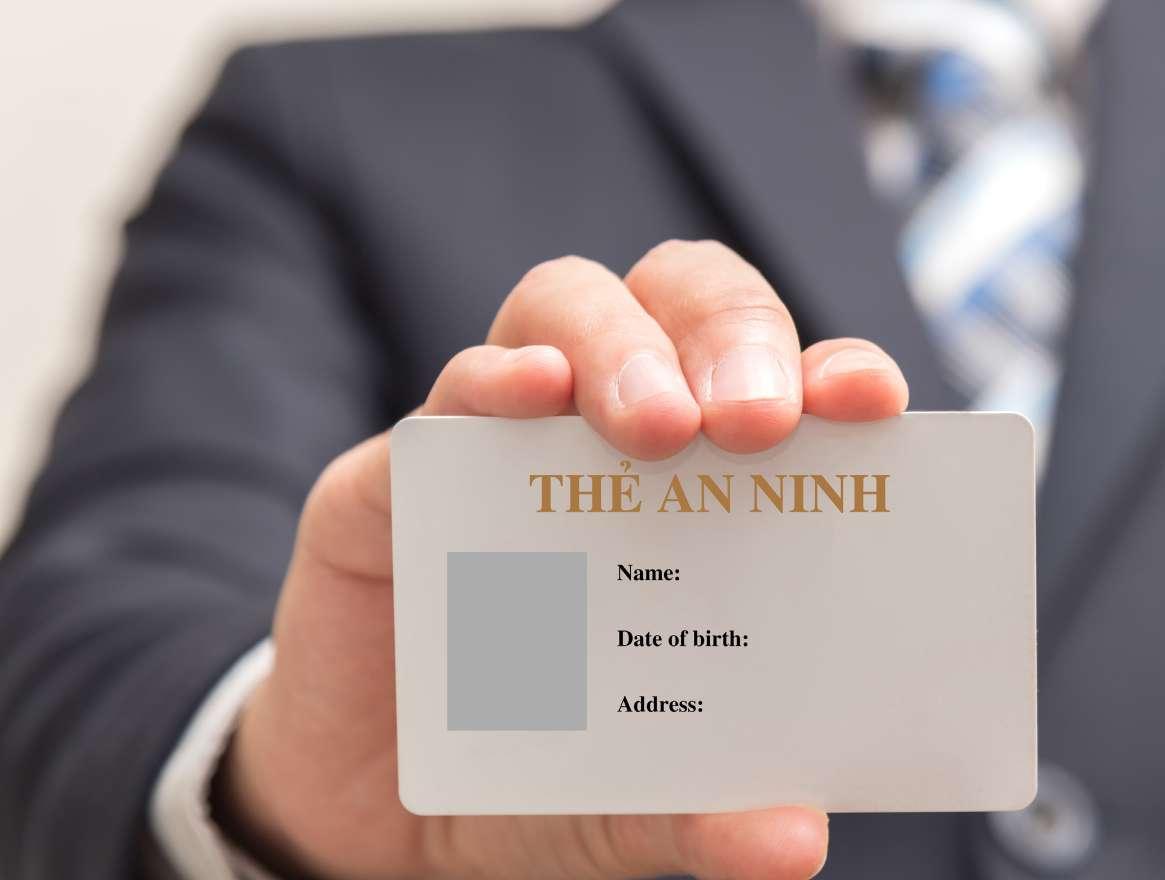
Security access card issuance is applied as follows:
¾ As part of the condominium’s security system, elevator usage and access to specific amenities are controlled through the Security Access Card
¾ A valid Security Access Card is required for access
¾ Each apartment is provided with a free initial set of Security Access Cards, and the number of cards depends on the apartment type as indicated in the table below

Note: All security access cards are only valid if the registered information is accurate, including apartment number, registered name, etc., and the cardholder is still residing in the apartment.

¾ When the apartment is sold, the current owner is responsible for handing over all access cards to the new owner.
¾ All lost or damaged security cards must be reported immediately to the Management Office for deactivation. To replace a lost or damaged card, a Request Form must be submitted to the Management Office. The issuance fee is VND 100,000/card.
¾ Residents may register additional cards for their staff such as housekeepers and drivers. These supplementary cards are only valid for elevator access to the apartment for identification purposes, and do not grant access to recreational facilities. Issuance fee for each supplementary card is VND 100,000/card.
¾ The Management Office may issue additional access cards upon reasonable request from Residents, with a fee based on the current market rate. However, each apartment is limited to a maximum of two additional cards.
¾ Card issuance fees may be adjusted by the Management Office when deemed necessary to reflect actual conditions.
¾ To use the elevator, Residents must swipe their Access Card at the card reader inside the elevator, then press the button for the floor corresponding to their apartment. The elevator will take the resident directly to their floor.
¾ Registration of Access Cards for apartments must be confirmed by the Owner. The Owner also has the right to request deactivation of access cards when necessary to ensure security and access control of the apartment.



¾ Each apartment will be issued one (01) RFID parking card upon car parking registration, depending on the availability of parking spaces. Cards will be issued on a first-come, first-served basis, and will be matched to the registered car.
¾ This RFID card will be used for secure and convenient access control to the parking area.
¾ Residents must handle the card with care to avoid damage that could affect parking control operations. The initial registration fee is VND 1,000,000 per card.
¾ All lost or damaged parking cards must be reported immediately to the Management Office for prompt handling. Residents must clearly report the loss or damage to receive a replacement. The replacement fee is VND 100,000 per card, subject to adjustment at the discretion of the Management Office based on actual conditions.
¾ Car parking cards are nontransferable, except in cases where the apartment is sold or leased, in which case the new owner/tenant must update the information with the Management Office.
¾ Car parking fee: Residents are kindly requested to make payment within the first five (05) days of each month. In the event that any resident fails to pay or fully pay the parking fee by the 12th of the month, the Developer will impose a daily interest charge of 0.05% on the outstanding amount from the 6th day until the actual payment date. The additional interest collected will be contributed to the fund used for managing the Apartment Building.


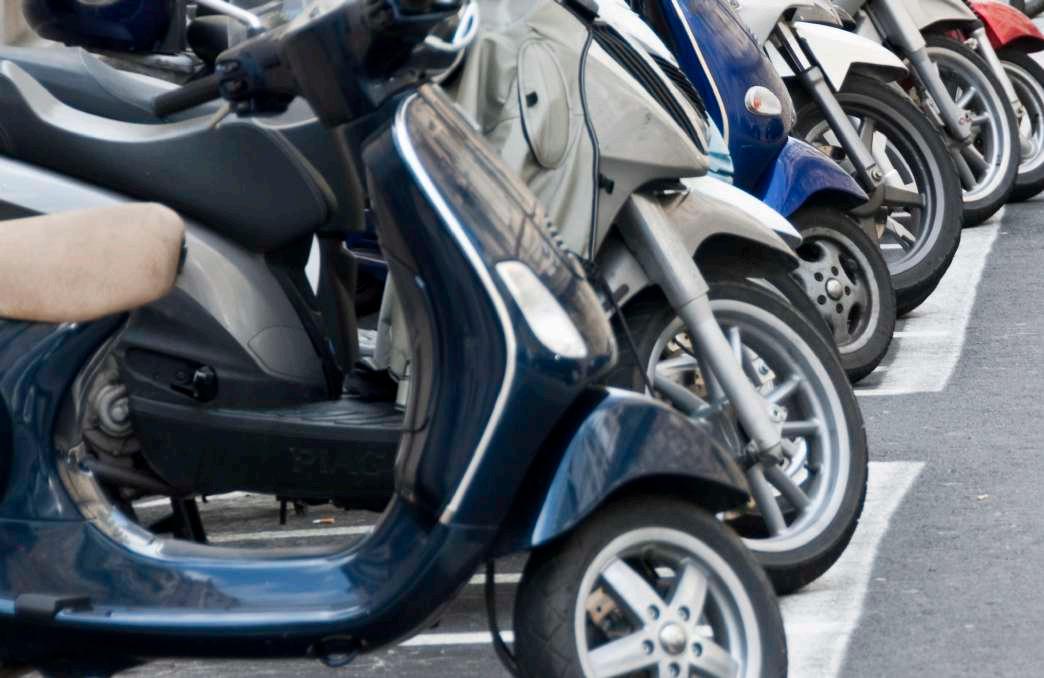
¾ Each apartment may register up to two (02) motorbikes, on a first-come, first-served basis to ensure that the card matches the correct vehicle. In the event that the number of registrations exceeds the allowed limit, the Management Office will consider issuing additional parking slots based on actual parking availability.
¾ The magnetic card is issued free of charge for the first registration. In case the card is lost or damaged, residents must promptly notify the Management Office for assistance with replacement. The replacement fee is 100,000 VND/card, and this fee may be adjusted at the discretion of the Management Office to suit actual conditions.
¾ Residents shall use the magnetic card to swipe at the card reader to activate the system and lift the barrier at the ramp for vehicle access to the basement, as long as the card remains valid.

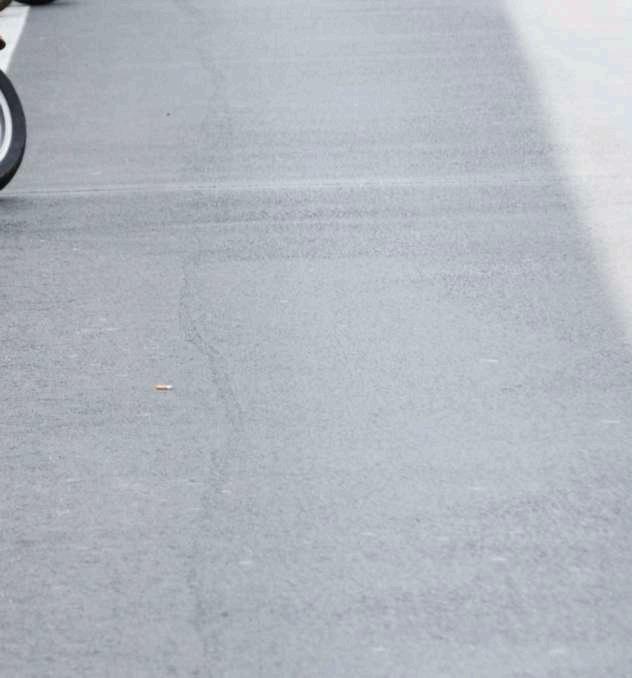

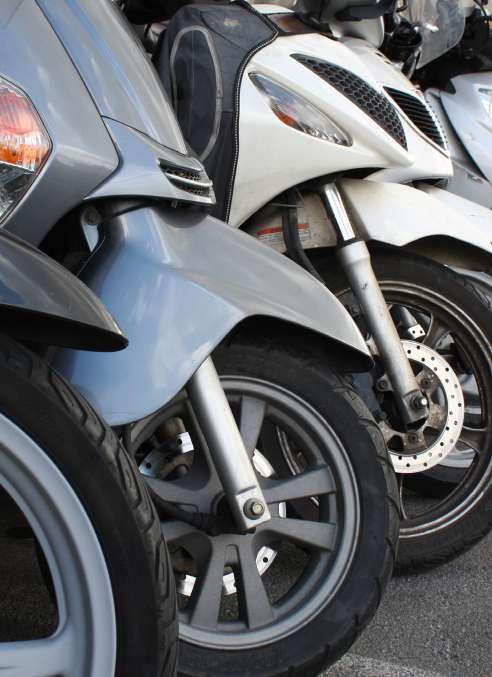
¾ For resident motorbikes, the driver must use a valid card to swipe at the control point to enter/exit the parking area in accordance with regulations.
¾ Two-wheeled vehicle parking fee: Residents are kindly requested to make payment within the first five (05) days of each month. If any resident fails to make full payment by the 12th of the month, the Developer will apply a daily interest rate of 0.05% on the outstanding amount starting from the 6th day until the full payment is made. This additional interest will be added to the fund for apartment building management.

a. Garbage Collection:
Garbage collection is conducted daily at designated areas on each floor. To maintain overall hygiene, residents are kindly requested to follow the regulations below:
¾ Please separate and place recyclable waste such as plastic bottles, jars, paper boxes, glass, metal, aluminum cans, etc., into a separate bag for recycling purposes. This is also a good habit to develop.
¾ Garbage must be placed in plastic bags, tied securely, and disposed of in bins with lids.


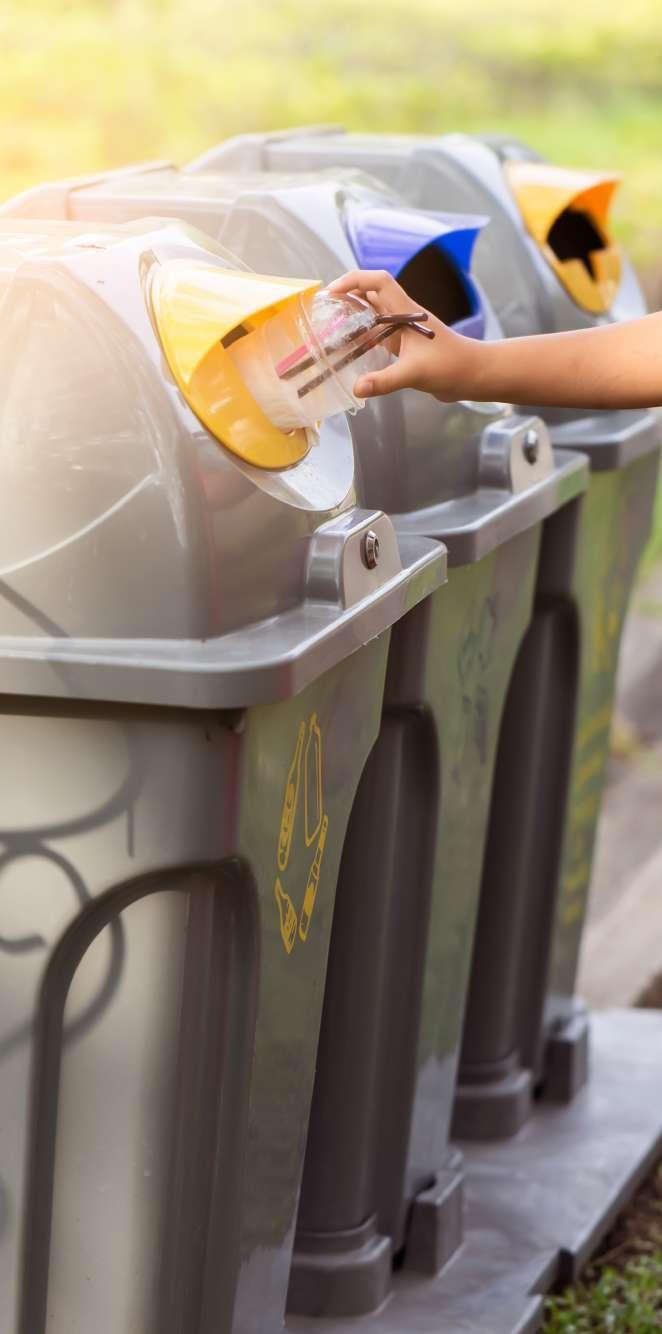
¾ Do not dispose of hot or burning items (such as cigarette butts), water, or liquids into the garbage bins.
¾ Residents are responsible for arranging or coordinating with the Management Office to handle bulky waste such as old furniture, broken appliances, or construction debris. All related transportation and disposal costs shall be borne by the resident.
¾ Do not dispose of flammable items, wet cement, or sticky materials into the garbage room bins to ensure hygiene and safety. Any individual violating this rule shall be responsible for the cost of repairs or replacements caused by such damage.
¾ Residents must not dispose of garbage, rags, or any kind of waste into sinks, toilets, water pipes, or drains in the apartment or building, as this may cause blockages, damage to the drainage system, and affect communal hygiene.

¾ The Management Office will carry out periodic cleaning of the building’s exterior, including windows and facade surfaces. In some cases, rooftops or balconies of certain apartments may be used to support the cleaning work if necessary.
¾ The Management Office will send prior notice via email or in writing so that Residents and Owners can make appropriate arrangements if cleaning needs to be carried out within the apartment premises. For security reasons, all cleaning staff must wear valid Contractor Badges and will be accompanied by a Management staff member upon request.
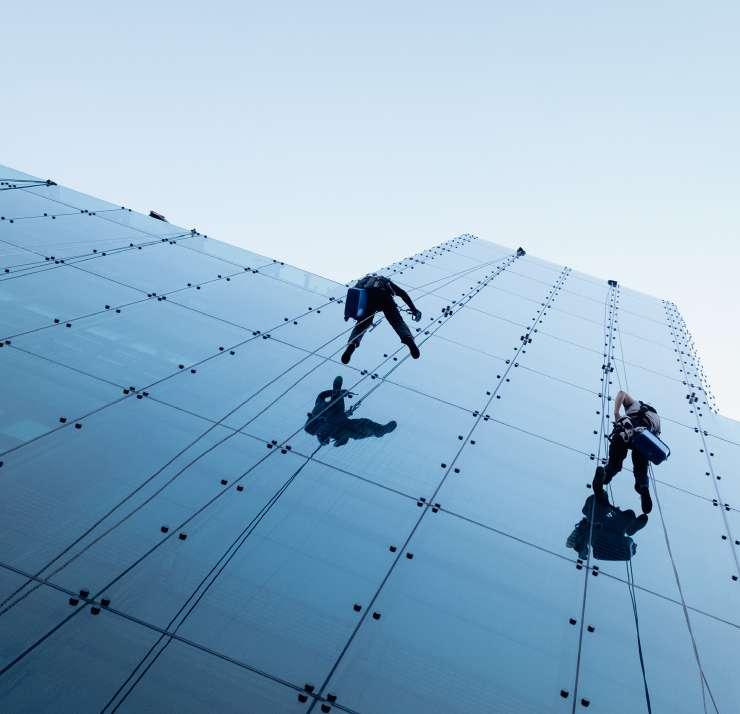



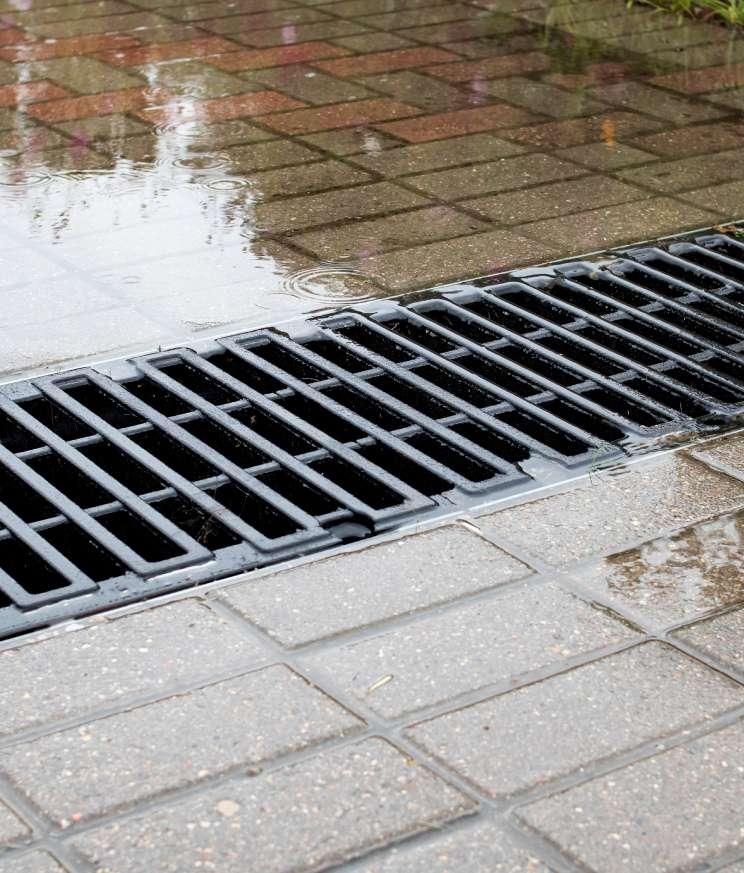
c. Drainage System Cleaning:
¾ All drainage pipes and outlets that are part of the Common Property will be inspected and cleaned periodically by the Management Office to ensure smooth operation.
¾ Residents are responsible for keeping the drainage/sewer system clean. If any blockage or damage to the drainage system is caused by a resident, unit owner, or their guest, they will be liable for the full cost of repair and any associated damages.

The Management Office will periodically maintain and care for the landscaping to ensure a green, clean, and beautiful environment with greenery and flowers in the common areas of the Building.
To preserve the shared landscape, the Management Office seeks residents’ cooperation in maintaining and protecting plants and flowers in public areas. Residents shall be held fully responsible for any damage or loss to the building’s landscaping and garden areas. Please adhere to the following rules to protect the shared landscape and maintain a pleasant living environmen:
¾ Do not hang or dry clothes or any personal items in the garden areas.
¾ Do not climb trees or structures within the landscaped areas. The Management Office/Developer shall not be responsible for any personal injury or damage resulting from such actions.
¾ Do not pick flowers or step on grass or plants in order to preserve the communal green space.
¾ Pets, animals, bicycles (2 or 3 wheels), or skateboards are not allowed in landscaped areas to avoid disturbing the landscape and for safety reasons.
¾ Do not spit or litter in public areas; help maintain cleanliness for the community.







¾ The Management Office has contracted a professional pest control company to carry out regular pest control in the building’s common areas, ensuring a clean and safe living environment for residents.
¾ The service provider uses only chemicals approved by the Department of Health and in compliance with health and environmental standards.
¾ The pest control schedule for common areas will be notified to residents or publicly posted in advance.
¾ The pest control program applies only to public areas. Residents are encouraged to carry out pest control within their own units to enhance overall effectiveness.
¾ If residents wish to use pest control services inside their apartments, please contact the Management Office for guidance. This ensures supervision and minimizes any health or environmental impact.
¾ Do not use any chemicals outside the approved list from the Department of Health to protect residents’ health and the building environment.

¾ Effective pest control within apartments depends on maintaining a clean environment that does not support insect breeding. The Management strongly advises residents to take necessary preventive measures to limit the appearance and spread of pests in their units.
¾ Residents are advised to dispose of wet waste in bins lined with plastic bags and equipped with lids, and to follow the Management’s instructions and regulations on proper waste disposal in designated areas, in order to minimize pest attraction and maintain hygiene.

¾ Residents should store food that may attract insects and rodents in tightly sealed containers or keep it in the refrigerator. To minimize pest occurrence, it is necessary to clean up food scraps and grease stains daily. Additionally, do not leave dirty dishes overnight, avoid food crumbs falling under cabinets/refrigerators, and refrain from leaving overripe fruit out in the open, as these can attract unwanted insects.


¾ Many flying insects are most active at night and are attracted to light. To prevent insects from entering the apartment, residents should keep doors and windows closed when not in use, especially in the evening.
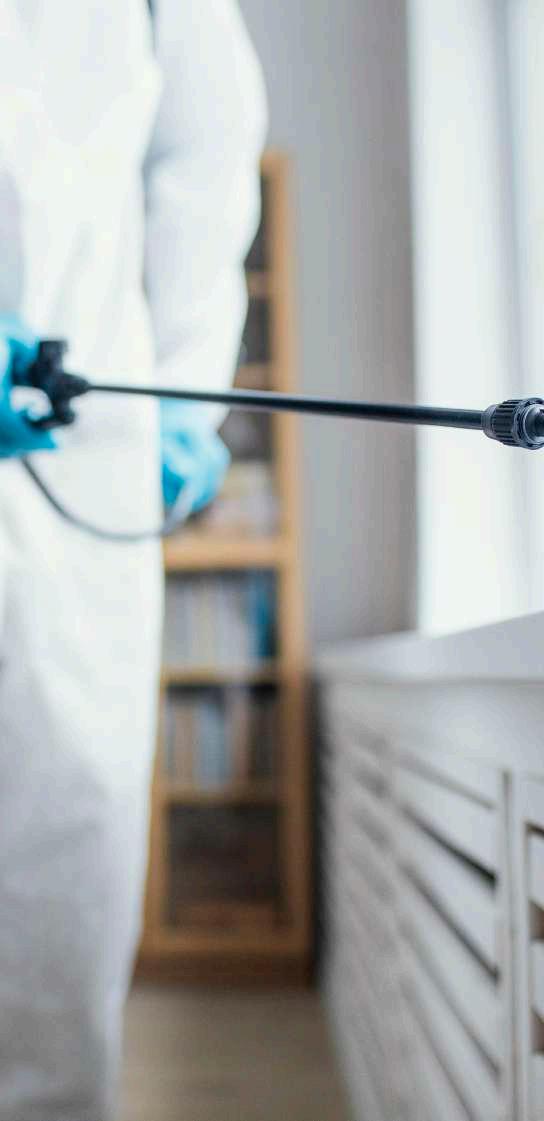
¾ Mosquitoes can breed in any place where stagnant water collects, including areas around the residence. Malariacarrying mosquitoes typically breed in clean water, so residents are advised to avoid stagnant water in areas such as plant pot trays, air-conditioner drip trays, or clogged floor drains to reduce the risk of mosquito breeding.
¾ Keeping your apartment clean and well-ventilated is an effective way to prevent insects over the long term. A cluttered apartment is difficult to clean, so residents should carefully consider what items to keep and arrange them properly to maintain a tidy and hygienic living environment.
¾ Residents should thoroughly inspect boxes, bags, packages, household items, plants, fruits, and even flower baskets brought in from outside to ensure there are no hidden bugs or insects, helping to prevent them from entering the apartment.
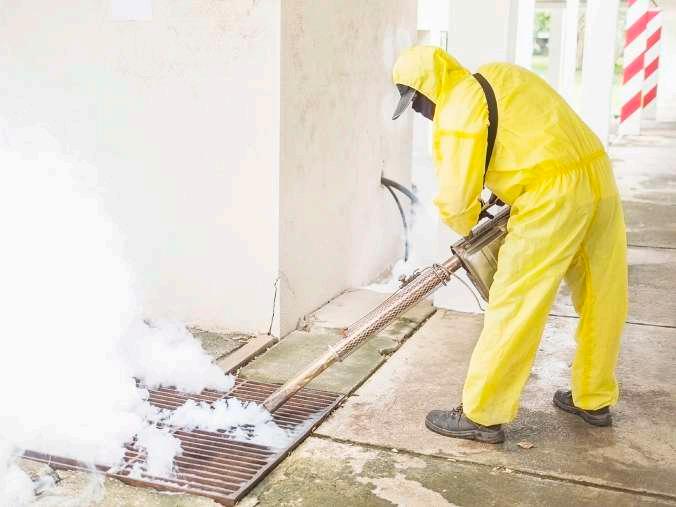






¾ Each residential block is equipped with 5 elevators, including: 1 freight elevator for residents’ goods transport, 1 emergency/ firefighter elevator, and 3 passenger elevators for residents and their guests.
¾ Do not overload the elevator. Please observe the maximum load limit for safety. Avoid contact of sharp, pointed, or hard objects with the elevator walls to preserve its interior and maintain good working condition.
¾ Contractors, workers, and those transporting bulky items must use the freight elevator to ensure safety and avoid affecting passenger elevators.
¾ Heavy or oversized items must be inspected and approved by the Building Management before being transported via the elevator to ensure safety and prevent damage.

¾ Do not use the elevator in case of fire.
¾ Smoking is strictly prohibited in the elevator.
¾ Children must be accompanied by adults when using the elevator to avoid unexpected incidents.
¾ If trapped inside the elevator, do not panic or try to open the door yourself. Press the alarm button, stay calm, and wait for security or maintenance staff to arrive.
¾ Do not kick, punch, or apply force to the elevator doors to avoid damage or malfunction.
¾ Do not lean against the elevator doors or frame to avoid the risk of pinching when the doors open.
¾ Keep hands away from the elevator doors to prevent injury when doors open or close.
¾ Do not try to enter the elevator when it is full or when the overload alarm is activated.


¾ Always allow exiting passengers to leave before entering the elevator. Do not block the door.
¾ Do not attempt to open the elevator doors manually or misuse emergency or control buttons unless there is an actual emergency.
¾ Do not disrupt normal elevator operations or damage its interior. Avoid climbing, playing, or jumping inside, and do not use hard objects to press buttons.
¾ Do not stick decals, draw, or vandalize the elevator to preserve cleanliness and the building’s aesthetic.
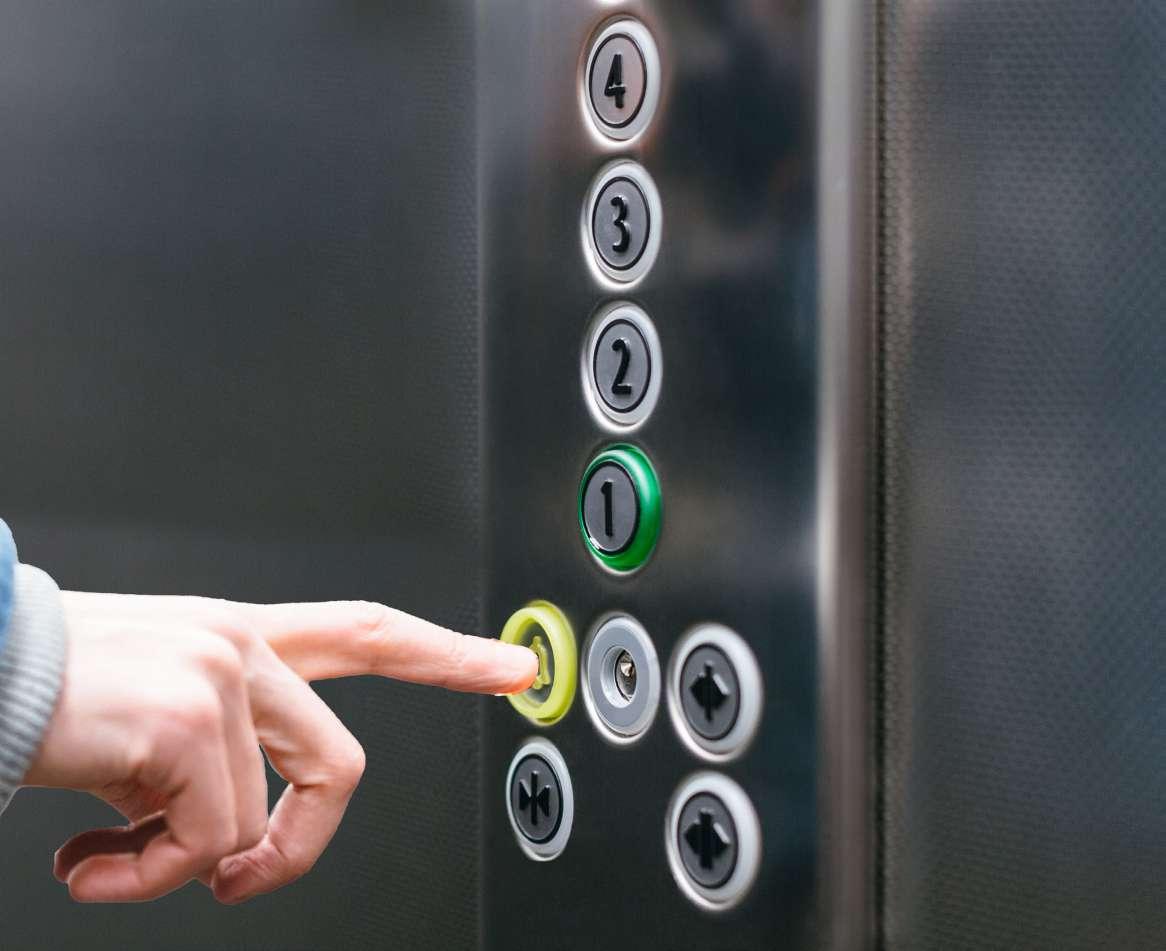

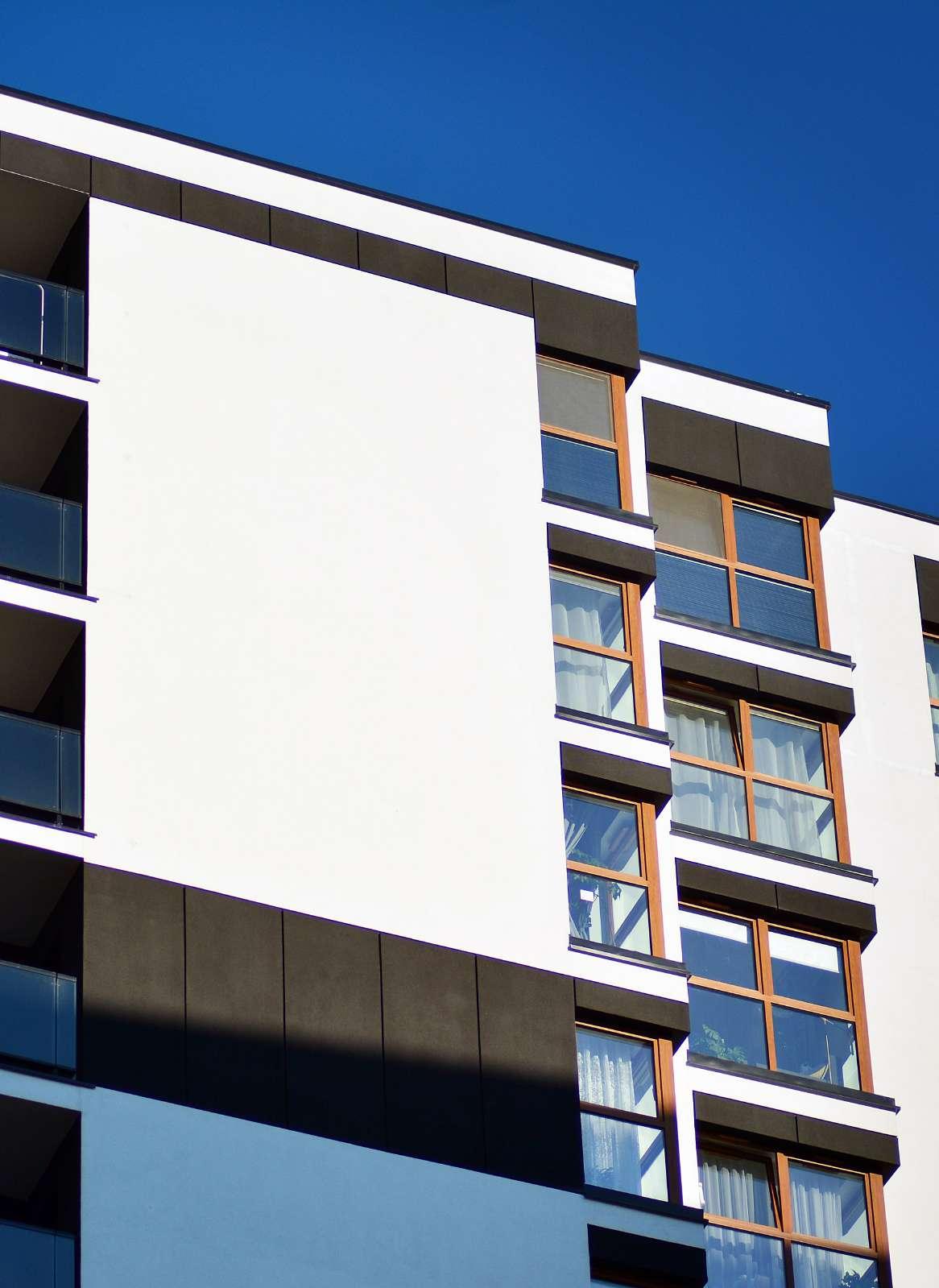



¾ Residents are responsible for reading, understanding, and fully complying with the Management and Use Regulations of Scenia Bay Residence to ensure a safe, civilized, and harmonious living environment for the entire residential community.

¾ Residents are obligated to promptly report any violations of the building’s regulations to the Building Owners’ Committee or Building Management to maintain order, safety, and a civilized living environment.
¾ Apartment owners who lease out their units are jointly responsible for any violations committed by tenants and must ensure compliance with the building’s regulations.
¾ The Building Management is responsible for monitoring and handling rule violations, and reporting serious cases to the Building Owners’ Committee for coordinated resolution to ensure order and safety.
¾ Owners, residents, temporary occupants, and guests may be subject to sanctions ranging from service suspension to legal penalties and compensation for damages depending on the severity of their violations.
¾ Apartment owners and residents must strictly comply with any violation handling decisions issued by the Management Office or authorized bodies.

Residents must not engage in any actions that may alter, deform, or damage the structure of the Building, shared facilities, public services, or the internal and external structure of their apartment. This includes, but is not limited to, placing advertisements, banners, posters, or signage on the exterior of the apartment, or carrying out any form of intervention that affects the overall architectural integrity of the Building. All activities related to the operation, use, or exploitation of the apartment and common areas must comply with current legal regulations, ensure consistency in design, construction safety, and urban aesthetics, and follow the regulations of the Building Management to maintain a civilized, safe, and sustainable living environment for all residents.
Residents are responsible for fully complying with all regulations stated in the Resident Handbook throughout their time living in the Building. Strict adherence to the provisions of the Resident Handbook is essential to ensure order, safety, and the overall quality of life for the entire residential community.




At no time shall residents be allowed to construct or attempt to construct any partitions or divide any common property areas of the Building without official written approval from the Developer or the Management Office. Any alterations to the structure or occupation of the Common Property must comply with current laws and condominium regulations to ensure consistency in design, operation, and the safety of the Building.


Shared partition walls must not be used in ways that obstruct or negatively impact the legitimate use of the space by other residents.

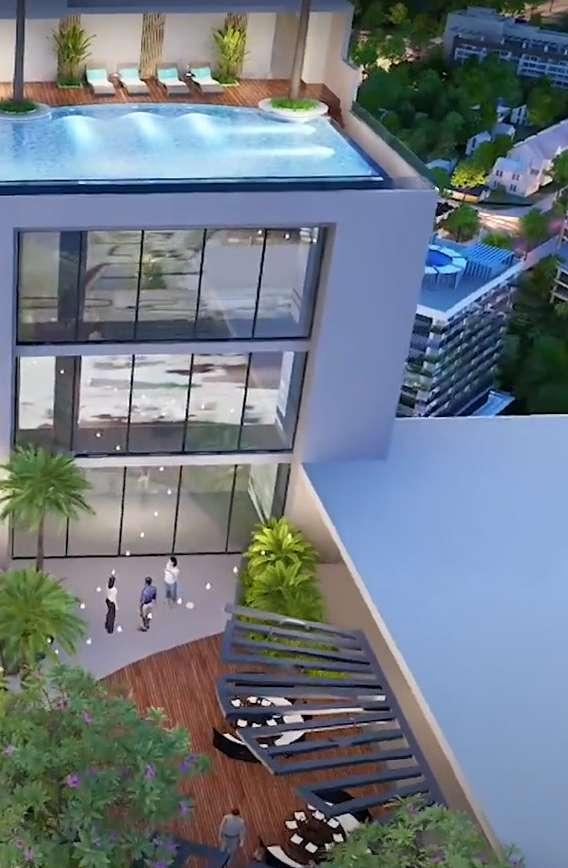
Maintenance, and Repairs
Residents shall not perform any actions that affect or obstruct the construction, maintenance, or repair of any parts of the Condominium, including public areas, shared facilities, and technical systems. All maintenance and repair activities are intended to ensure safety, preserve building quality, and enhance the living environment for all residents. Therefore, residents are kindly requested to cooperate and comply with the Management Office instructions when such activities are announced.
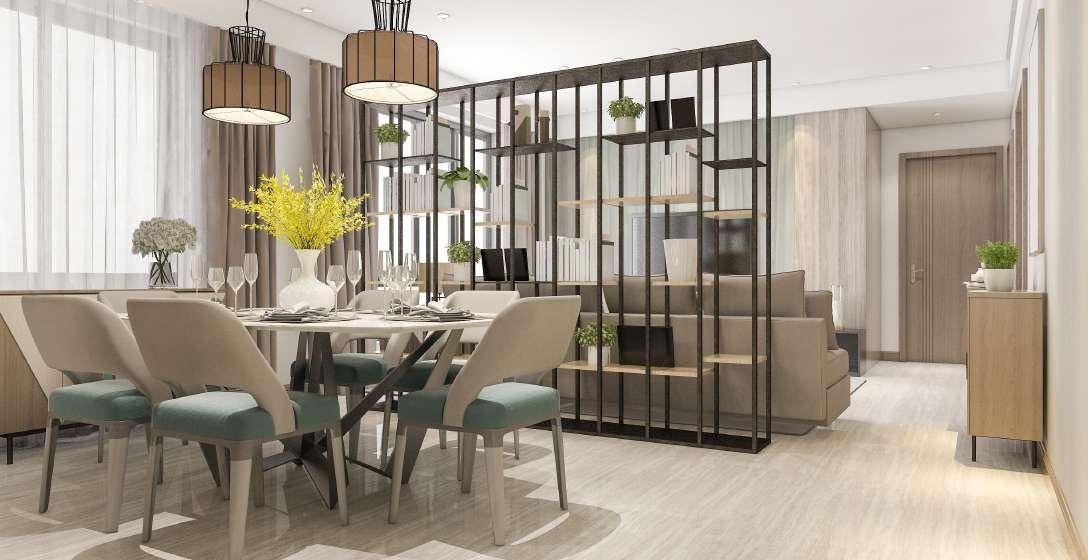

¾ Residents shall not use, or allow others to use, the apartment for any purposes that violate the law or moral standards, or that negatively impact security, public order, the living environment, or cause inconvenience, disturbance, or damage to other residents of the Building or nearby properties. The use of the apartment must comply with current regulations to ensure a safe, civilized, and harmonious living environment for the residential community.
¾ Residents are not permitted to use, or allow the use of, any part of their apartment as a school, funeral home, venue for wakes or memorial services, coffee shop, temple, religious shrine, or for any similar ceremonies, nor as a restaurant, dance hall, music stage, or for any business activities that generate noise, disorder, or cause discomfort to other residents.

¾ The apartment is to be used for residential purposes only, except in cases where it is temporarily used for display purposes during specific periods with reasonable consideration.
¾ In addition to the rights and obligations stipulated in the Resident Handbook, no resident is allowed to occupy or use canopies or rooftops, except for emergency evacuation purposes in the event of an emergency or fire.

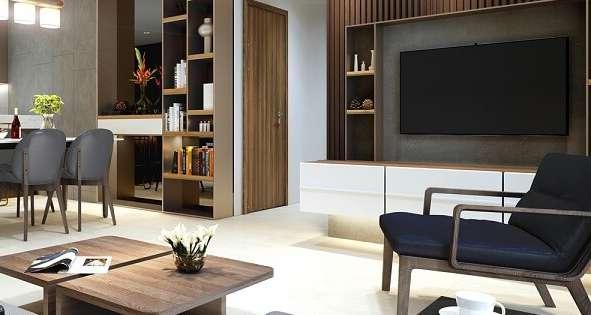

2.6. Illegal and Immoral Acts
¾ Residents are not permitted to use the apartment or any area within the Building for illegal purposes or activities of an immoral nature, in order to ensure security, order, and a civilized living environment for all residents.

¾ Unless prior approval is granted by the Developer and the Management Office, residents are not permitted to alter any Common Property of the Building for personal use (such as installing additional lighting or fixtures), for individual benefit, or to convert any part of their private apartment into Common Property of the Condominium.
¾ Residents are not allowed to alter or use any part of the Building’s Common Property for personal purposes without prior approval from the Developer and The Building Owners’ Committee. This includes, but is not limited to, the installation of additional lights, lighting fixtures, or any other items serving personal interests. Furthermore, residents are not permitted to convert any portion of their private apartment into Common Property of the Condominium.
¾ No construction is allowed in any area of the Common Property of the Condominium: Residents are not permitted to carry out any installation or construction workwhether permanent or temporary - on any part of the Common Property of the Condominium.
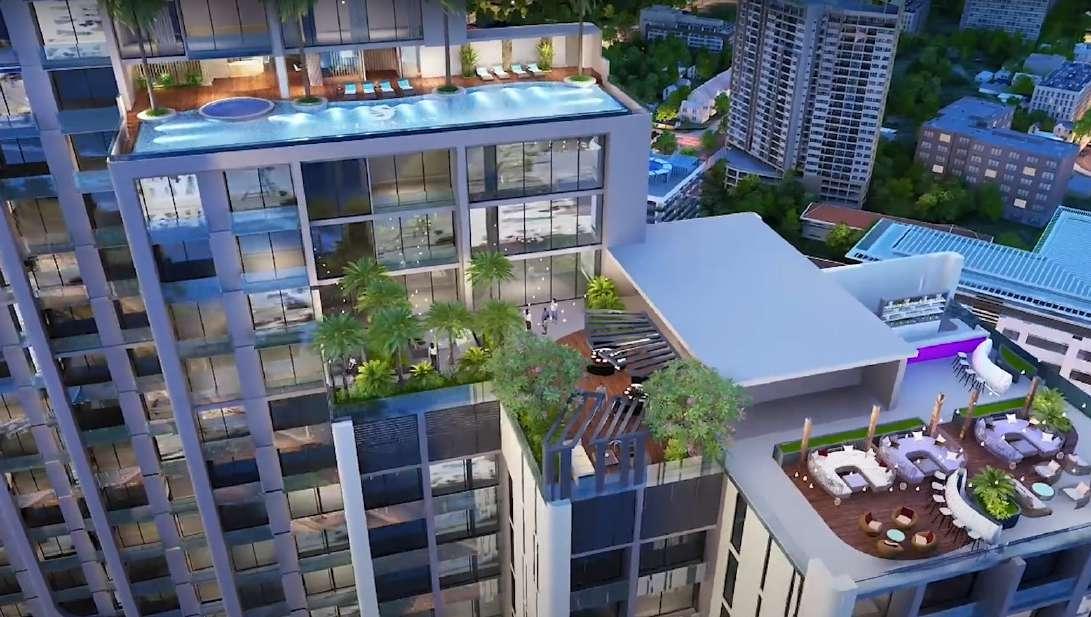


¾ No alteration of the building facade or exterior design: Residents are not permitted to repaint the exterior or facade of the Condominium, relocate any barriers or fences, or carry out any work that affects or alters the exterior appearance of the building.
¾ Terms and Conditions: Residents are not allowed to use, or permit the use of, the apartment in any manner that violates the rules and regulations of Scenia Bay Residence or the applicable laws of Vietnam.
¾ Do not obstruct or damage public areas and amenities: Residents must not obstruct any facility in the Building, nor litter or leave items or goods in common property areas or hallways. Any goods or items found in emergency exits or staircases will be removed without prior notice. Residents are not allowed to disconnect, cut, modify, add to, obstruct, or damage any piping, valves, connections, electrical wiring, broadcast or TV systems, or any related equipment. Additionally, residents must not install any equipment that may divide or obstruct the yard, roof, or rooftop of an apartment, as these areas are considered part of the common property of the Building.


installation
Residents are not permitted to install, repair, or carry out any work related to the electrical system connecting from the central electrical room to any area within the Building without prior written approval from the Management Office. Unauthorized interference with the electrical system may compromise safety, affect the overall technical infrastructure, and violate current legal regulations on electrical safety.

The lighting system in elevator corridors and public areas has been fully installed to ensure the building’s aesthetics and safety. Residents are not permitted to install additional lighting in corridors or shared areas without prior approval from the Building Owners’ Committee/Building Management. This is to maintain design uniformity and comply with electrical safety regulations.

To maintain the overall aesthetics of the Building, the installation of iron grilles on windows must comply with the design standards set by the Management Office and may only be securely attached to the inside of the window. Residents should note that the window frames are made of aluminum alloy, so care must be taken during installation to avoid affecting the structure and safety of the window.
Additionally, any heat-insulating film applied to the window glass must meet the prescribed standards and comply with the Building’s regulations to ensure consistency, effective usage, and avoid altering the exterior appearance of the Building.



2.12. No Interference or Modification to
Residents are not allowed to independently carry out or permit any interference, modification, additional installation, or insertion of any object into the Building’s fire protection system, including the automatic sprinkler system, fire alarm system, or any equipment belonging to the fire safety infrastructure.
Tampering with the fire protection system can seriously impact fire safety; therefore, any modification or adjustment must be approved in writing by the Management Office and must fully comply with applicable fire safety regulations.
Residents are not permitted to install or place any equipment, machinery, furniture, or goods that exceed the permissible floor load capacity. Violation of this regulation may compromise the structural safety of the Building.
In the event of any damage or harm caused, the resident shall be fully responsible for compensation and repairs in accordance with the regulations of the Management Office and applicable laws.
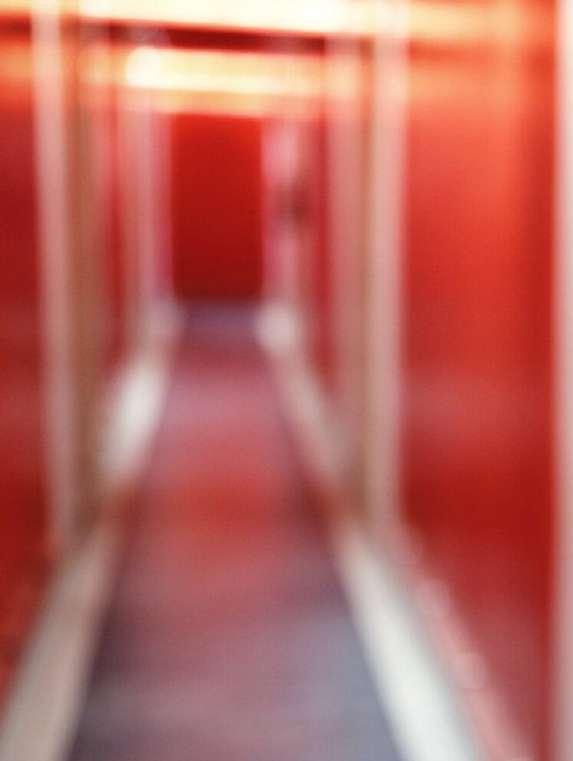

Residents are not allowed to carry out any construction, repairs, or installations within the garden area, rooftop, awnings, or exterior walls without prior written approval from the Management Office. Any work involving these areas must comply with Building regulations to maintain structural integrity, aesthetic uniformity, and overall safety.



Residents are prohibited from constructing, installing, or modifying any water pipes or drainage gutters on the Building’s exterior walls. All water supply and drainage systems must adhere to the original technical design to ensure safety, aesthetics, and preservation of the building’s structural integrity.


¾ Residents are not allowed to let young children or apartment guests play in the Common Areas of the Condominium, except for zones specifically designated for communal activities.

¾ In the event that children cause damage to furniture, decorations, or shared property, the Resident or Guardian is responsible for repair or compensation in accordance with the Management Office regulations.
¾ Residents or Guardians bear full responsibility for the behavior and conduct of children while living at Scenia Bay Condominium and must ensure compliance with the Building’s regulations.
¾ The use of condominium amenities will be subject to specific age limits to ensure safe use and to avoid inconvenience to other residents. Age-related rules will be clearly communicated by the Management Office for each facility and area of the Building.



¾ Guests visiting an apartment must register and present valid identification documents to the Management Office (Reception) or Security Team before entering the condominium.
¾ When deemed necessary for ensuring overall security and safety control, the Reception or Building Security has the right to retain guests’ identification during their stay at the condominium. This measure ensures effective security management and a safe living environment for all residents.


¾ To maintain public order and help guests understand the Condominium’s regulations, Residents are responsible for informing their guests in advance about the Building’s rules and ensuring compliance with community conduct and security protocols.
¾ To expedite the registration process for visiting guests, Residents are encouraged to notify the Management Office or Security Team in advance with their guests’ information.
Note: When using door-to-door delivery services, Residents must follow the instructions and regulations set by the Management Office and use the service elevator exclusively for transporting goods to their apartment.

¾ Residents are not allowed to wash or dry clothes outside the apartment or in any visible areas (except for designated spaces), or in the Common Property areas of the Condominium.
¾ It is prohibited to hang, dry, or allow others to hang or dry clothes or unsightly items, or to store household goods or objects in the Common Property areas, rooftops, balconies, fences, hallways, entrances, or any areas of the Building that may cause inconvenience or damage to other Residents. The Management Office reserves the full right to remove such items without prior notice to the Resident if the Resident fails to comply after being warned. All related costs incurred will be borne by the Resident.
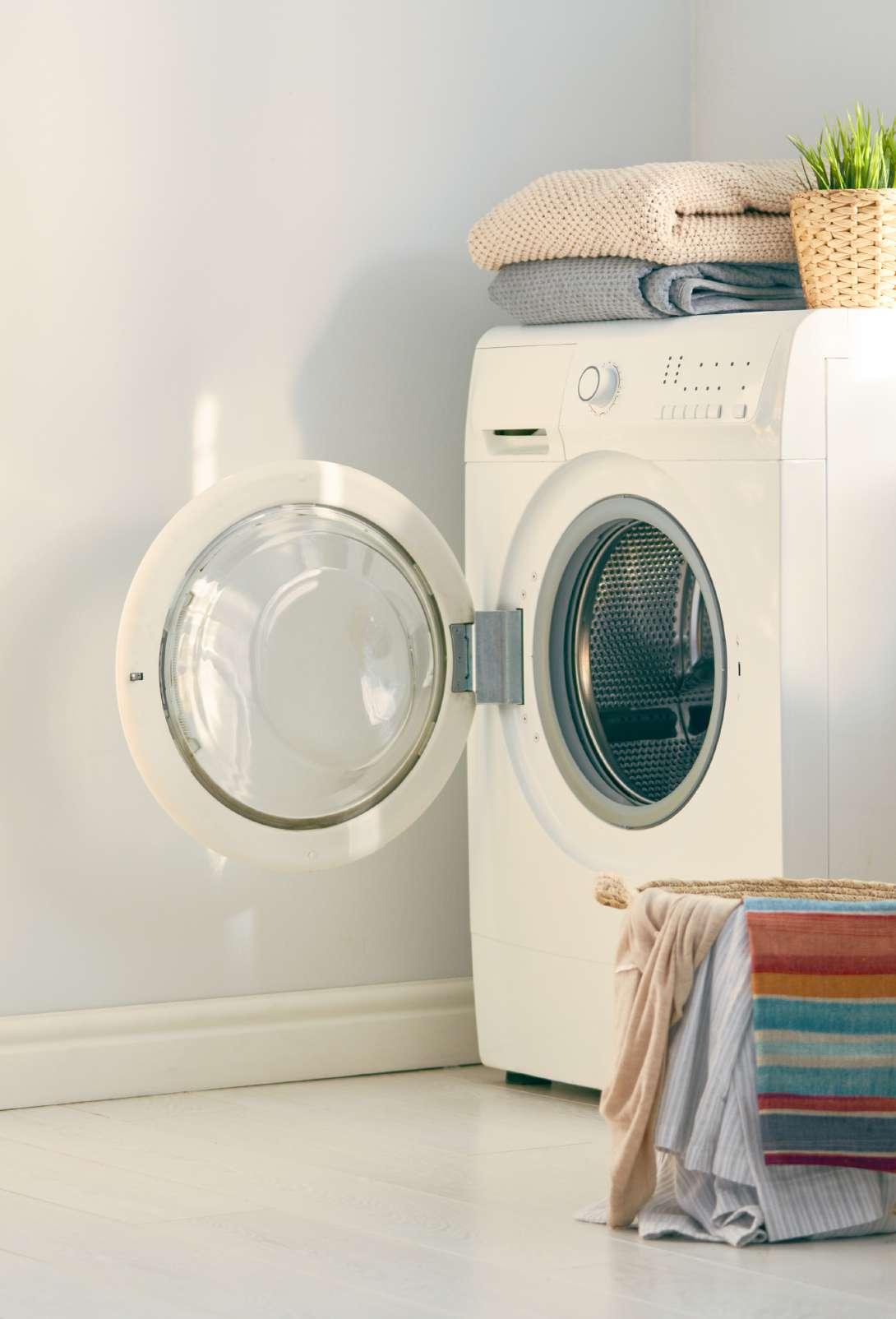

Residents are responsible for maintaining and protecting both their individual apartment drainage systems and the shared drainage system of the Condominium. Residents are strictly prohibited from discharging chemicals, waste, or materials that could damage or clog the drainage system, in order to ensure smooth operation and avoid impacting other resident.

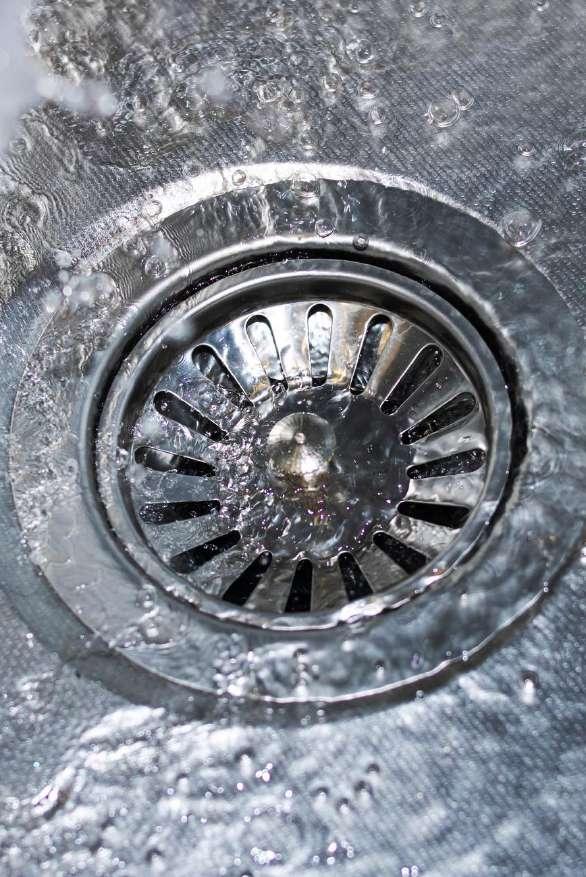
Residents must not shake out dust, blankets, rugs, rags, or any other items through windows or balconies. Sweeping or pushing dust and trash from inside the apartment into common areas of the Condominium is not allowed. Additionally, throwing, tossing, or discarding any items from windows, doors, or balconies is strictly prohibited to maintain cleanliness and ensure the safety of others.


Residents must use sanitary fixtures and water-based equipment strictly for their intended purposes. It is forbidden to dispose of garbage, personal items, or any foreign objects into toilets or drainage systems to prevent clogs or system damage.
In the event of damage caused by misuse or improper use, the Resident shall bear full responsibility for all repair and remediation costs as stipulated by the Management Office.



2.21. No Construction of Gates, Iron Ladders, or Additional Structures on Drying Yards, Rooftops, Awnings, and Perimeter Walls
According to the Resident Handbook, residents are not allowed to construct, install, or be involved in any actions related to building gates, iron ladders, or additional structures on drying areas, rooftops, awnings, terraces, or external walls of the apartment without the prior approval of the Management Office.
Prohibited items include, but are not limited to: walls, windows, balconies, curtains, awnings, coverings, partitions, shutters, grilles, protective nets, or any other structures, whether temporary or permanent, that could affect the building’s structure, appearance, or lead to fencing or partitioning of space.
In the event of a violation, the Management Office has the authority to request removal or proceed with dismantling, with all related costs to be borne by the resident.

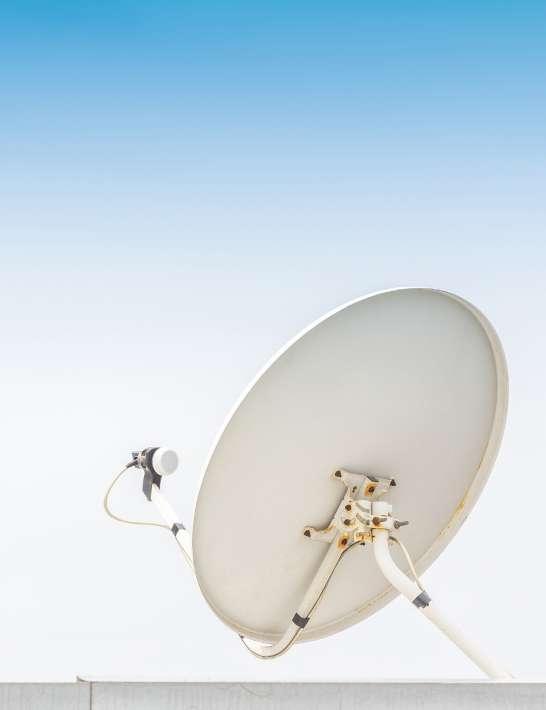
Antennas or Satellite Dishes
Residents are not permitted to install or connect to the radio or TV signal reception systems installed by the Developer without prior approval from the Management Office. All activities related to the installation or connection of antennas or satellite dishes must comply with Condominium regulations to ensure consistency, technical safety, and the overall aesthetic of the building.
The installation or relocation of air conditioners within the apartment may affect the condominium’s common electrical system. Therefore, before carrying out any new installation or relocation of an air conditioner, residents must contact the Management Office for consultation and guidance. This ensures compliance with technical standards, electrical safety regulations, and prevents any impact on the shared system.
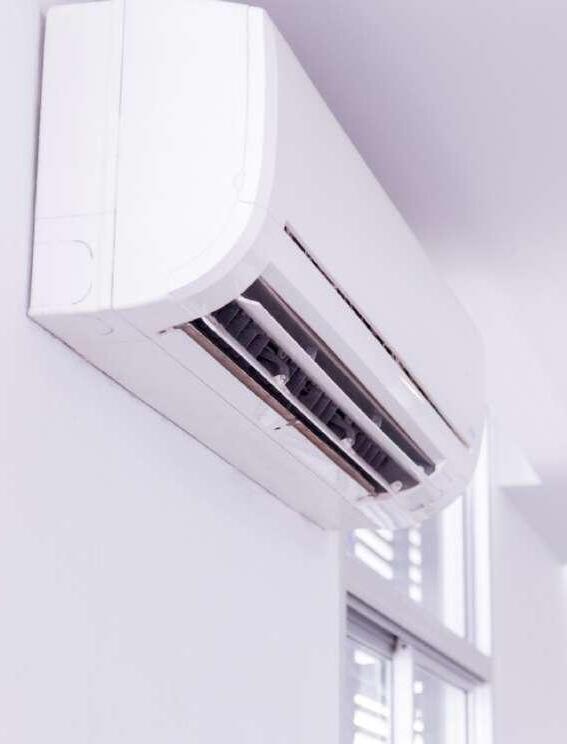

Residents are not permitted to install any advertising signs, banners, poles, flags, framed structures, or any other forms of display that extend beyond the boundaries of the Common Property or the exterior of the Condominium (Refer to the regulations on interior finishing and decoration for further information). Additionally, distributing leaflets in the public areas of the Condominium or placing them in the door gaps of other apartments is strictly prohibited to maintain aesthetics, cleanliness, and general security.


Residents are not allowed to discard, throw, or dump garbage indiscriminately in any area of the Condominium, except in designated garbage collection points assigned by the Management Office. Waste must be placed in secure, leak-proof bags, which should be tightly sealed before being disposed of in trash bins on each floor. For large containers, boxes, or garbage bags, residents must bring them down to the designated collection area on the ground floor as per regulations. Absolutely no personal items or garbage shall be placed in any Common Property area of the Condominium, in order to preserve hygiene and maintain overall aesthetics.

2.26. Balcony
To ensure uniform aesthetics of the Condominium and the safety of property, residents, and passersby on the ground floor, residents are not allowed to install the following items on their own:
¾ Outdoor clothes drying racks that are visible from outside the balcony area;
¾ Decorative wall panels on either side or in front of the balcony that differ in color from the exterior paint of the building, affecting the building’s overall appearance;
¾ Hanging plant racks or flower pots that protrude beyond the balcony’s boundary. Residents may hang plants within their own balcony space, but must ensure technical safety and consult the Technical Department of the Management Office before installation;
¾ External equipment such as antennas, satellite dishes, fans, broadcasting devices, decorative lights, etc.;
¾ Fixed or retractable awnings;
¾ Shelving units, altars, stoves, storage cabinets, partitions, decorative ceilings, ceiling fans, decorative lighting, etc.;
¾ Any fixed rescue equipment (if any) must be installed according to instructions and with the approval of the Management Office;
¾ Any items on the balcony or railing that may fall and pose a risk to the safety of people or property on the ground floor. Additionally, residents must not alter the design or lighting style of the balcony area and must maintain lighting uniformity according to the Condominium’s standards.




Note:
¾ Installing iron/steel frames on the balcony is strictly prohibited.
¾ Only stainless steel safety cable nets that meet standard specifications are allowed to be installed.
¾ Please contact the Management Office for detailed guidance before making any changes to ensure safety, regulatory compliance, and to preserve the overall aesthetic of the Condominium.



Residents must keep noise to a minimum and comply with the condominium’s noise standards in accordance with Vietnamese law.
¾ Loud music is not permitted, especially after 10:00 PM, in order to maintain quiet for surrounding apartments.
¾ Dragging furniture or allowing children to run and jump on the floor, causing loud impact noise to the unit below, is prohibited.
In case of violation, the Management Office will measure the noise level and may apply enforcement measures as outlined in the Resident Handbook, or coordinate with local police to carry out actions as prescribed by law.


The Management Office is not responsible for any parcels or deliveries left at apartment doors or in other undesignated areas within the building.
The building does not allow residents to keep any pets, livestock, or poultry in their apartments or in any common areas of the building. This policy is in place to ensure cleanliness, safety, and a harmonious living environment for all residents.


Residents are not allowed to store, keep, or preserve any hazardous, toxic, or flammable chemicals, materials, or goods in their apartments or in any common areas of the building. The storage of such substances poses a risk to the safety of all residents and violates current legal regulations. and

2.31. Pollution
Residents must not cause any form of pollution, including noise, exhaust emissions, or wastewater, that could negatively affect the living environment of the condominium.
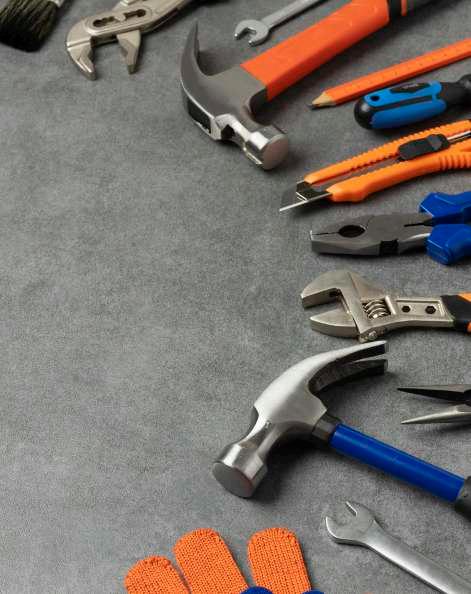

2.32. Repairs
Residents are fully responsible for the maintenance and upkeep of all assets within their own apartments, including electrical systems, plumbing, and any installed equipment.
2.33.Bicycles, Rollerblades,
Skateboards, Scooters, and Baby Strollers
Residents should take care when using the service elevator to move bicycles, strollers, or other large items, to avoid damaging the elevator. Additionally, these items must not be placed or left in any of the building’s common areas.

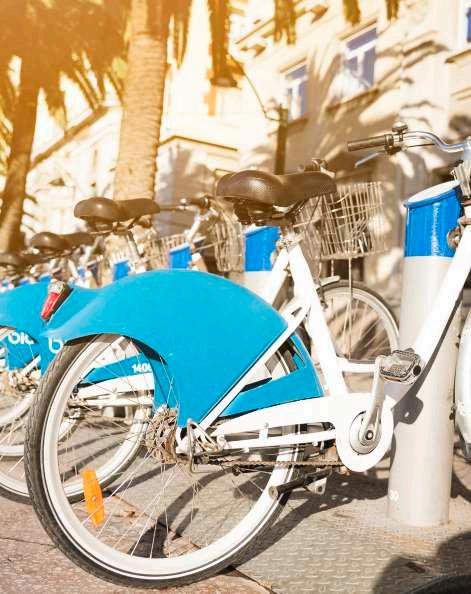
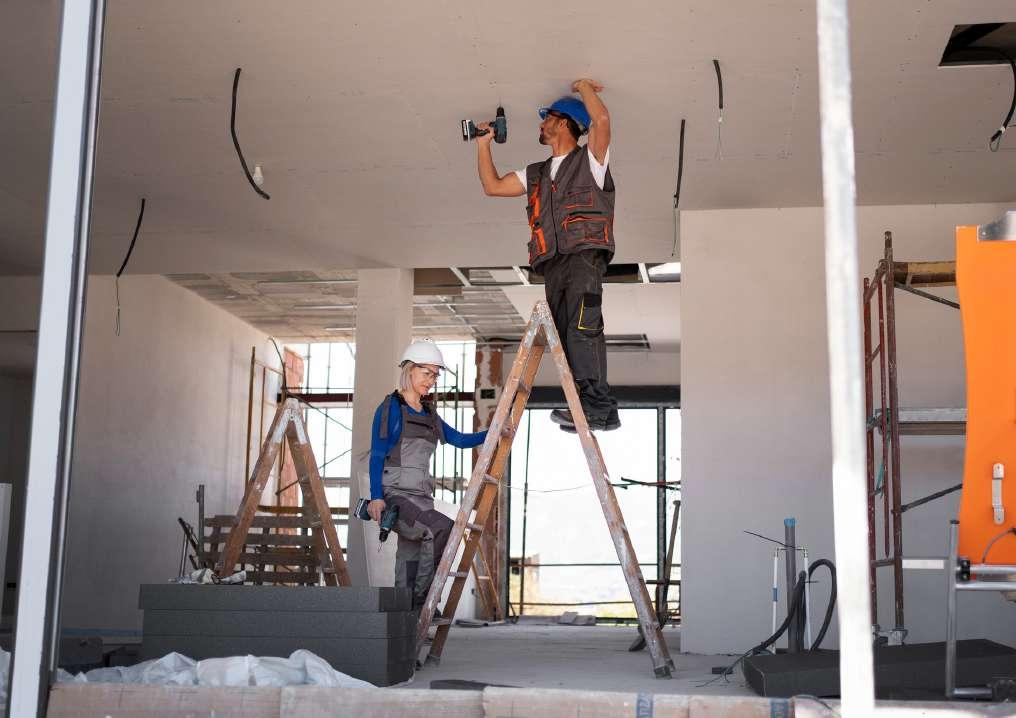
2.34. Unauthorized Construction
Residents are not allowed to carry out any construction work without prior approval from the Management Office or in cases where such work violates:
¾ The provisions outlined in the Resident Handbook.
¾ The construction and interior decoration procedures of the Condominium.
¾ General regulations of the Condominium and the laws of Vietnam.
All construction activities must strictly comply with applicable regulations to ensure safety, protect the building’s structural integrity, maintain overall aesthetics, and safeguard the rights of other residents. In case of violation, the Management Office reserves the right to order the immediate suspension of the construction and apply necessary sanctions as prescribed.



In necessary cases or as stipulated, the Management Office, service providers, contractors, or authorized personnel assigned by the Management Office accompanied by workers or technical staff and equipped with relevant tools may enter an apartment to perform one or more of the following tasks:
¾ Inspect or examine equipment connected to the Condominium’s shared systems.
¾ Provide services.
¾ Perform maintenance or upkeep of the Condominium’s shared systems.
¾ Carry out tasks as required by competent State authorities.
¾ During such operations, particularly in emergency situations, except in cases of damage due to negligence by the Management Office or involved personnel, the Developer, the Management Office, and all affiliated individuals shall not be held responsible or liable for any loss or damage to the apartment or related property.





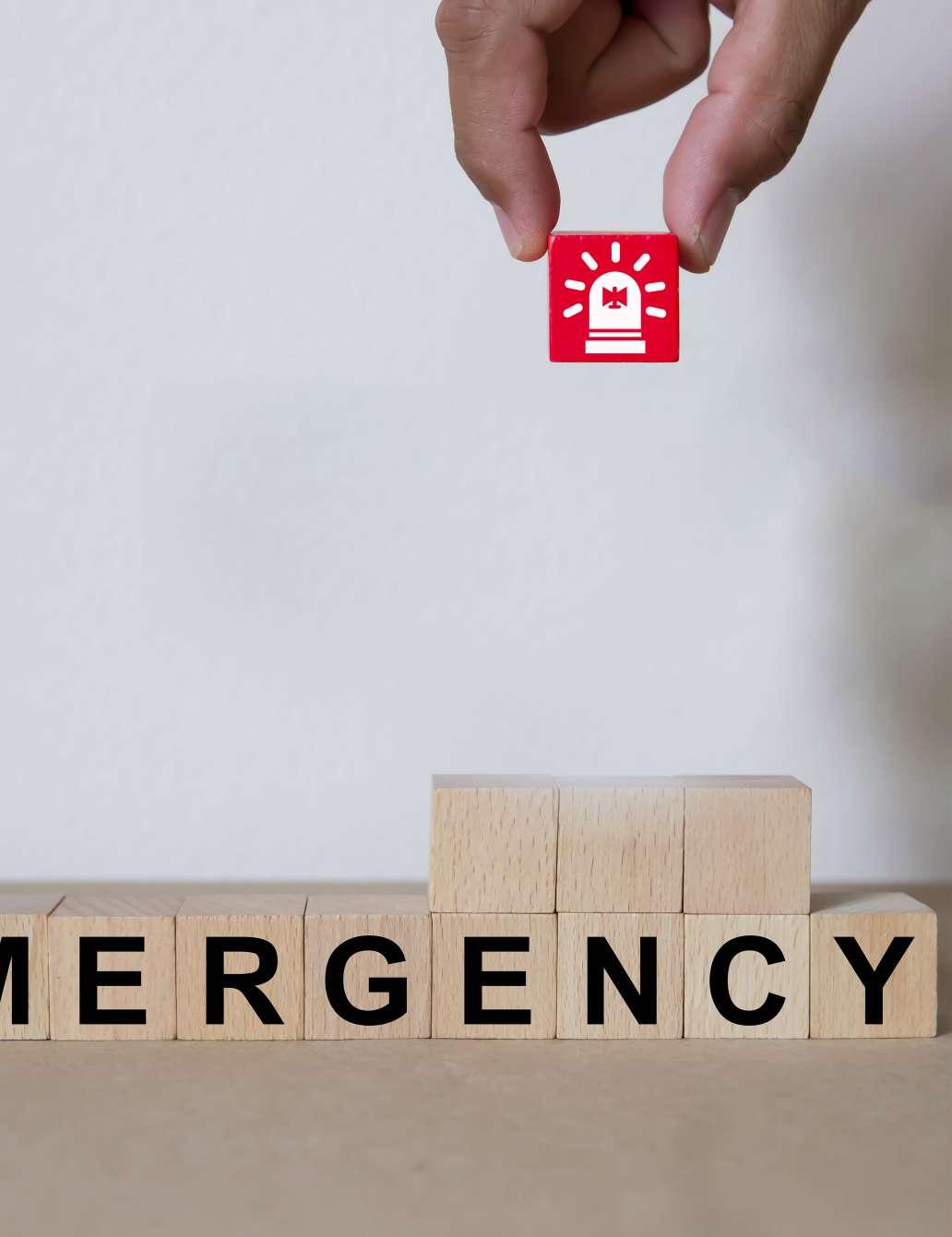


In emergency situations, the most important thing is for residents to know what to do to ensure their own safety and the safety of those around them.

To assist residents in prevention and response efforts, the Management Office has developed a comprehensive system of safety measures and emergency handling procedures, which are detailed in a separate document. We strongly encourage all Residents to take the time to thoroughly review these guidelines and protocols in order to be well-prepared for any situation.


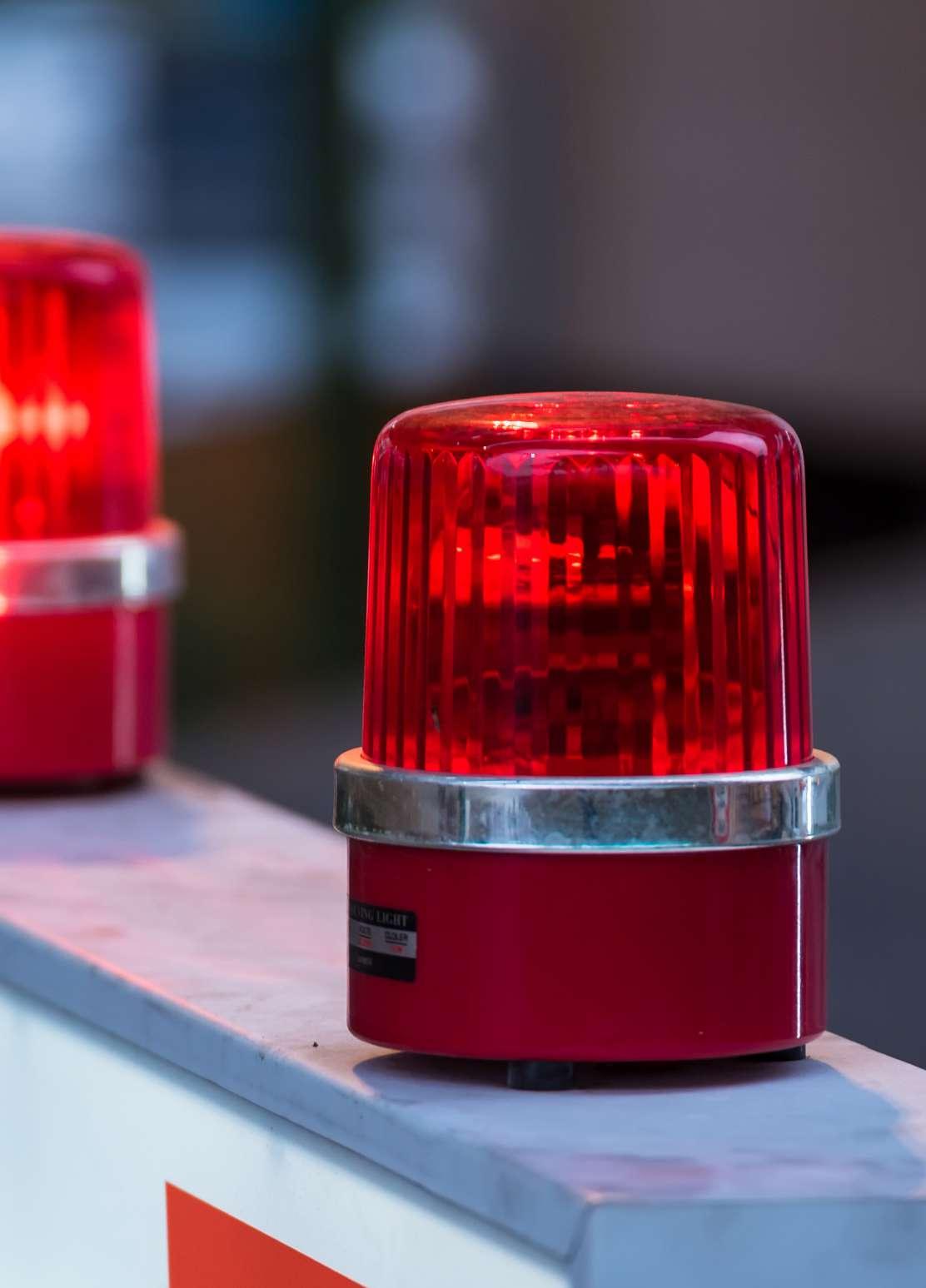



To ensure safety during emergency situations, residents must follow the evacuation principles below:
¾ Turn off the circuit breaker and lock the apartment door, then quickly exit the building via the nearest emergency staircase. Absolutely do not use the elevator in the event of a fire or earthquake.
¾ Carry only a mobile phone; if possible, bring a flashlight and sturdy shoes to prevent injuries from debris, sharp objects, etc. Do not carry heavy items during evacuation.
¾ Be cautious while moving to avoid falling objects such as bricks, glass, and electrical wires. If you find someone injured, call 115 immediately and perform first aid if possible.
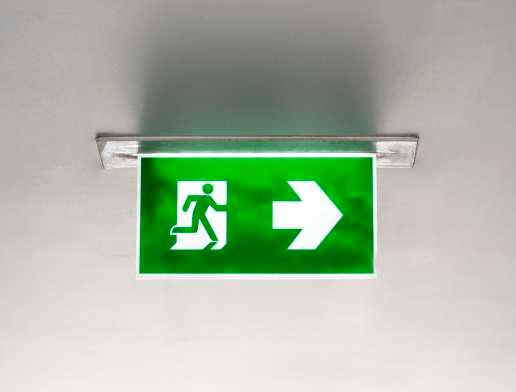
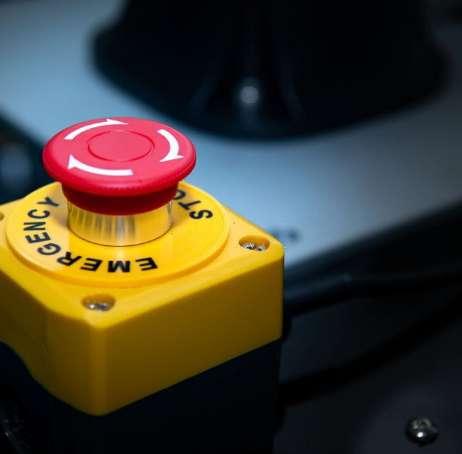
¾ Assist children, the elderly, people with disabilities, and pregnant women during evacuation.
¾ If you are trapped or unable to escape, contact the Management Office Hotline, the Security Team, or call 113 for assistance.
¾ After evacuating the building, gather at the designated safe area as instructed during fire safety drills. Do not return to the building until authorities confirm the emergency is over.
¾ Upon returning to your apartment, inspect for cracks, and check the electrical system, gas lines, and water pipes for any damage that may need immediate repair.
¾ Follow updates and instructions from the Management Office or local authorities via public announcements or television broadcasts.

The fire alarm system in each apartment is connected to the building’s centralized fire protection system and will automatically trigger an alert to the Security Team and Management Office for immediate inspection and response. Upon detecting a fire, residents must immediately take the following steps:
¾ Stay calm and rush to the nearest fire alarm button, break the glass box to activate the alarm.
¾ Call 114 to reach the fire department, provide the exact location and describe the situation.
¾ Notify the Management Office immediately for prompt action.
¾ Alert neighboring units (if possible) so they can respond in time.
¾ If the fire is manageable, use a fire hose or extinguisher (located inside the fire box) to put it out. If the fire becomes uncontrollable, evacuate immediately for your safety.
¾ Turn off all electrical appliances in the apartment to prevent the fire from spreading.
¾ If thick smoke is present, move close to the floor or crawl to the nearest emergency exit. Use a wet towel over your head and mouth/nose to avoid smoke inhalation.
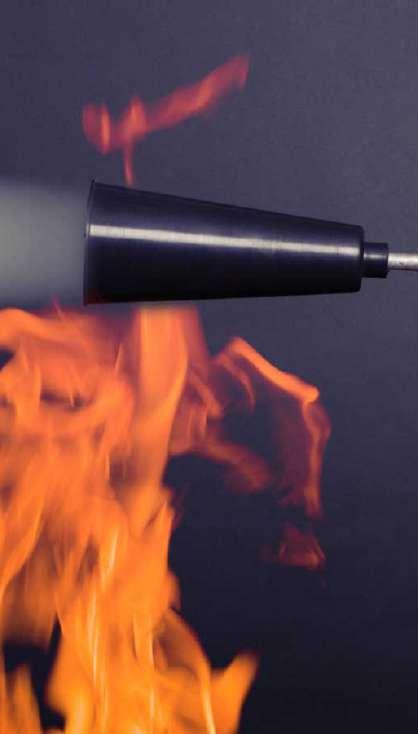



¾ Never use elevators during evacuation. Always use the emergency staircases.
¾ If the fire is caused by an electrical short, cut the circuit breaker and use an ABC dry powder extinguisher to put it out. Do not use water, as it may cause electric shock.
¾ If evacuation is not possible, call the Management Office or Security Team immediately, providing your exact location so that rescue teams can reach you quickly. Turn off the air conditioner to reduce airflow that may draw smoke in. Use wet cloths, curtains, or towels to seal the bottom of doors and prevent smoke from entering. Stay calm, avoid panic, and wait for emergency responders to arrive.


The following steps will help residents prevent fire incidents and be prepared in case a fire occurs:
¾ Ensure you and your family are familiar with the locations of all emergency exits, staircases, fire alarm buttons, fire extinguishers, and fire hoses in the building.
¾ Familiarize yourself with the location of fire alarm switches to be able to activate them quickly when needed.
¾ Before leaving your apartment, always check and turn off electrical devices such as lights, air conditioners, heaters, televisions, electric stoves, and microwaves to minimize the risk of short circuits or fire.
¾ Keep entrances, hallways, and staircases clear at all times. Do not place any items that block escape routes. The Management has the right to remove obstructive items without prior notice.
¾ Avoid using too many electrical appliances simultaneously, which can overload the power supply. Regularly inspect and maintain electrical devices in your apartment.
¾ Absolutely do not store chemicals or flammable and explosive materials in your apartment to minimize fire risk.
¾ Equip your apartment with a CO2 fire extinguisher to proactively handle emergency situations when necessary.
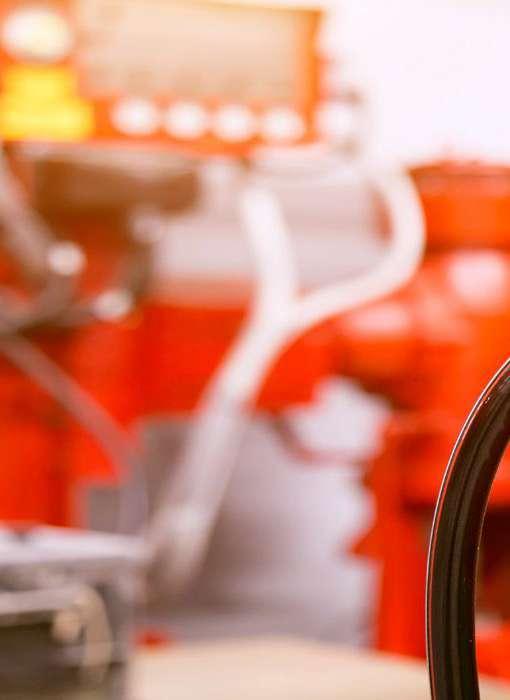

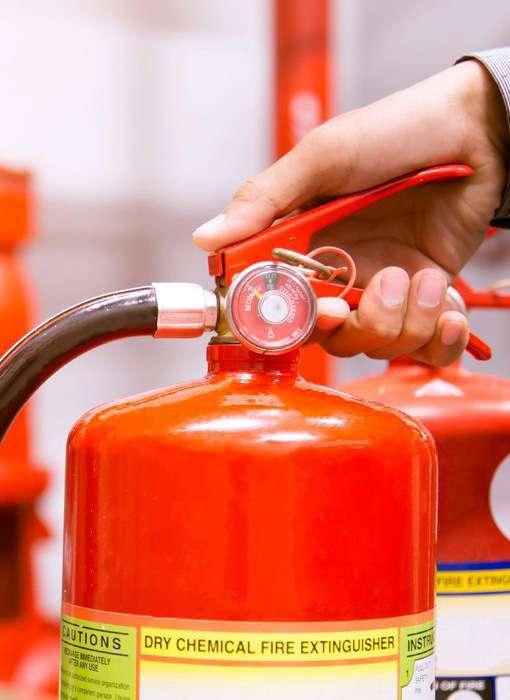




In the event of flooding or water leakage, residents are kindly requested to follow the measures below to minimize damage:
¾ If you notice signs of water leakage in your apartment or suspect that water is leaking from the unit above or nearby, promptly inform the Management so that technical staff can inspect, identify the cause, and isolate the water source by checking the water meters of the relevant floor.
¾ Once the source of the leak is identified, immediately shut off the water valve to limit water overflow.
¾ Move or protect household items and personal valuables to prevent water damage.
¾ Close doors to adjacent areas to prevent water damage from spreading to other spaces in the apartment.
¾ In case of evacuation, make sure to turn off all electrical devices before leaving the apartment to prevent the risk of electrical short circuits.
¾ Safeguard important documents and valuables by storing them in a secure place or taking them with you when leaving the apartment.




When a tropical storm or typhoon warning is issued, residents are kindly advised to take the following precautions to ensure personal and property safety:
¾ Secure and fasten objects that could fall or topple over to avoid injury or damage.
¾ Close and securely lock all doors and windows before and after the storm to prevent wind and rain from entering the apartment.
¾ Stabilize outdoor plants and move potted plants, tables, and chairs from the balcony indoors to prevent storm damage or falling objects.
¾ Inspect the drainage systems on balconies and other areas to ensure they are not clogged, preventing water accumulation or flooding.
¾ After the storm has passed, promptly repair or replace any damaged window glass or external fixtures to maintain safety.

When an earthquake occurs, the most important thing is to remain calm and ensure your personal safety, as aftershocks may follow. Minimize unnecessary movement and seek a safe shelter immediately at your current location. Only leave the building once you are certain that the outside environment is safe. The following are specific guidelines to help you prepare for and respond to an earthquake:
¾ Minimize movement and avoid panic; focus on finding a safe shelter.
¾ Protect your head by crouching down and covering your head and face with your hands. In case of a power outage, the emergency lighting system will automatically activate.
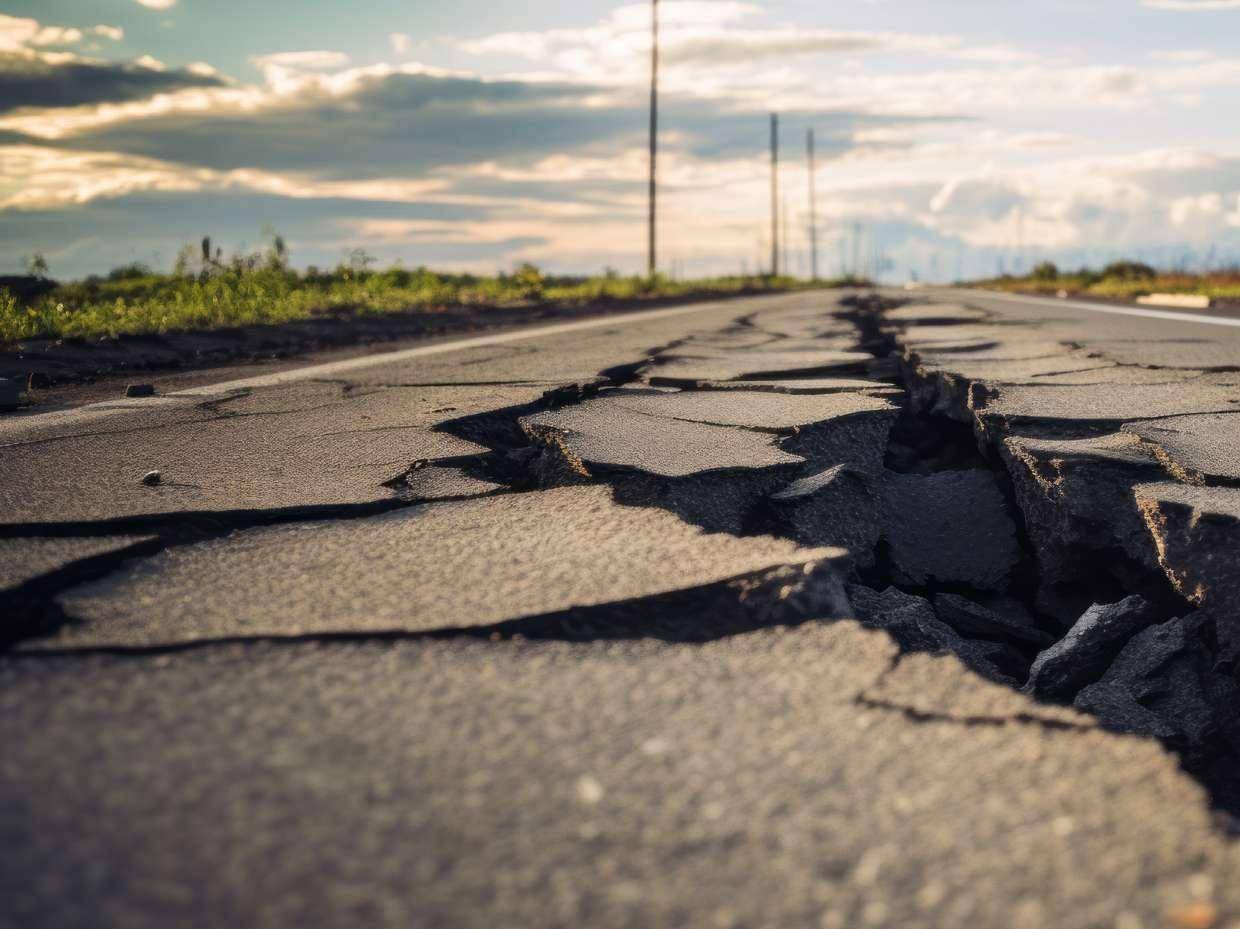



¾ If you are inside the building, seek shelter near load-bearing walls or large structural columns, and stay away from windows, glass, and items that may fall.
¾ If you are in a supermarket or store, cover your head with a bag or jacket, avoid falling items from shelves, and move to an open area between the aisles.
¾ If you are in your apartment, sit close to the floor and crawl under a table or sofa to avoid falling objects. If no suitable furniture is available, use your hands to cover your face and head, curl up, and take shelter in a corner of the room.
¾ Avoid standing near windows, glass, mirrors, or hanging lights to prevent injury from broken glass or falling objects.
¾ After the tremor stops, leave the building only if you feel it is safe, and use the stairs for evacuation. Never use the elevator under any circumstances.


Note:
¾ The automatic fire alarm or sprinkler system may be triggered by the tremor even if there is no actual fire. In such cases, residents should remain calm and continue to shelter safely until the earthquake has completely stopped.
¾ In case you are trapped under debris:
¾ Do not light a match or use a lighter to avoid the risk of fire or explosion.
¾ Avoid moving too much or stirring up dust, as it may make breathing difficult.
¾ If you have a handkerchief or cloth, use it to cover your nose and mouth to avoid inhaling dust.
¾ Try to signal for help by tapping on pipes, walls, or any hard object so that rescuers can locate your position.
¾ If you have a whistle, use it to make noise instead of shouting, as yelling may cause you to inhale more dust or toxic gases. Only call out for help if absolutely necessary and no other option is available.





In the event of being trapped in an elevator, residents should stay calm and follow the steps below to ensure safety:
¾ Do not panic; remain calm to avoid disturbing others in the elevator.
¾ Press the emergency call button on the elevator control panel to alert the Building Management or Security Team.
¾ Communicate with the rescue team through the intercom system installed inside the elevator to report your current situation.
¾ Provide critical information, especially if there are elderly individuals, pregnant women, or children in the elevator, and notify immediately if an ambulance or medical support is needed.
Follow the instructions given by the rescue team and do not attempt to escape by forcing the doors open or climbing out of the elevator.



It is highly unlikely that Management staff or residents will face a bomb threat. In fact, bomb-related terrorism is still quite rare in Vietnam. Perpetrators of bomb threats or terrorist acts may have various motivations. They might harbor resentment toward an individual or organization, or they may suffer from mental instability and seek to intimidate others.
Others may engage in terrorism or criminal acts simply for media attention or as a way to pass time after work. Although up to 99% of bomb threats turn out to be hoaxes, ALL such threats must be taken seriously, regardless of their motive. A well-prepared response plan and appropriate action measures can help prevent potentially dangerous situations.

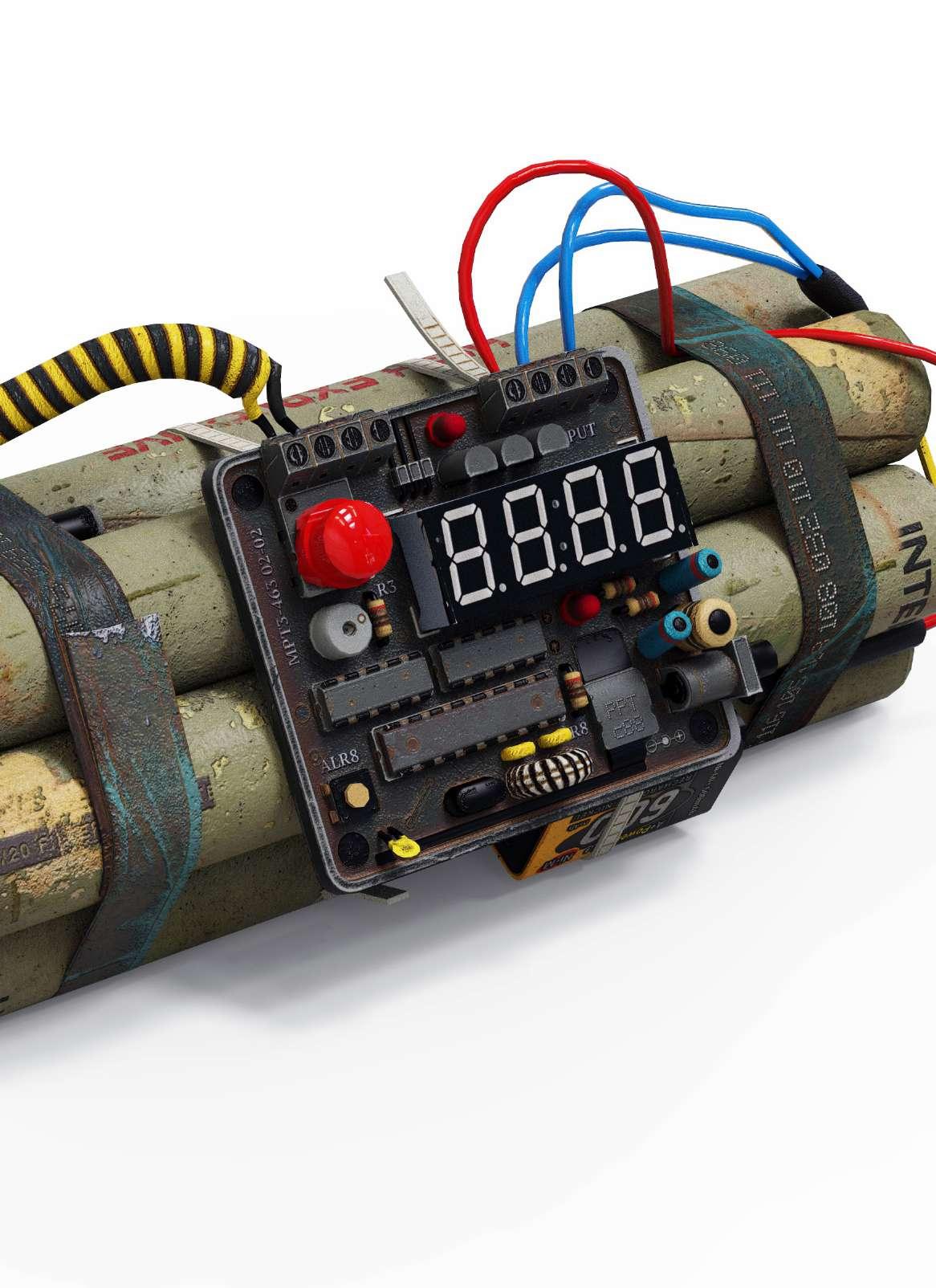

Upon receiving a bomb threat call, the most important thing is to remain calm and gather as much information as possible, while immediately notifying the Building Management and relevant authorities. Please follow the steps below:
¾ Do not interrupt the caller; try to prolong the conversation as much as possible to gather important information.
¾ Take detailed notes of the entire call, including:
y Time the call was received.
y Exact wording of the threat made by the caller.
y Time or location where the explosive is allegedly placed (if mentioned).
y The reason given by the caller for making the threat (if any).
y Voice characteristics: gender, estimated age, tone (calm, angry, nervous), speaking speed (slow, fast), accent, and language used.
y Background noises: traffic, music, people talking, etc., which may help identify the caller’s location.
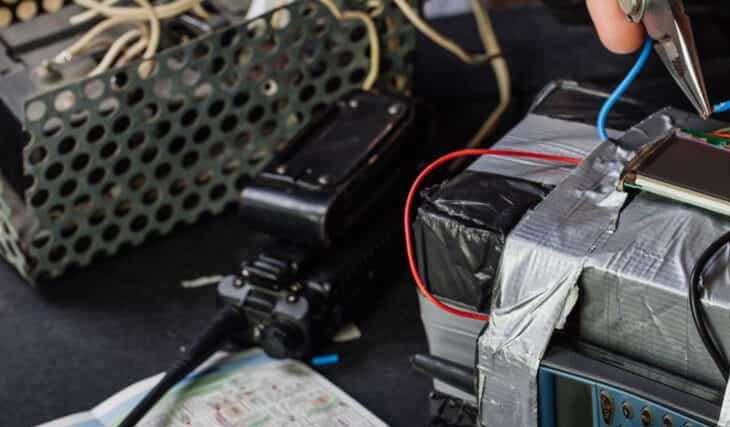



¾ Do not share any information about the call with anyone other than the Building Management and authorities to avoid unnecessary panic.
¾ Immediately notify the Building Management, building security, and call 113 to involve the authorities in the investigation.
¾ Follow the instructions of the authorities and the Building Management in all situations, including evacuation if required.
Every threat, no matter how insignificant it may seem, must be treated with the highest level of caution to ensure the absolute safety of all residents.

Letter bombs are designed to be safe during transportation but may explode when opened or triggered by electrical or mechanical devices. They are typically sent to a specific address and often resemble gifts or small parcels. If you discover a suspicious package that may be a letter bomb, immediately take the following precautions:
¾ Do not touch, move, or open the package. Leave it exactly as it is.
¾ Evacuate everyone from the area immediately and maintain a distance of at least 8 meters from the suspected letter bomb.
¾ Immediately inform the Building Management and Security Team, and call 113 to alert the authorities.



¾ Never touch, move, or open the package under any circumstances. Only trained professionals should handle the situation to ensure safety.
¾ If possible, note or remember the package’s details - such as size, color, labels, unusual handwriting, strange odors, or exposed wires - without physically touching it.
¾ Do not use mobile phones or wireless devices near the suspected package, as some bombs can be triggered by electromagnetic signals.
¾ Follow all instructions from the authorities and do not return to the hazardous area un-til it has been officially declared safe.

In the event of civil unrest occurring outside the building, the Building Management and Security Team will immediately lock down all entry and exit points to ensure safety. Simultaneously, the Management will contact the nearest police authority to report the situation and provide accurate updates to residents.
¾ Handling Aggressive Individuals
y Stay calm and avoid any actions that may escalate the situation.
y Isolate the aggressive individual in a less crowded area to reduce the risk of further conflict.
y Coordinate with security personnel or other staff to resolve the dispute calmly through mediation.
y Immediately notify the Building Management for appropriate intervention.
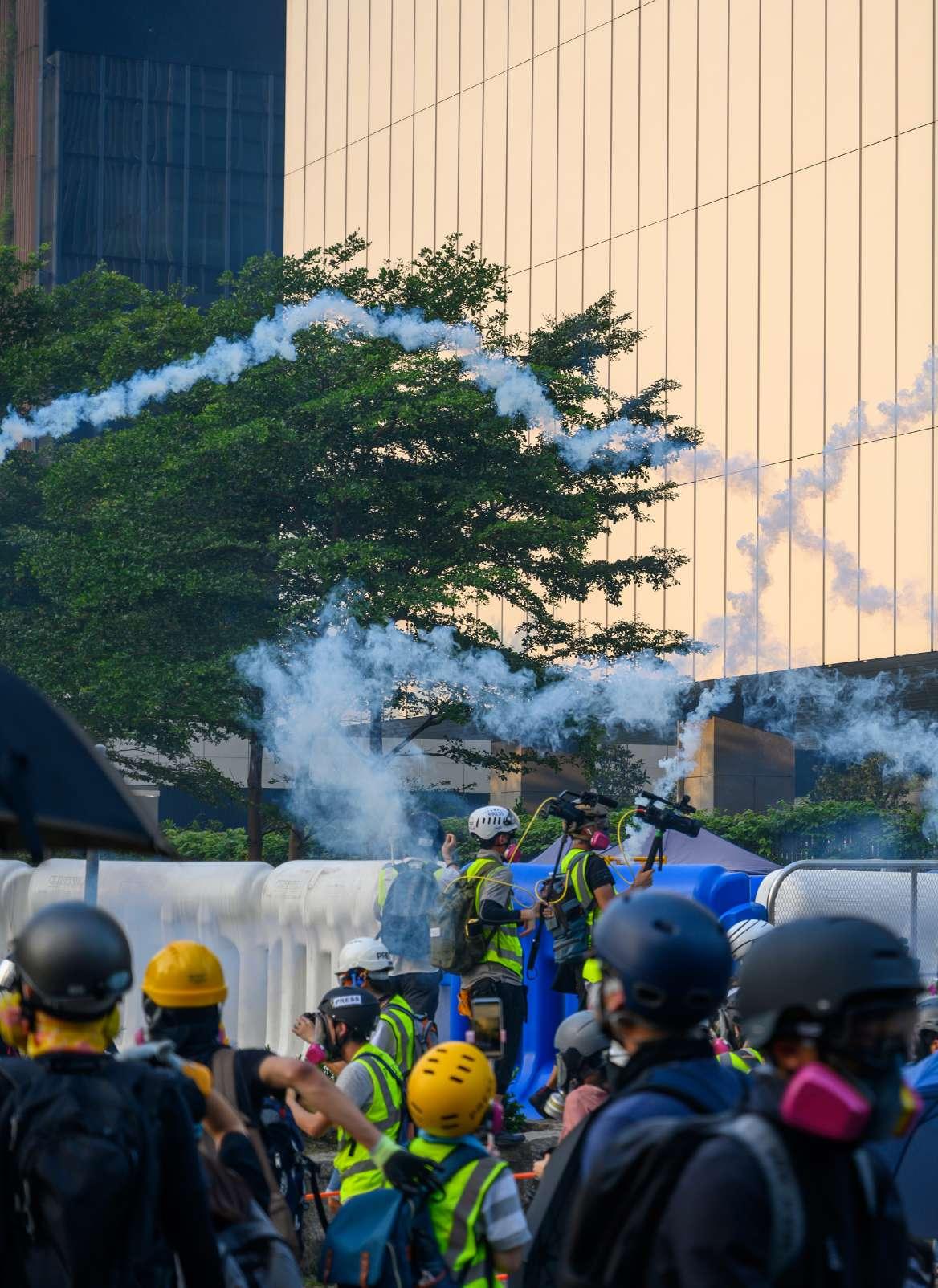

¾ In case of theft or serious illegal acts affecting residents and property
y Immediately report to security staff or the Building Management and provide detailed information such as images or video footage (if available), location, time, identifying characteristics, clothing, weapons (if any), and the direction the suspect fled.
y Call 115 to provide first aid to the victim (if there are any injuries).
y Preserve the scene and monitor any evidence to support the investigation. Do not handle or move any items until the authorities arrive.
The Building Management will cooperate with the authorities to maintain security and protect the rights of residents.
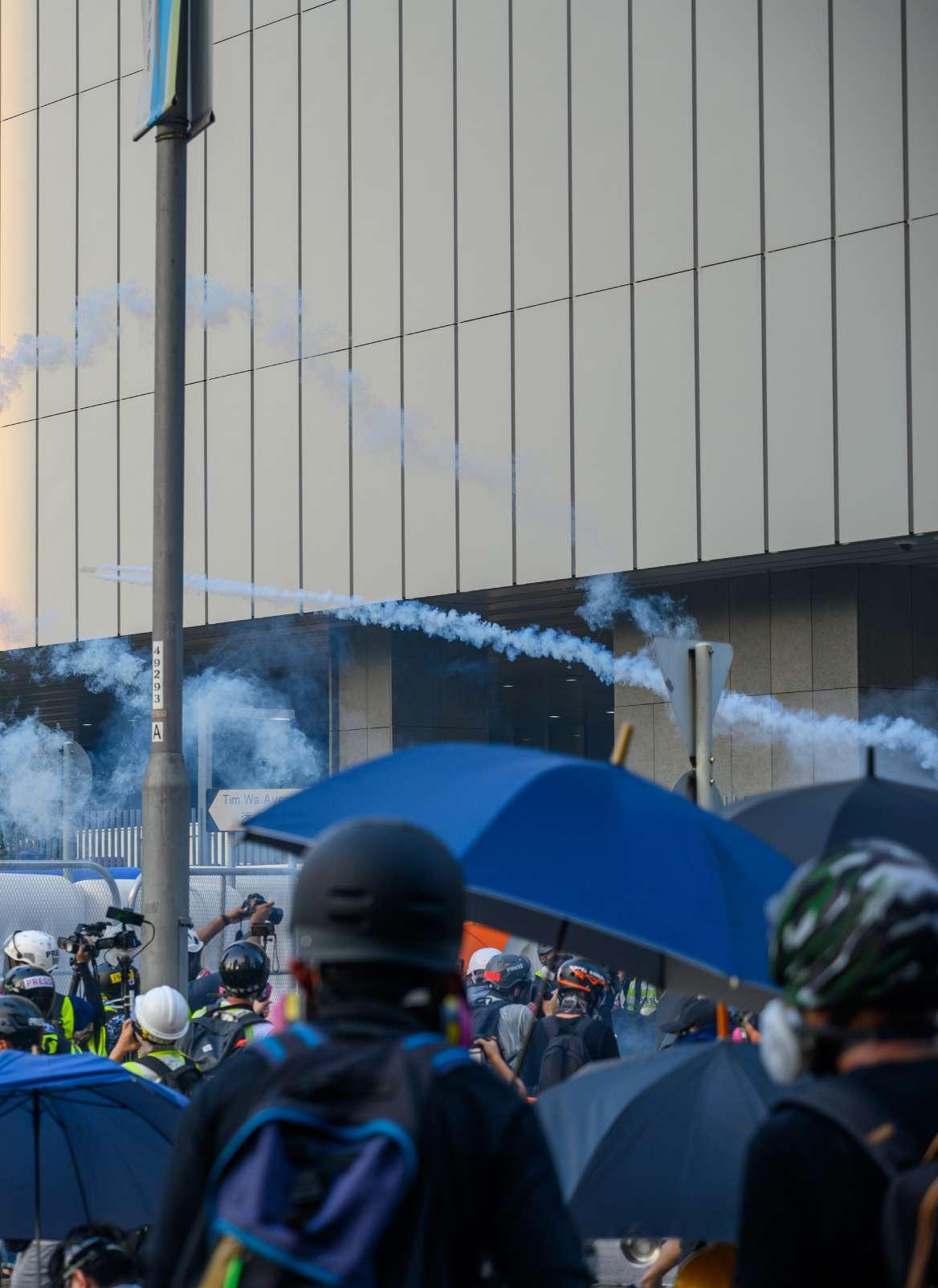

If you notice any suspicious individuals or unusual behavior inside or around the Scenia Bay building, please immediately notify the security staff, the Building Management, and, if necessary, report the situation to the police for timely handling.
¾ The public areas within the building are shared-use spaces; therefore, the risk of theft or misconduct may occur and cannot be completely prevented.
¾ Building Management is not responsible for any accidents, injuries, damage, or loss of property and personal safety that occur in public areas due to the actions of third parties. These areas include elevators, shopping zones, parking lots, recreational facilities, stairwells, and areas surrounding the building.
To ensure personal safety and property protection, residents are advised to stay vigilant, avoid leaving valuables in public areas, and follow the security measures set out by the Building Management.




First aid consists of immediate medical assistance provided to victims before professional medical personnel arrive. Simple but timely actions can play a vital role in preserving life and minimizing long-term damage. Therefore, residents are encouraged to equip themselves with basic first aid knowledge to protect themselves and help others when needed.
First Aid Principles - ABC Order
The first step in first aid is to assess the situation and the victim’s condition, then follow the ABC order:
¾ Ensure the airway is clear. Remove any obstruction to prevent suffocation.
¾ Check if the victim is breathing. If not, perform artificial respiration (CPR) immediately.
If no heartbeat or pulse is detected, perform chest compressions to support blood circulation.



Properly administered first aid can save lives in critical situations. Therefore, residents are encouraged to participate in first aid training courses organized by the Management Office or medical authorities to improve their emergency response skills.

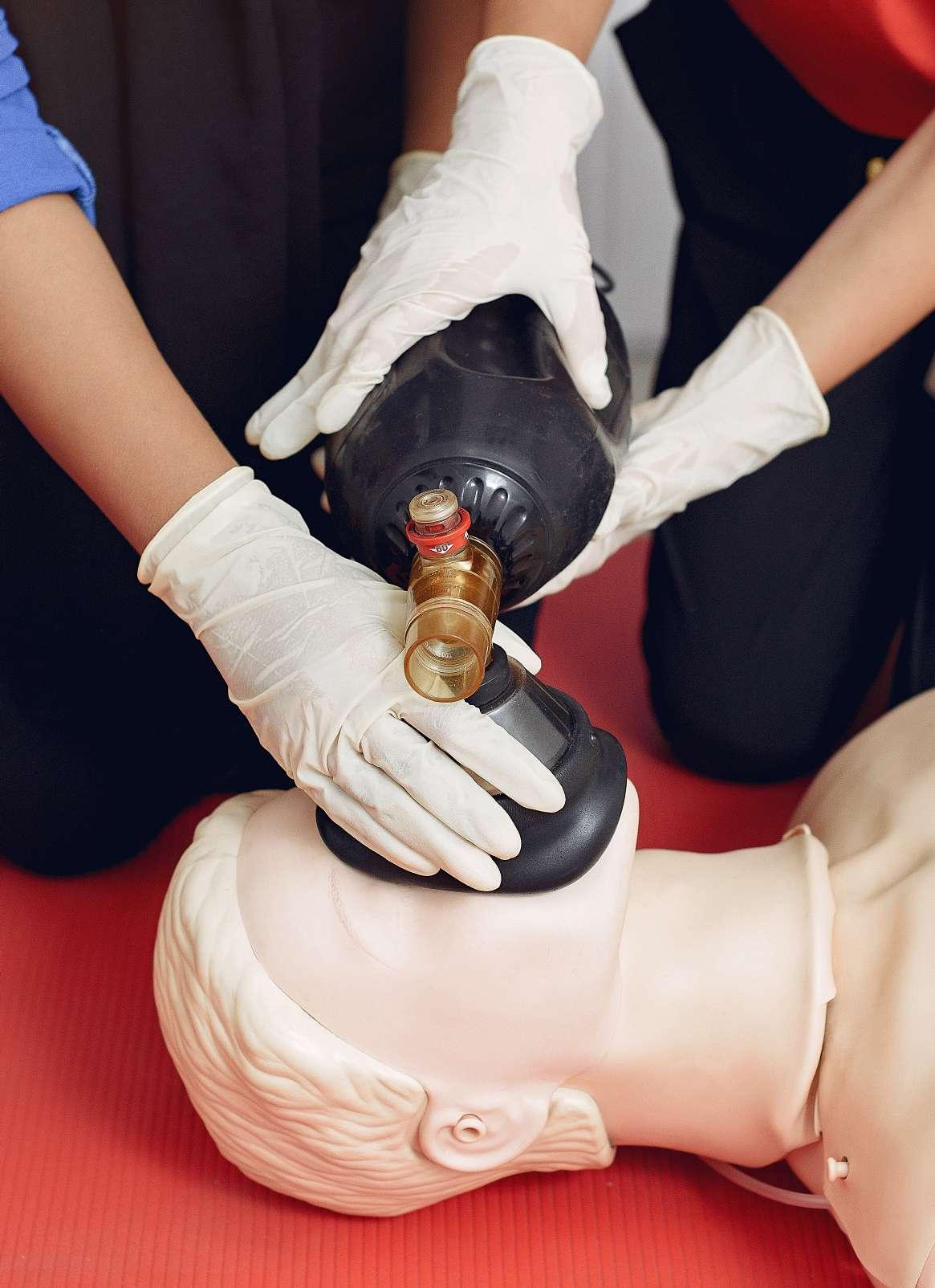


¾ Stop bleeding: Apply direct pressure to the wound using a clean bandage or hand (if no bandage is available). Elevate the injured limb above heart level to reduce bleeding.
¾ Check for signs of shock or broken bones: If the victim shows signs of shock (pale skin, rapid breathing, sweating, unconsciousness), lay them down, elevate their legs, and keep them warm. Do not move suspected fractures unless there’s a life-threatening danger (fire, collapse...).
¾ Check for ID or medical cards: Some individuals with conditions like diabetes, epilepsy, heart disease, or severe allergies may carry medical cards. If found, follow any instructions provided.
¾ Seek emergency medical help quickly: Call 113 (police), 114 (fire), or 115 (ambulance), and provide details about the victim’s condition and the accident location.
¾ Loosen clothing: Helps the victim breathe more easily, especially in cases of suffocation, shock, heatstroke, or unconsciousness. Ensure the neck, chest, and abdomen are not restricted.
¾ Always stay calm: In any emergency, remaining calm is key to assessing the situation and applying first aid correctly. If others are present, guide them to assist rather than panic.



If you encounter a bleeding victim, have them lie down and immediately perform bleeding control using the following methods:
¾ Apply direct pressure to the wound: Use sterile gauze, clean cloth, clothing, or a gloved hand to apply firm pressure directly on the bleeding area. If bleeding continues, press on the artery supplying blood to the injured area to reduce blood flow:
¾ For arm injuries: press on the inner arm, just below the armpit or above the elbow.

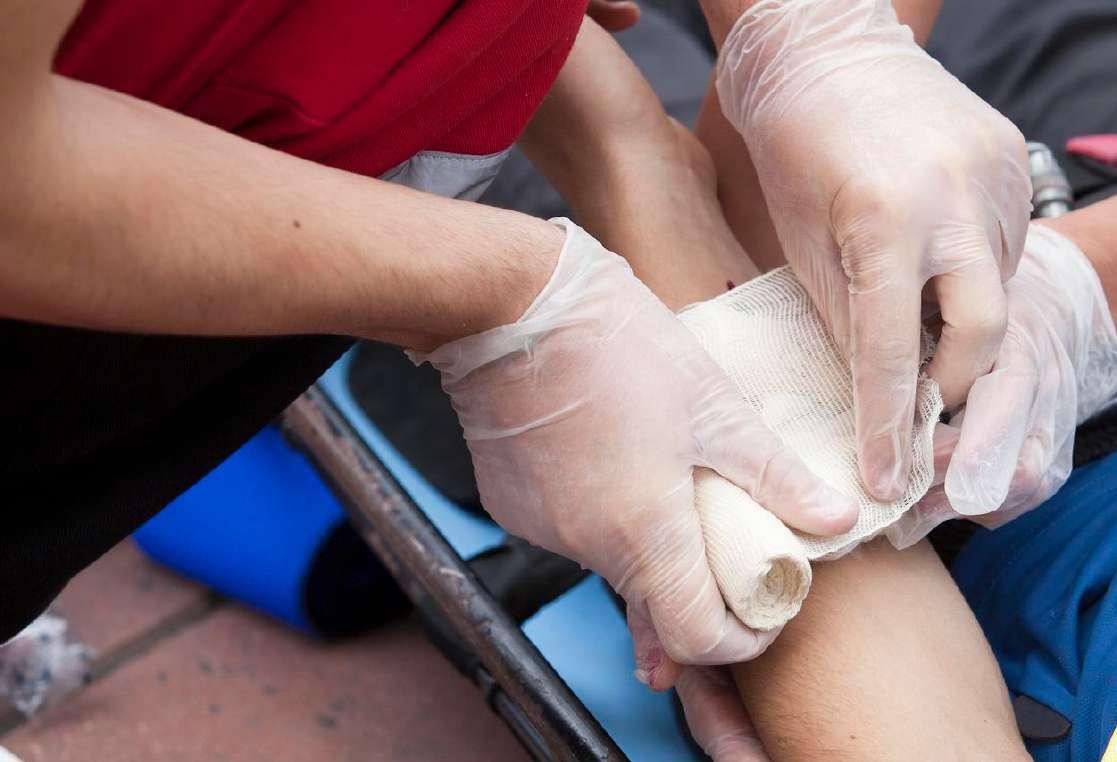


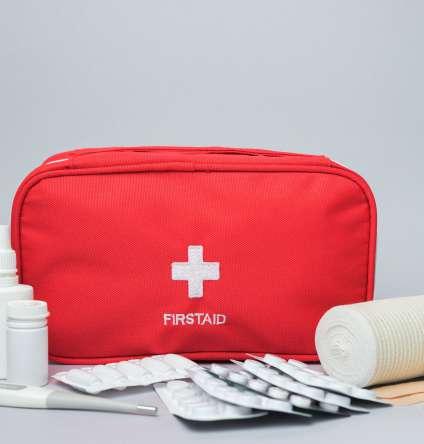

¾ For leg injuries: press on the back of the knee or the groin area to reduce bleeding.
¾ Maintain constant pressure on the wound until the bleeding stops. Use a bandage, tape, or clean cloth to secure the dressing.
¾ Once the bleeding has stopped, bandage and stabilize the wound, and immediately call for emergency services or take the victim to the nearest medical facility for evaluation and treatment.

If the victim hears or feels a bone break, or shows signs such as severe pain, swelling, limb deformity, pain during movement, loss of mobility, grating sensation, or discoloration at the fracture site, the following steps should be taken immediately:
¾ Keep the victim warm and completely still. If signs of shock appear, provide first aid for shock immediately. Do not move the victim unless their life is in danger.
¾ If the fracture is closed (no broken skin): Splint the fractured bone, ensuring that both the joint above and below the fracture are immobilized. Example: For a lower leg fracture, the ankle and knee joints must both be immobilized to properly stabilize the bone.

¾ If the fracture is open (with broken skin and bleeding): Press gauze on the wound to stop the bleeding and bandage it. Treat it as you would a bleeding wound, and be careful not to raise the injured limb. After the bleeding has stopped, apply a splint to immobilize the fracture. (Note: If no medical splint is available, use sticks, broom handles, or rolled-up newspapers/magazines to create one).
¾ Call emergency services immediately or take the victim to the nearest medical facility for timely treatment.




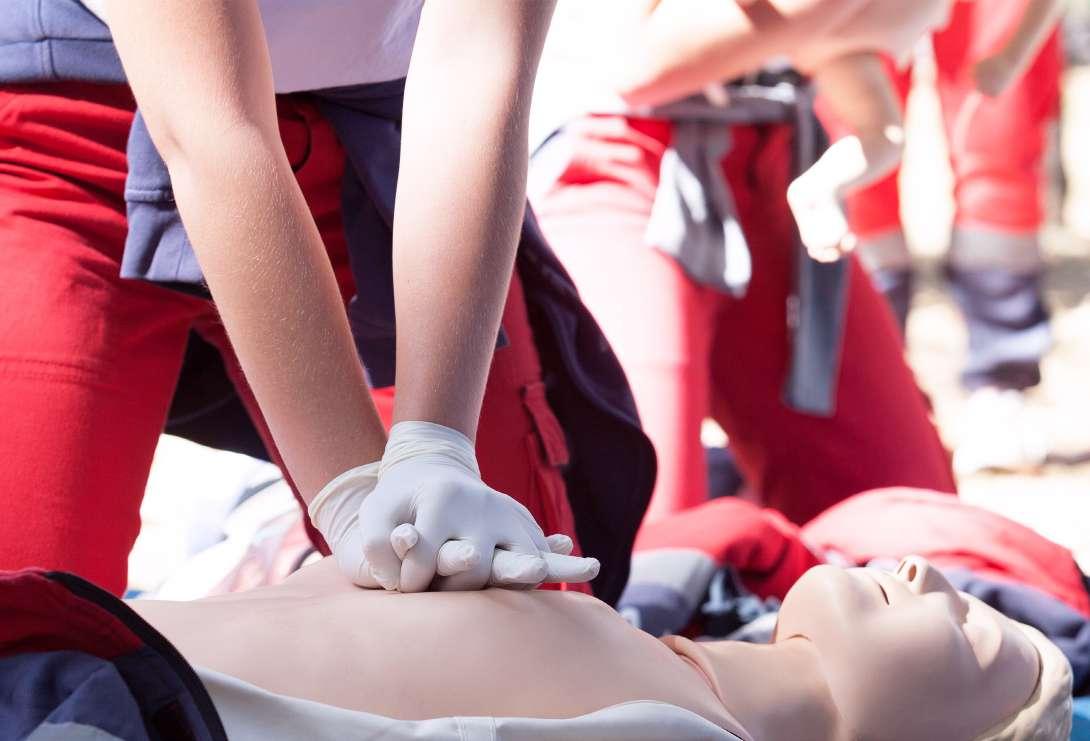
Shock is a life-threatening condition if not treated promptly. In emergency care, shock has different levels depending on the cause. Note: Never give food or drink to a person in shock.
¾ Signs of shock include:
y Weakness, confusion, or unconsciousness
y Cold, pale, and clammy skin
y Rapid and weak pulse
y Shallow and irregular breathing
y Chills or nausea
y Possible fainting

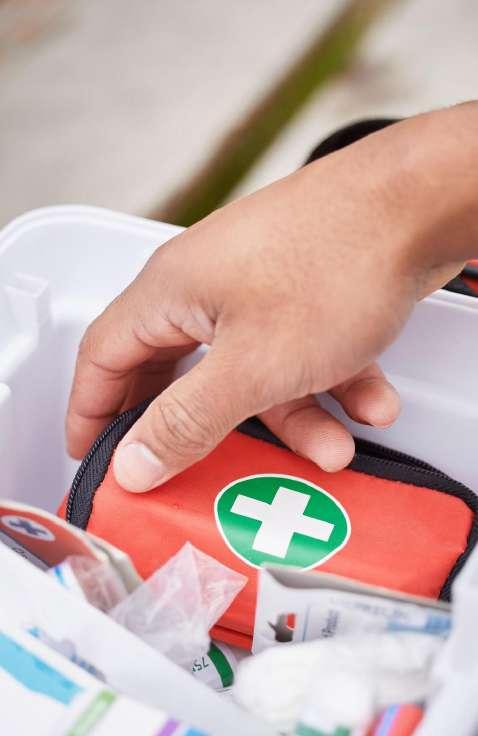

¾ Once a victim is identified to be in shock, follow these first aid steps to ensure safety and increase the chances of recovery:
y Address the cause of the shock immediately, such as bleeding, difficulty breathing, or pain. If the victim has lost a significant amount of blood, apply pressure to stop the bleeding right away.
y Ensure the airway is clear. If the victim shows signs of nausea, gently turn their head to the side to prevent choking and clean any vomit if needed.
y Keep the victim warm and position them appropriately. If there is no head or spinal injury, lay the victim flat and elevate their legs about 25 cm (10 inches) to improve blood circulation to the heart. If the victim has a head or chest injury, raise their head and shoulders slightly to aid breathing.
y Call emergency services (115) or contact the nearest medical personnel for immediate assistance.


If you find a person having difficulty breathing and unresponsive (no reply when called or shaken), take the following first aid steps and call for emergency help immediately:
¾ Call emergency number 115 right away or seek assistance from the nearest doctor or medical staff.
¾ Observe signs of breathing difficulty such as: breathing too slowly (under 5-6 times/min) or too fast (over 40-50 times/min), neck and chest retractions, bluish lips, pale skin, dizziness, chest

pain, rapid pulse, dilated pupils, or unconsciousness.
¾ Lay the victim flat on their back. One hand should press the forehead, and the other should lift the chin to open the airway.
¾ Check and clear the airway. Use your index finger to check for any obstructions in the mouth or throat. If found, gently remove them to clear the airway.

¾ Observe for natural breathing. Look for the rise and fall of the chest and abdomen, listen for breath sounds, and feel for airflow from the victim’s mouth or nose.
¾ If the victim is not breathing, begin artificial respiration (rescue breathing) immediately.
¾ Regularly check the carotid pulse to monitor circulation and ensure the victim has not gone into cardiac arrest.
¾ Note: These steps must be carried out quickly and precisely to maximize the chances of saving the victim.


When the airway is partially blocked but the victim can still breathe, the person may show signs like coughing with wheezing sounds. In such cases, follow these steps:
When a victim has an airway obstruction, assess the level of blockage in order to apply the appropriate response.
¾ Partial airway obstruction with ability to breathe:
y Partial airway obstruction with ability to breathe
y Response:
à Encourage the victim to cough forcefully to expel the object.
à Do not drink water or try to swallow the object, as this may worsen the obstruction.
¾ Partial or complete airway obstruction, still conscious
y Signs:
à Weak or absent coughing.
à Difficulty breathing, wheezing, gasping for air.
à Clutching throat with hands (universal choking sign), bluish or pale skin.






y Adult first aid procedure:
à Stand behind the victim, wrap your arms around their abdomen.
à Make a fist with one hand and place it above the navel, below the breastbone.
à Place the other hand over the fist and thrust inward and upward forcefully.
à Perform 5 consecutive thrusts, check if the object is expelled. Repeat if necessary.
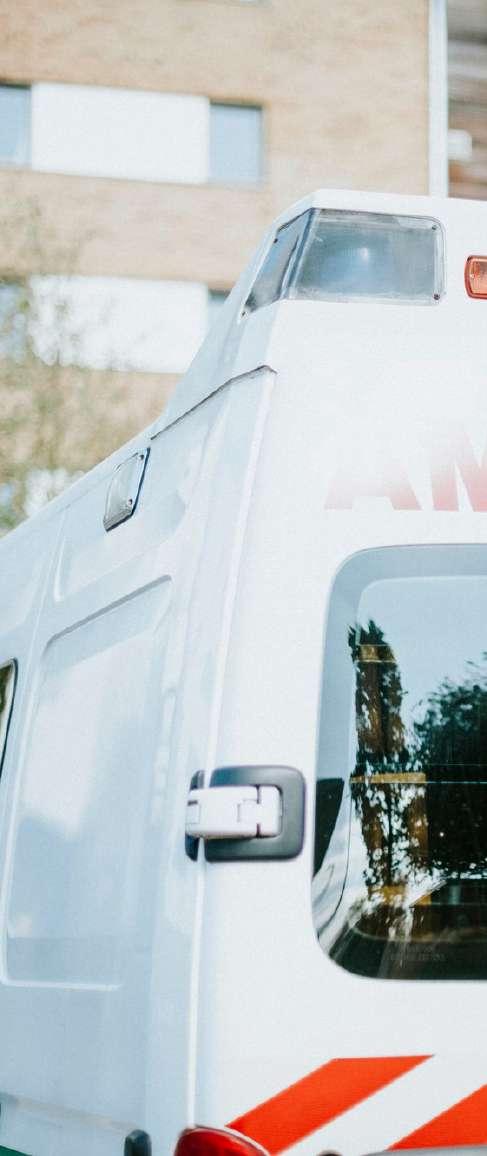



y Procedure for infants:
à Lay the baby face-down across your forearm, head lower than the body.
à Use the heel of your free hand to give 5 quick, firm back blows between the shoulder blades.
à Turn the baby over and give 5 chest thrusts using two fingers.
à Check if the baby resumes normal breathing. Repeat if necessary.
y Victim is unconscious and not breathing
à Call emergency services 115 immediately.
à Begin CPR (cardiopulmonary resuscitation) without delay.
à Check the airway. If a foreign object is visible, gently remove it, but do not blindly sweep the mouth if you can’t see anything.
à Continue CPR until emergency personnel arrive or the victim starts to recover.
¾ Note: Quick and proper first aid can save the victim’s life. If the condition doesn’t improve, seek additional medical help immediately.

Stroke is a medical emergency that requires rapid recognition and timely intervention to minimize the risk of permanent brain damage. In such cases, waiting for medical professionals or improperly moving the victim can worsen bleeding or cause delays that may result in more severe outcomes.
¾ Recognizing a Stroke
If someone suddenly loses balance, trips, then recovers and feels fine, do not ignore it. This is especially important for the elderly or those with a history of high blood pressure, diabetes, or cardiovascular disease, as it may be an early sign of a stroke. Below are key signs to quickly recognize a stroke using the FAST rule:
y F (Face): Check if one side of the face droops by asking the person to smile or make a facial expression. If one side does not move, it is a warning sign.
y A (Arms): Ask the person to raise both arms. If one arm is weak or drops down, they may be having a stroke.
y S (Speech): Ask the person to say a simple sentence. If they slur their words, speak with a distorted voice, or cannot understand the sentence, it is a serious sign.
y T (Time): If any of the above signs are observed, call emergency services (115) immediately to minimize brain damage.




y Call emergency services (115) immediately, as quickly as possible, because time is a critical factor.
y Keep the patient in a safe side-lying position if they are unconscious, to prevent choking in case of vomiting.
y Do not give them any medication, water, or food, as this may obstruct the airway.
y Observe other signs such as breathing rate, facial color, and responsiveness, and inform the medical staff when they arrive.
Observe other signs such as breathing rate, skin color, responsiveness, and report these to medical personnel upon their arrival. Proper handling within the first 3-4 hours can significantly reduce the risk of death and permanent brain damage.
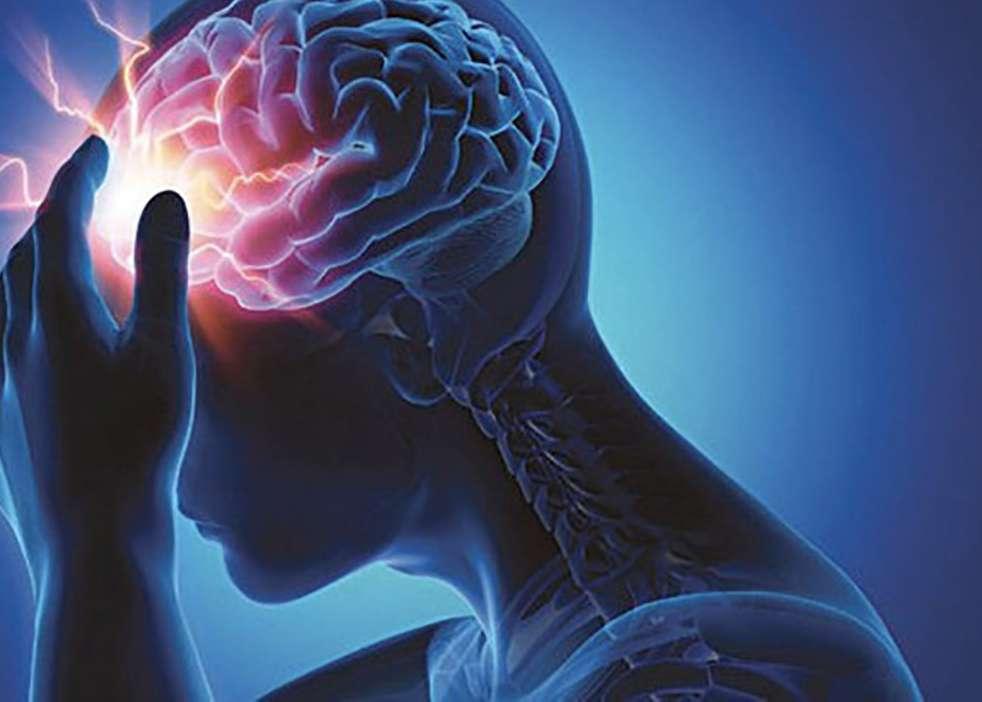









To ensure durability and maintain the aesthetic of homogeneous/ ceramic tiles, proper cleaning and maintenance should be carried out as follows:
¾ Initial cleaning: Use a dust mop or soft broom to remove dust and construction debris left after completion. Use dry, soft dust cloths that have not been chemically treated.
¾ Periodic cleaning: Use nonalkaline, tile-specific cleaning solutions or chemicals to regularly clean the floor, removing stains without damaging the tile surface.

¾ Avoid abrasive materials: Do not use aluminum scouring pads, green scrubbers, or any highly abrasive scrubbing tools as they may scratch or remove the glossy protective layer of the tiles.
¾ Rinse thoroughly: After scrubbing, rinse with clean water to remove all cleaning residues. Change the water frequently when mopping to avoid dirt buildup.
¾ Prevent slipping: Ceramic tile floors can be slippery when wet, so dry up any spilled water, liquids, or substances promptly to ensure safe movement.
¾ Avoid strong impacts: Do not drop heavy objects on the floor to prevent tile cracks or chips, which may affect both aesthetics and quality.
Proper maintenance helps ceramic tile floors stay durable and beautiful, ensures safety, and keeps the living space clean.

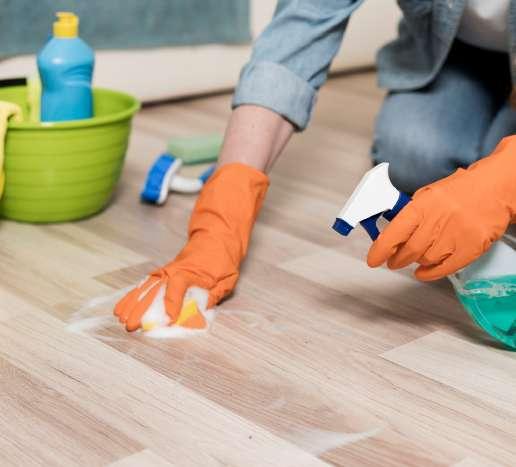



If the installation of wooden flooring is not done carefullyespecially if the gaps between panels are not completely tight-it may lead to expansion or contraction, creating wider gaps and surface swelling, which affects both aesthetics and functionality.
¾ For daily cleaning of wooden floors, sweep or use a vacuum cleaner to remove dirt and sand that may scratch the surface. Periodically, you may wipe the floor with a mild soapy solution or diluted soap using a well-wrung cloth. Note: Use the minimum amount of water possible when mopping, as water can damage wooden floors.
¾ If any liquid is spilled onto the floor, wipe it up immediately to prevent it from seeping in and damaging the wooden surface.
¾ When moving furniture, wrap the legs of tables, chairs, cabinets, or other heavy objects to avoid scratching or denting the floor.
¾ Avoid wearing high heels or hard-soled shoes on wooden floors to prevent surface damage.



¾ Move area rugs or permanently placed items on the floor periodically, especially in areas exposed to direct sunlight, to ensure even color changes in the wood over time.

¾ Do not drag chairs, tables, furniture, or heavy items across wooden floors without proper protection, as this may strip the protective coating and damage the surface.
¾ Curtains or blinds should be installed to reduce the impact of sunlight on the wooden floor, helping to protect the surface and extend the floor’s lifespan.
¾ Before leaving the house, check and close all windows to prevent rainwater from splashing in and damaging the floor.
¾ Maintain stable temperature, humidity, and air circulation to minimize the shrinkage or warping of wooden flooring.
¾ Do not use strong cleaning chemicals to mop the floor, as they may strip off the protective surface layer. Only use dry or well-wrung damp cloths to clean. Always keep the floor surface dry and clean up any standing water immediately.
Properly following the above measures will help maintain the durability and beauty of the wooden flooring and furniture in the apartment, minimize damage, and prolong their lifespan.



Please carefully read the user manual provided with the unit to ensure proper operation.
¾ In addition to self-cleaning the air conditioner as instructed by the manufacturer, residents are advised to have the unit serviced regularly by professionals to maintain its efficiency. Recommendation: The refrigerant system should be inspected and maintained at least once every 6 months.
¾ For apartments where the air conditioner is used frequently, maintenance should be performed more often to maintain cooling efficiency and extend the unit’s lifespan.
¾ If there is a need to repair, relocate, adjust, or reinstall the air conditioner, consult an approved professional service provider. Improper technical handling may result in electric shock, fire hazards, and may void the device’s warranty.
¾ Do not leave the air conditioner running continuously at a very low temperature (e.g., 180C) for an extended period when no one is in the apartment. This can lead to moisture condensation on the ceiling or walls of the upstairs unit (which is at a higher temperature) due to temperature differences between the two units.
Properly implementing the above measures will help the air conditioner operate stably, save energy, and extend the lifespan of the device.
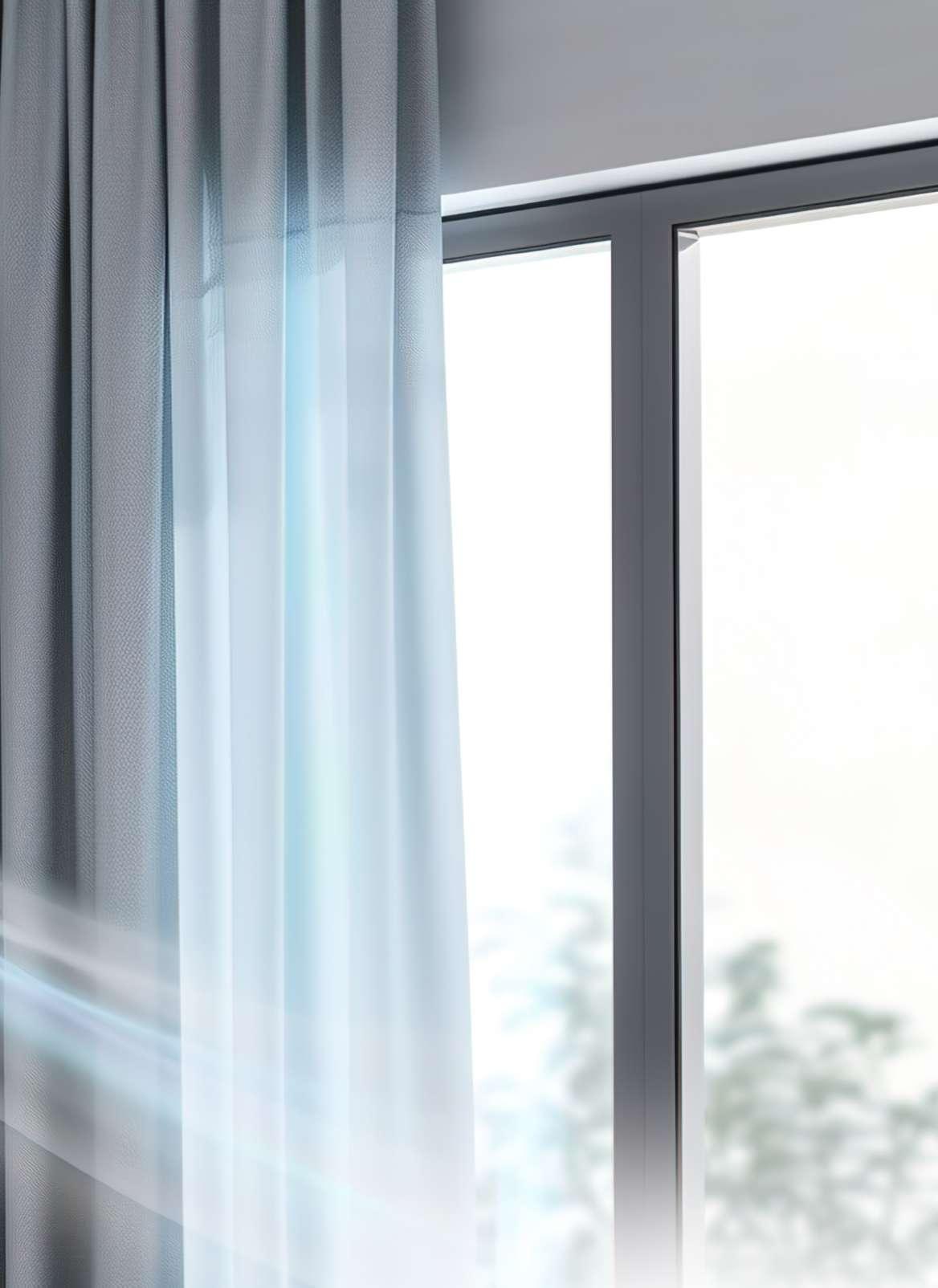




¾ Use a clean, dry cloth to wipe off dust on the door.
¾ A mild cleaning solution may be used to clean the door; avoid using strong or corrosive chemicals.
¾ Do not allow heavy, hard, or sharp objects to hit the door to avoid chipping or scratching the surface.
¾ The main entrance door is fire-rated and has an automatic closing mechanism; do not tamper with or remove its automatic hinges.
¾ Do not slam the door, as this may damage the hinges and reduce the door’s lifespan.





¾ It is recommended to hire a professional technician to regularly inspect and maintain door locks.
¾ Regularly apply suitable lubricant to door and window hinges to ensure smooth operation and avoid squeaking or jamming.


¾ Clean only with a clean, dry cloth. Avoid using wet cloths or those containing strong chemicals that may damage the handle’s surface.
¾ Do not use corrosive cleaning solutions, as they can remove the protective coating, cause oxidation, or fade the color of the door handle.


¾ Clean the aluminum frame with a soft cloth combined with mild detergent or soap to maintain its shine and long-lasting durability.
¾ Regularly clean the glass using a soft chamois and specialized glass cleaner to prevent dust buildup and discoloration.
¾ Before closing the sliding door, ensure the lock latch is released (pressed down) to avoid damaging the latch.
¾ Do not use newspaper to clean tinted glass, as it may scratch the glass surface.
¾ Avoid strong impacts on the aluminum frame or glass with heavy or sharp objects, as this may cause dents, chips, scratches, or cracks.

¾ Keep cabinet doors dry and clean to ensure durability.
¾ Clean with a soft, clean, slightly damp cloth. Avoid overly wet cloths, as moisture can seep into joints and cracks, causing swelling and deformation.
¾ Keep metal parts dry to prevent rust or damage.
¾ Limit exposure to hot steam, as it may damage kitchen cabinet doors.
¾ Avoid impact with sharp objects to prevent chipping, scratching, cracking, or damage.
¾ Do not use solvent based cleaners on cabinet surfaces or metal parts, as they may shorten the lifespan of the materials.
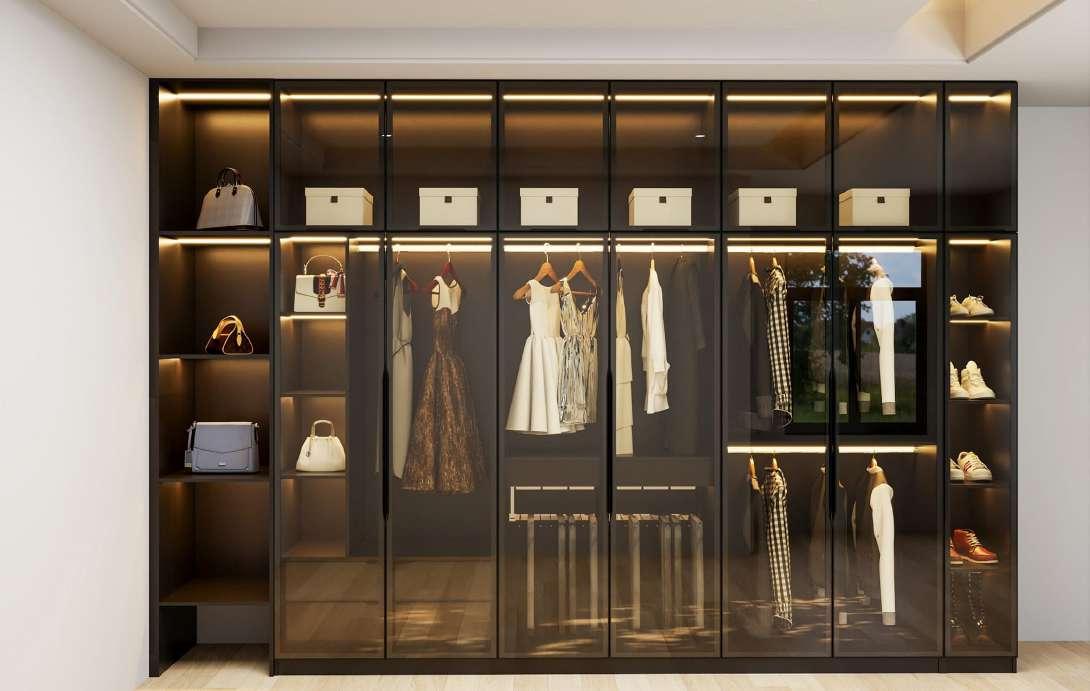

¾ Clean using a non-corrosive cleaning solution, then rinse with water and dry with a soft cloth.
¾ Use a damp soft cloth to wipe away dust and dirt, and avoid leaving standing water on the surface.
¾ Do not use steel wool, green scouring pads, or other abrasive materials, as they can scratch the countertop surface.
¾ Avoid contact with strong chemicals such as nail polish, paint remover, gasoline, or turpentine, as they may cause serious damage.
¾ Be careful when using knives and metal objects; avoid dropping them onto the sink or countertop to prevent scratches or chips.
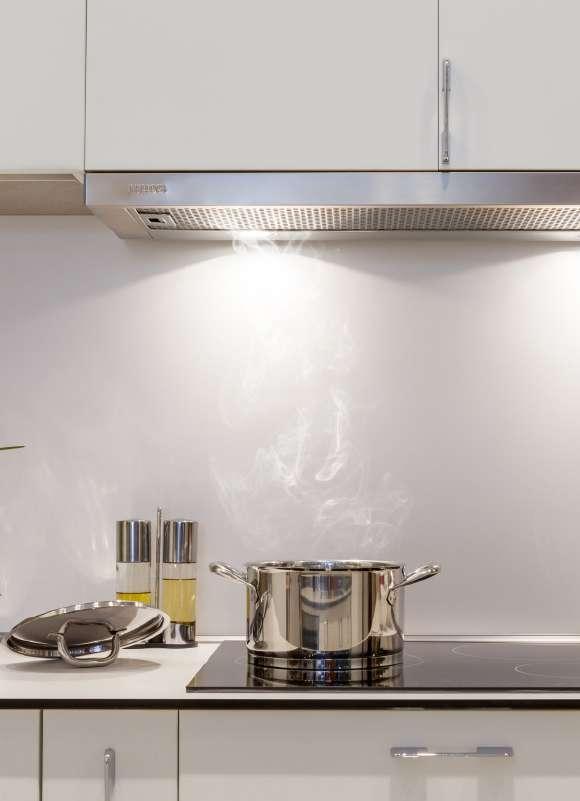



¾ Read the user manual carefully to understand proper cleaning and maintenance procedures.
¾ Turn off the power before cleaning to ensure safety.
¾ Clean the metal grease filters regularly with soapy water, depending on usage frequency (recommended every 2 to 4 weeks).
¾ Wipe the exterior with a soft sponge soaked in soapy water; avoid abrasive materials that may scratch the surface..
¾ Always supervise when frying or sautéing to prevent fire or explosion hazards.
¾ Do not wet the motor or any electrical parts during cleaning.
¾ Avoid cooking with high flames directly under the range hood, as it may cause damage or fire hazards.
¾ Only contact the supplier for repairs; do not disassemble or tamper with the system yourself.



¾ Clean the sink with a soft scrub pad or damp cloth using common cleaning solution or powder, then rinse thoroughly.
¾ Clean regularly to prevent stains, grease, or hard water deposits.
¾ After use, dry the sink with a clean towel to avoid water spots.
¾ Do not use steel wool, green scouring pads, or any abrasive materials as they may scratch the sink surface.
¾ Avoid cleaning agents containing chlorine, acid, or harsh chemicals as they may damage the protective coating, leading to rust or rapid deterioration.



¾ Before handover, the contractor has cleaned all pipes and water traps to ensure the system works properly.
¾ Do not flush trash, non-degradable toilet paper, or other objects down the toilet or drainage system, as this may cause blockages or damage.
¾ If the system is clogged due to the above reasons, the unit owner will be responsible for the repair and maintenance costs.



¾ Clean the toilet using a soft cloth combined with a specialized cleaning solution for effective cleaning and disinfection.
¾ Do not flush non-degradable items such as sanitary pads, cement, sand, or construction debris into the toilet, as they may cause serious blockages.
¾ Do not stand or step on the toilet seat or lid to avoid damage or safety risks during use.
¾ Use a soft cloth and soap to clean the washbasin to keep the surface clean without scratching it.
¾ Do not pour cement, sand, construction debris, or paint into the washbasin, as these materials can clog the drainage system.
¾ Regularly clean the U-shaped pipe (P-trap) under the washbasin to prevent blockages and odors.
¾ Avoid using strong acidic solutions to clean the washbasin, as they can damage the surface.

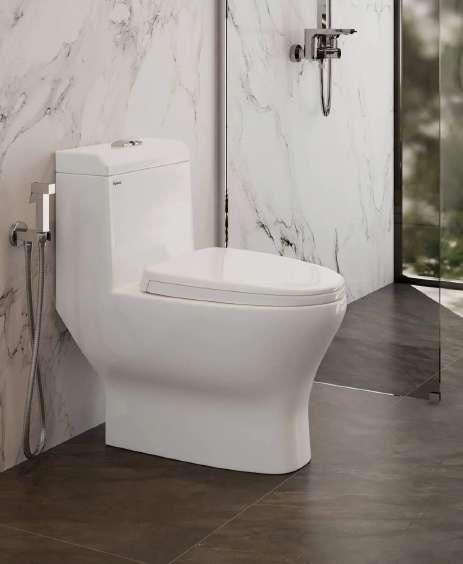

¾ Clean bathroom fixtures and faucets with specialized cleaning agents or polishing cream to maintain shine and prolong their lifespan.
¾ Use an old toothbrush to remove buildup under the faucet to keep it clean and functioning properly.
¾ Do not use acid, strong chemicals, or corrosive cleaners as they may damage the protective coating of the fixtures.
¾ After each use, clean the bathroom fixtures to remove residue from shower gel and shampoo to avoid long-term surface damage.


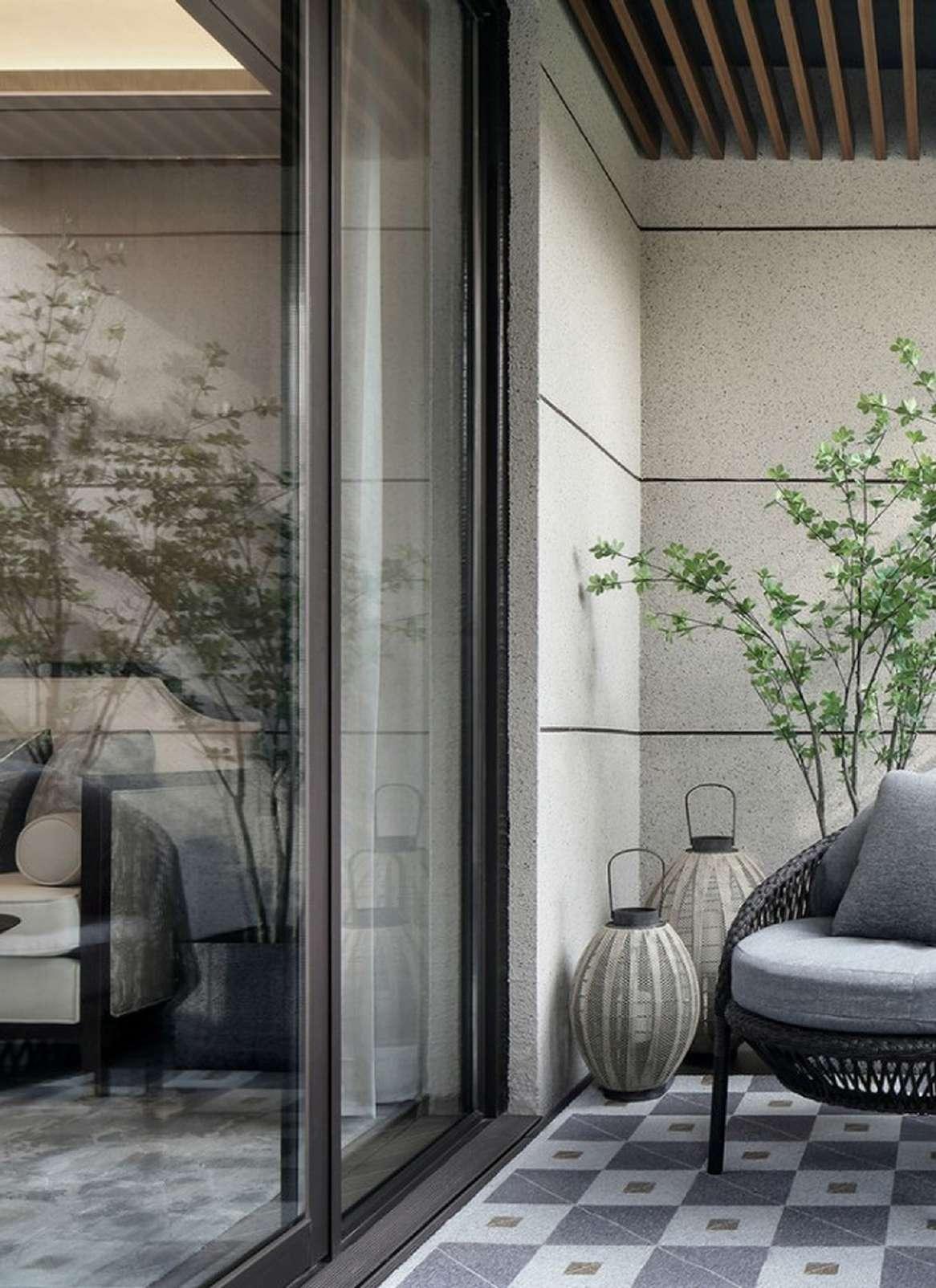

Residents should regularly clean floor drains and strainers to ensure the drainage system is not clogged. Additionally, balconies and rooftops should be cleaned periodically to maintain hygiene and avoid water accumulation, which may affect the building’s structure.


We sincerely thank our Residents for taking the time to read and follow the important guidelines outlined in this Handbook. These rules and instructions are designed to create a safe, convenient, and standardized living environment at Scenia Bay.
Please keep this Handbook and related documents in a safe place, and ensure all family members understand and follow the regulations to enjoy a comfortable, convenient, and safe living space.
With a commitment to continuously improve service quality and enhance the living experience for Residents, the Management Office will proactively update, revise, or supplement the rules when necessary to ensure an ideal, standardized environment in line with Scenia Bay’s premium standards. All updates will be officially communicated to Residents as soon as possible.
Once again, we sincerely appreciate your cooperation and companionship, and we hope to bring you a truly distinguished and premium living experience at Scenia Bay!


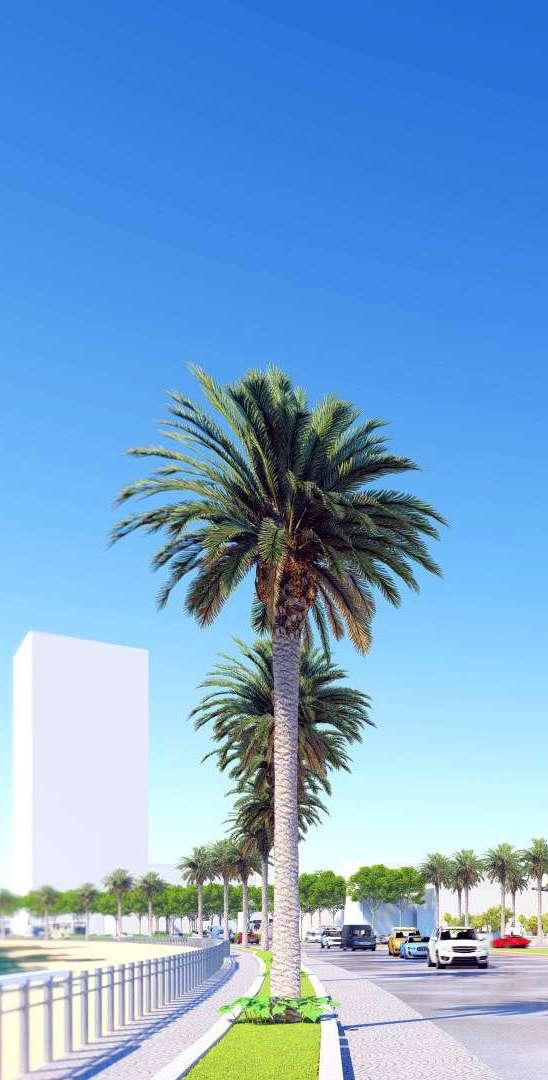







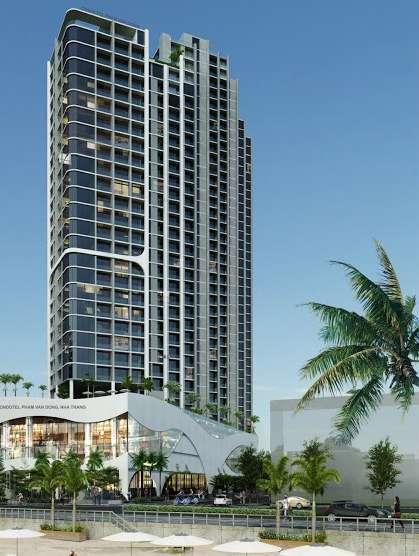









06:00 - 21:00
06:00 - 21:00
08:00 - 17:00
07:00 - 21:00 Up to 1 month
At least 3 days Written notice
Deposit is refundable without interest after inspection by the Management Office, provided no damage/cleaning issues arise. Refundable without interest after inspection by the Management Office, provided no damage/cleaning issues arise.



